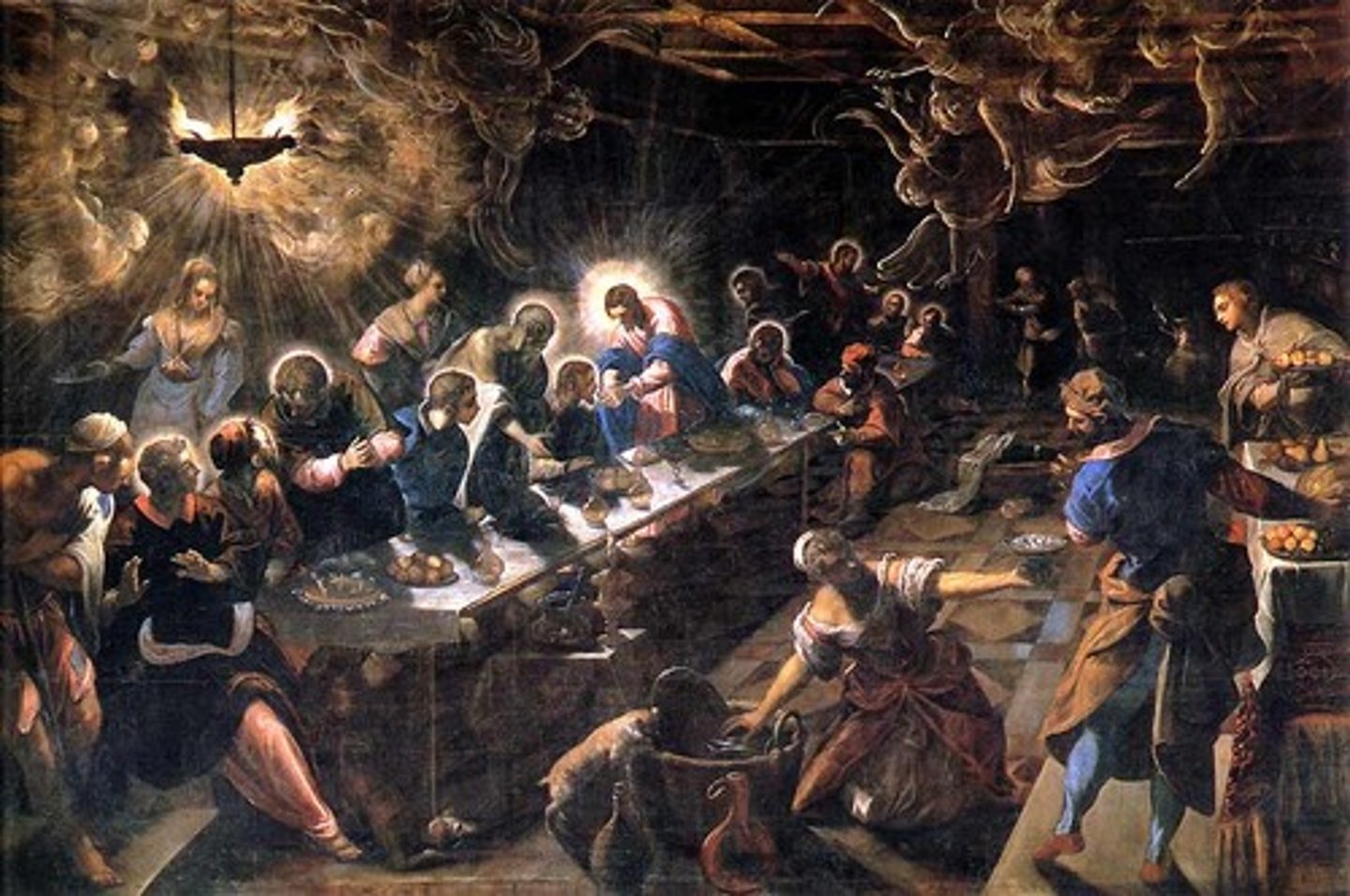Art History 225b Italian Renaissance Art
1/79
There's no tags or description
Looks like no tags are added yet.
Name | Mastery | Learn | Test | Matching | Spaced |
|---|
No study sessions yet.
80 Terms
Renaissance
term denoting the period of humanistic revival of classical art, architecture, literature, and learning that originated in Italy in the 14th century; literally "rebirth"
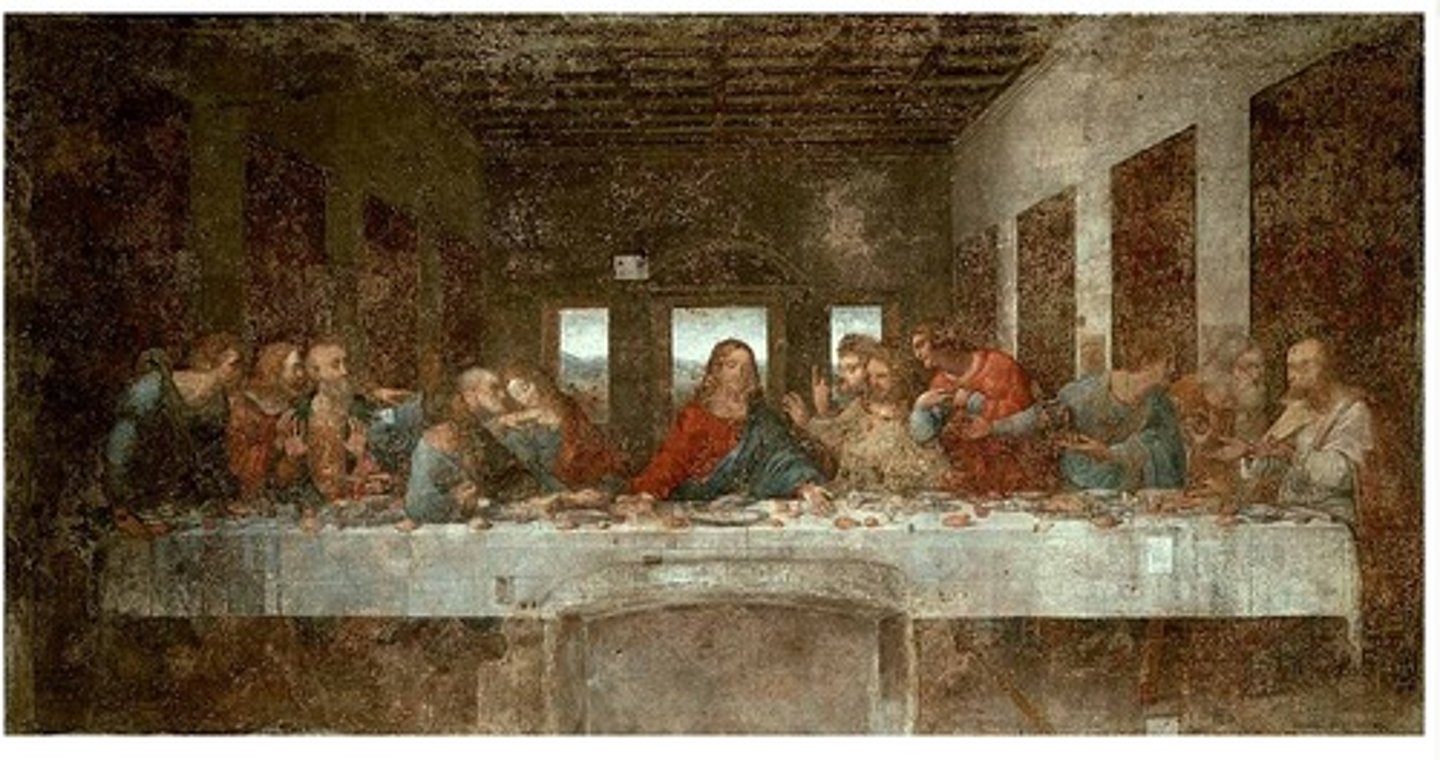
Mannerism
a style of later Renaissance art that emphasized "artifice," often involving contrived imagery not derived directly from nature; often seen as a rebellion against the values of classical order, stability, and symmetry associated with High Renaissance masters like Michelangelo or Raphael
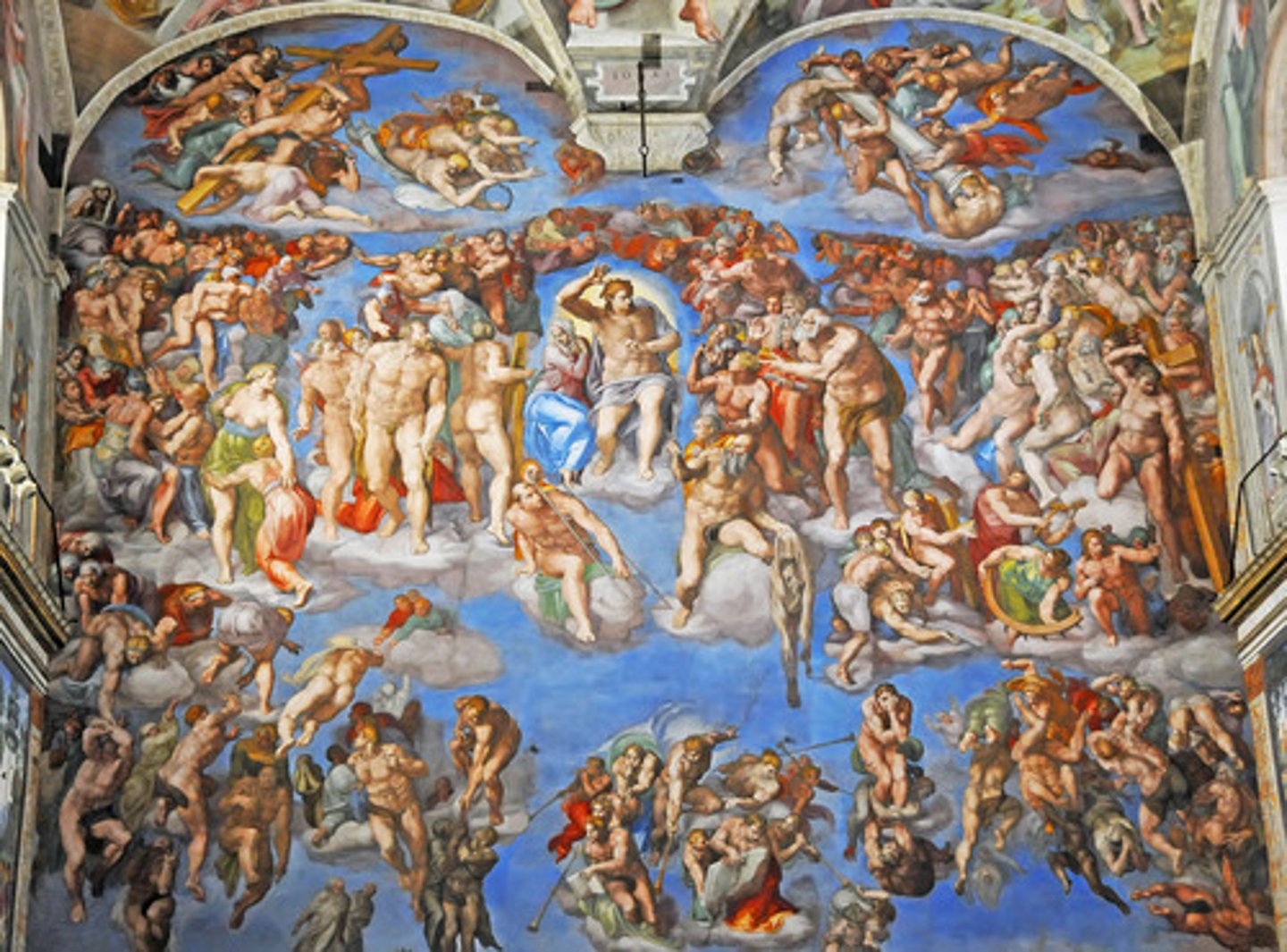
Humanism
A cultural and intellectual movement of the Renaissance that emphasized secular concerns as a result of the rediscovery and study of the literature, art, and civilization of ancient Greece and Rome; return to the idea of man as the measure of all things, focus is on human potential and greatness
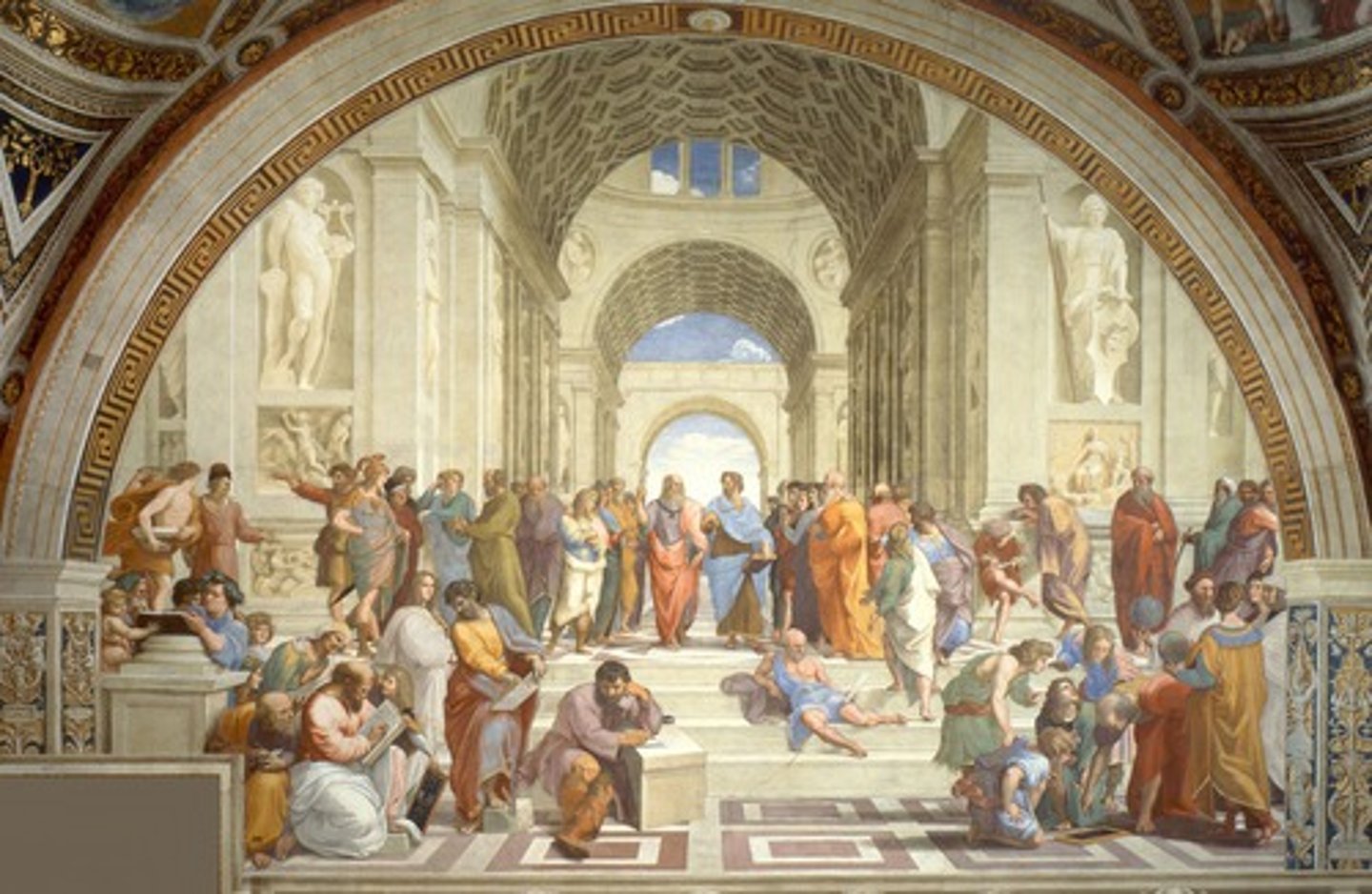
guild
an association of craftspeople; the guilds had great economic power during the medieval and early Renaissance periods as it they set standards and controlled the selling and marketing of its members' products, and as they provided economic protection, group solidarity, and training in the craft to its members
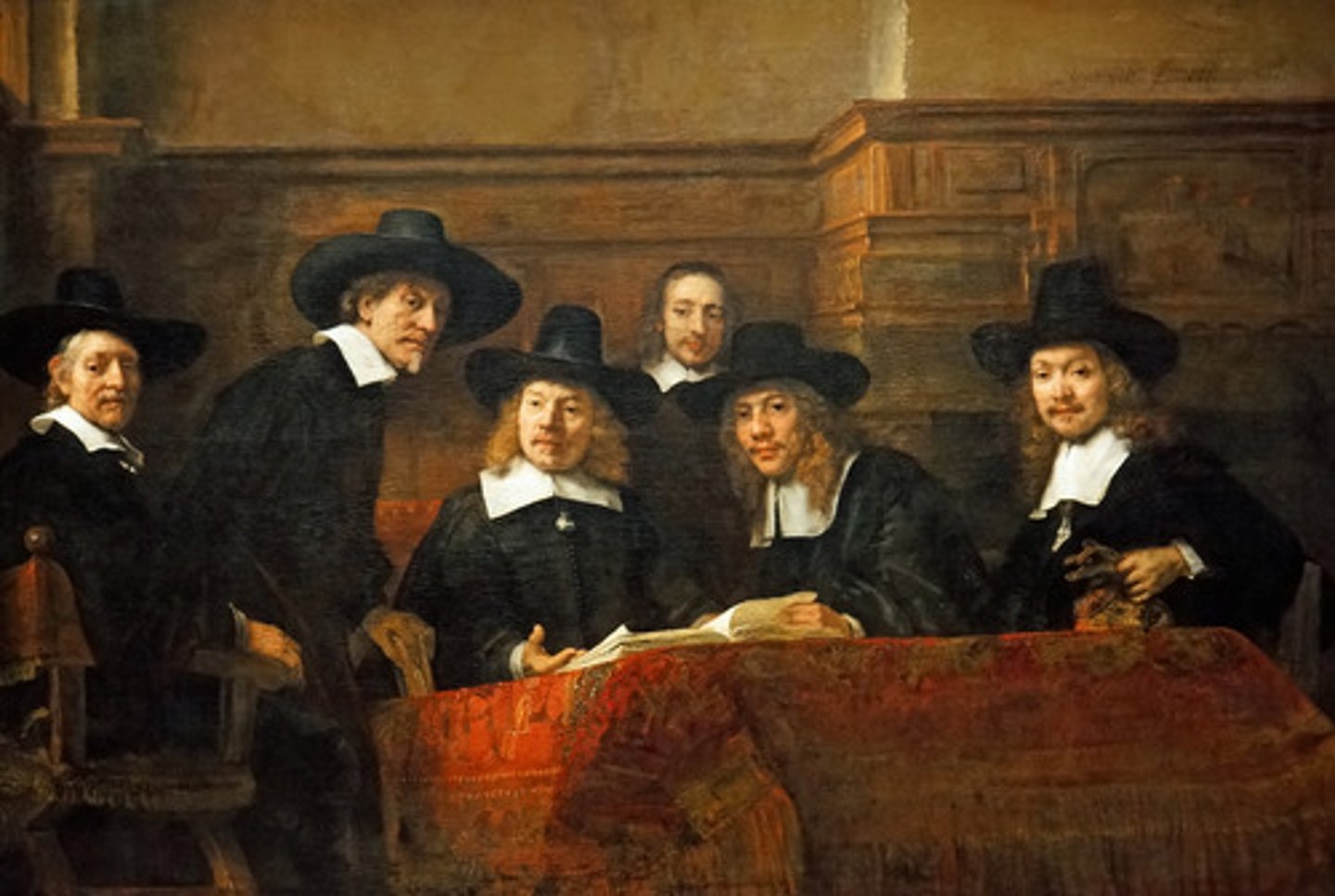
quatrefoil
a four-lobed decorative pattern common in Gothic art and architecture
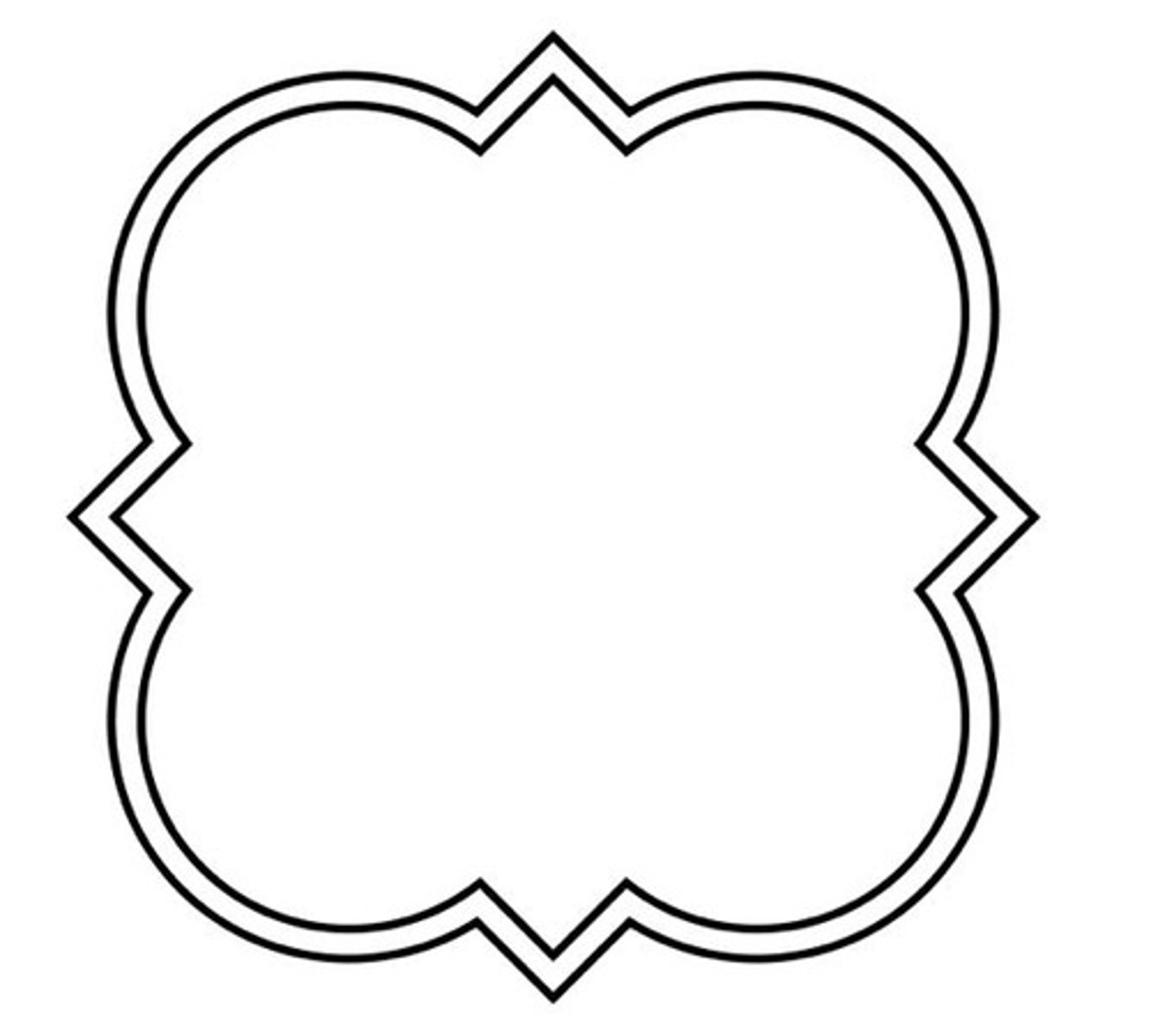
relief sculpture
a 3-D image or design whose flat background surface is carved away to a certain depth, setting off the figure; called low or high relief depending upon the extent of projection of the image from the background
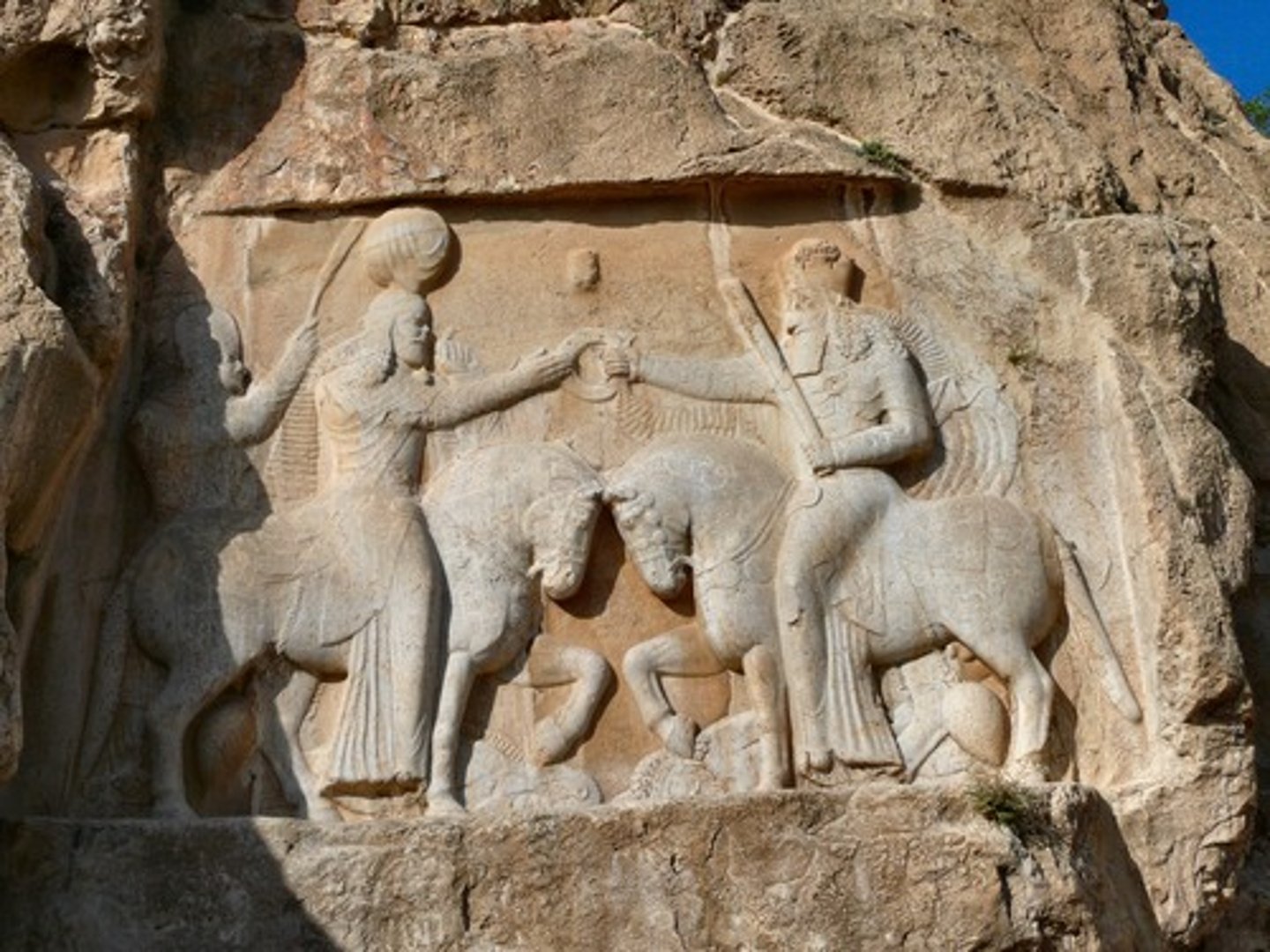
sculpture in-the-round
three-dimensional sculpture that is carved free of any attaching background or block
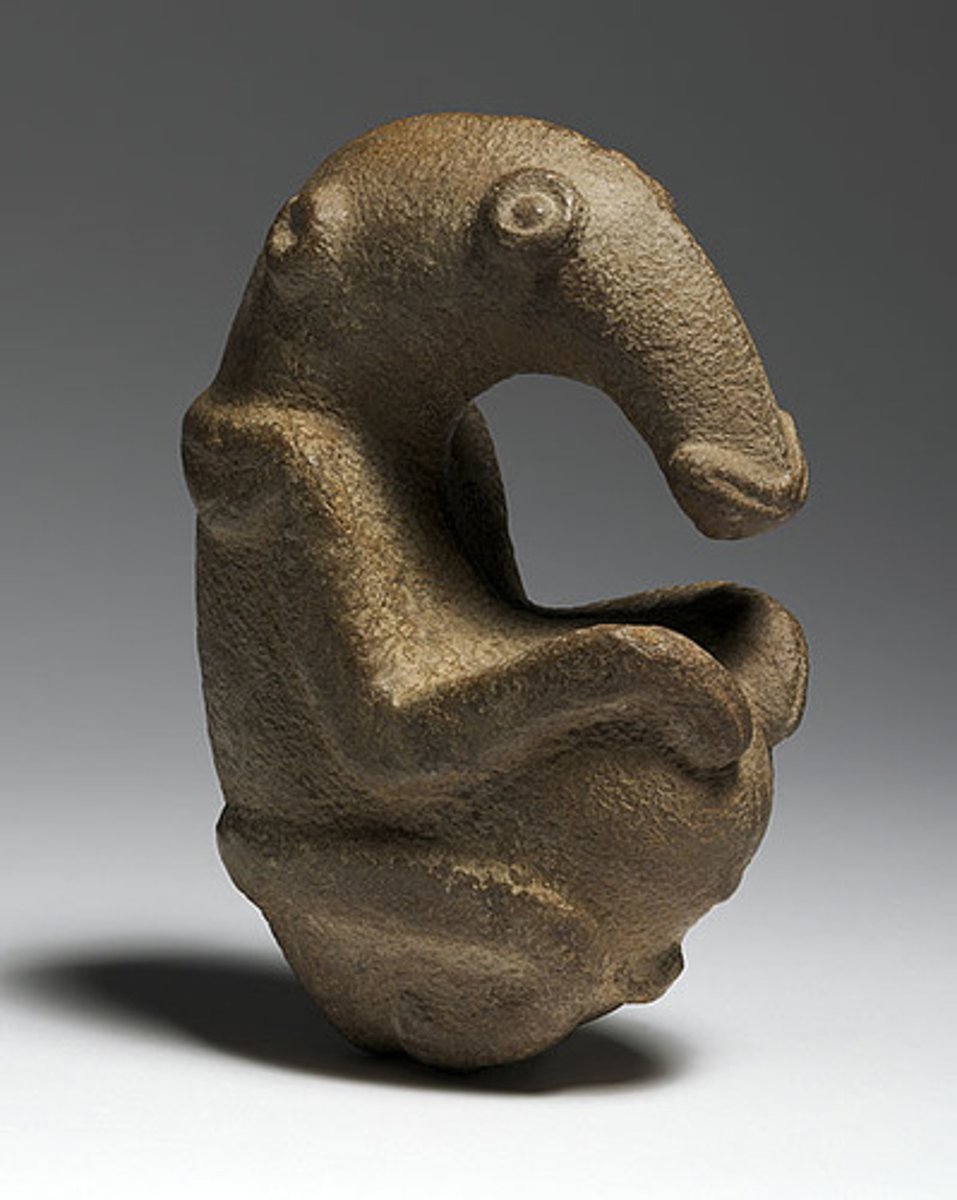
niche
an ornamental recess in a wall or the like, usually semicircular in plan and arched, as for a statue or other decorative object
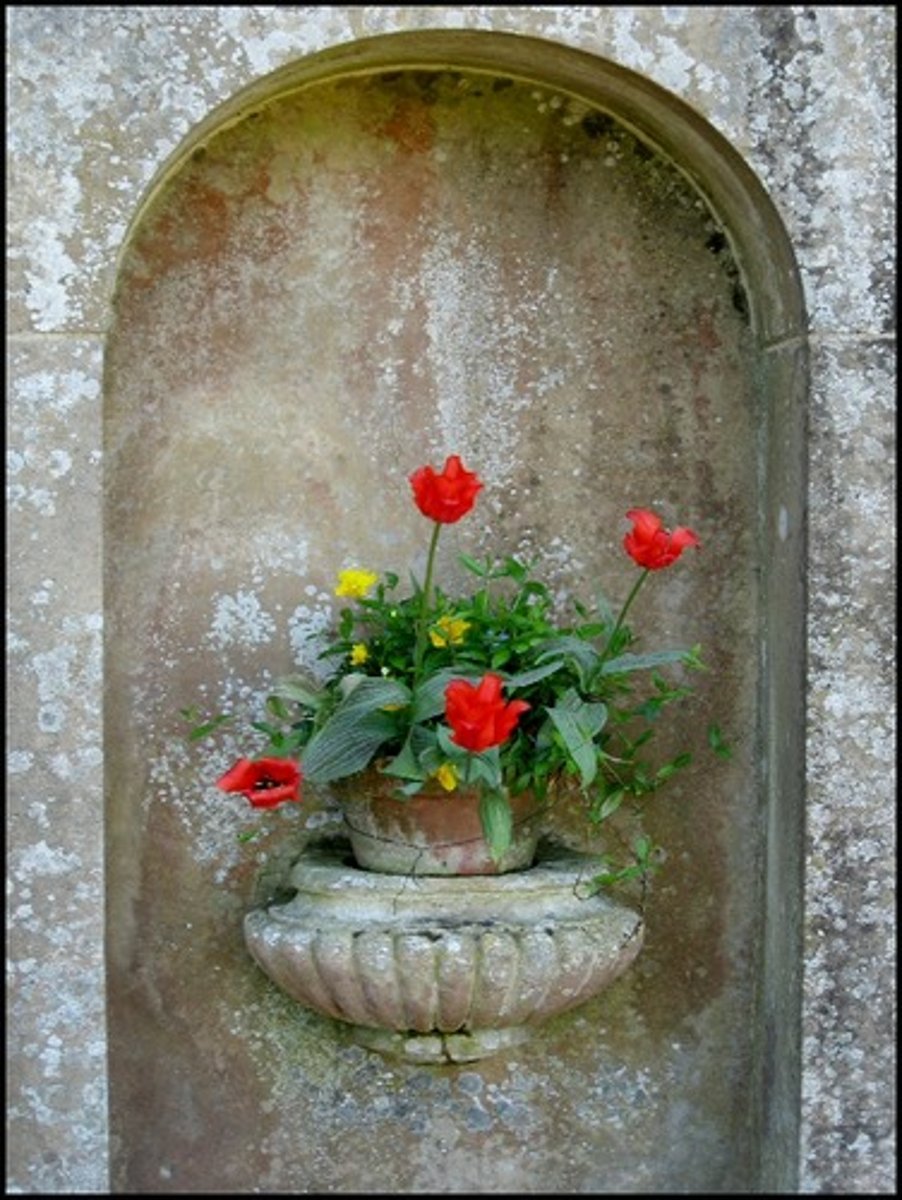
lost wax casting method
a process of casting in which a clay mold is built up around a pattern of wax and then baked so as to melt and drain off the wax. The molten metal (bronze, copper, etc.) is then poured into the cavity.
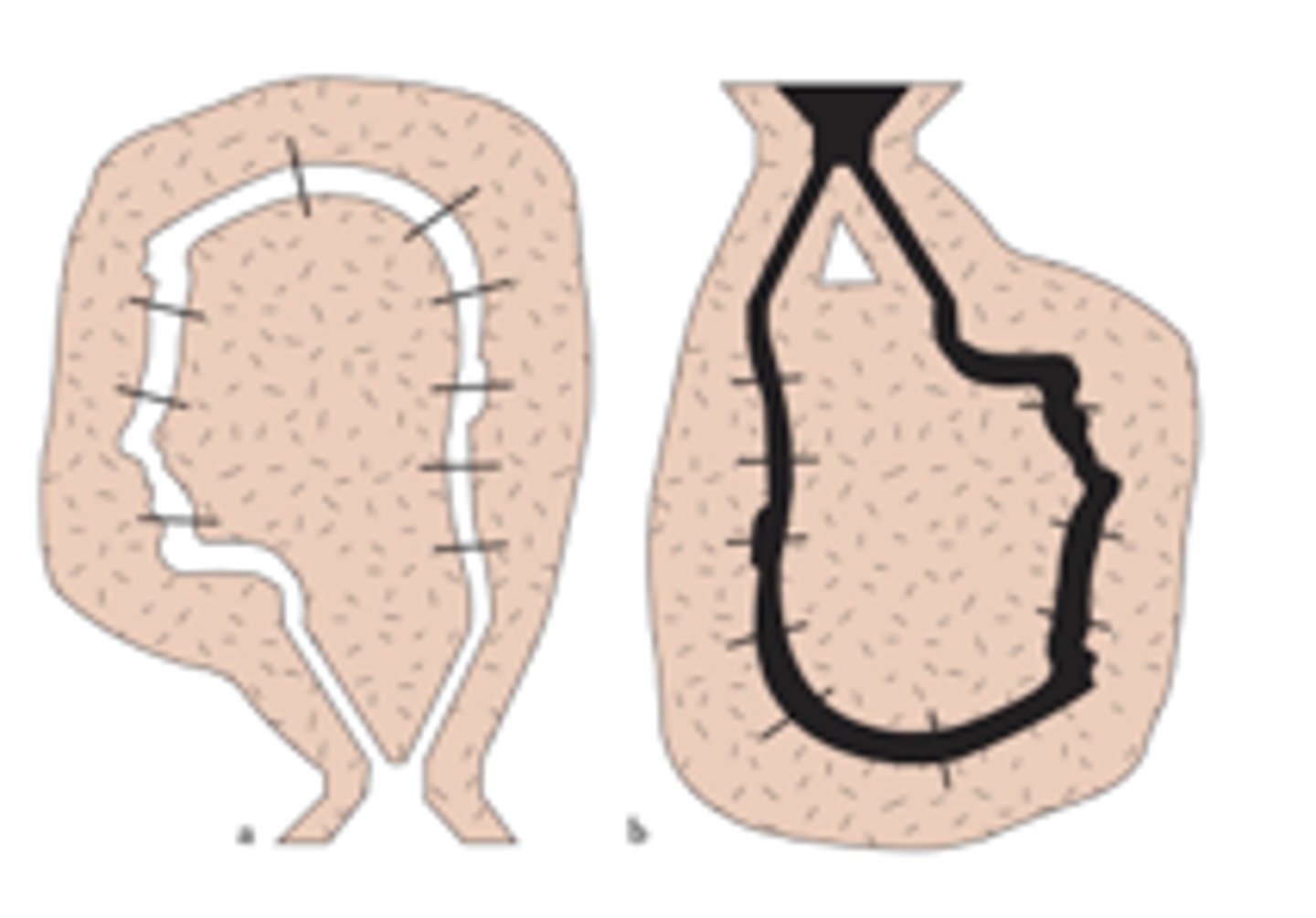
gilt/gilding
the process of applying gold leaf or gold paint
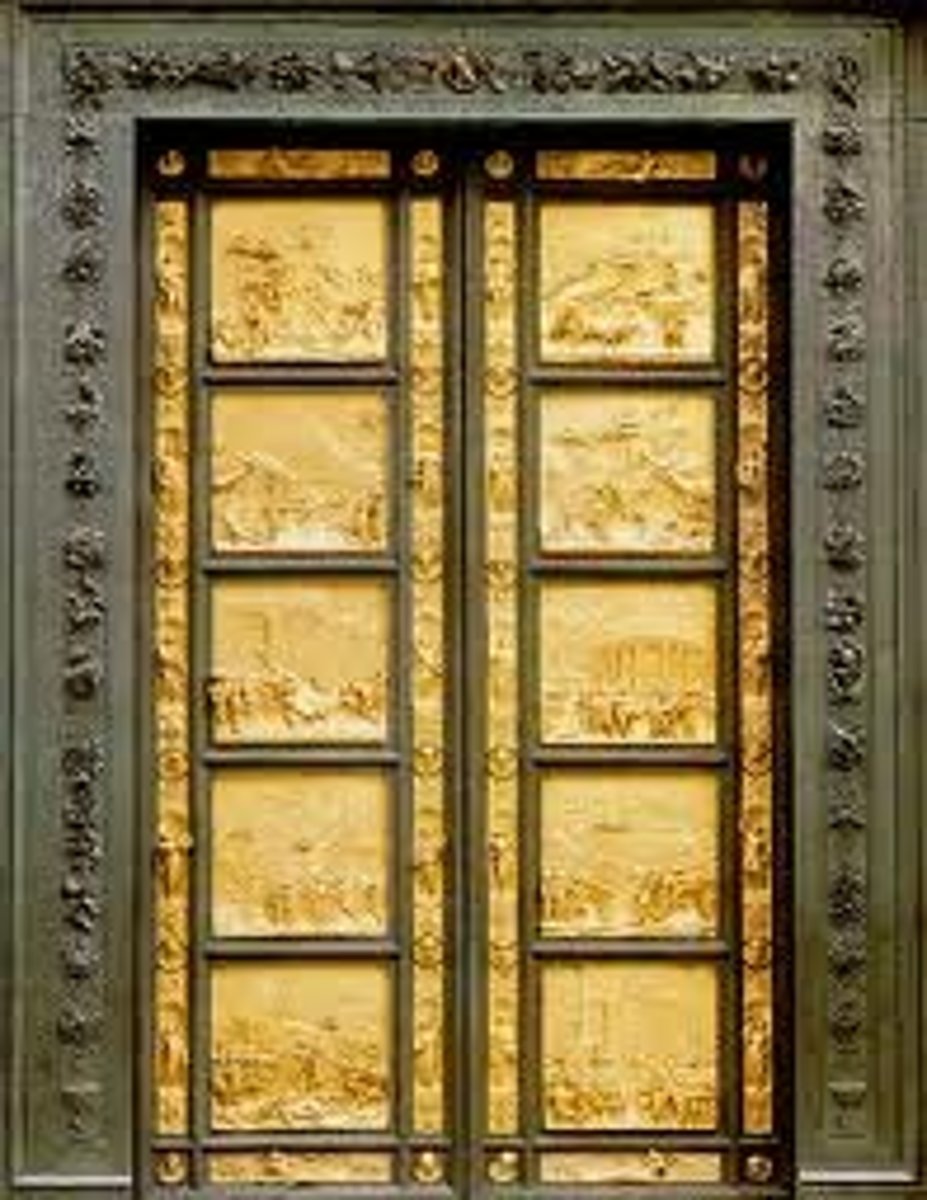
contrapposto
term used to describe the twisted pose resulting from parts of the body set in opposition to each other around a central axis; sometimes referred to as a weight-shift, as the weight of the body tends to be thrown to one foot, creating tension on one side and relaxation on the other
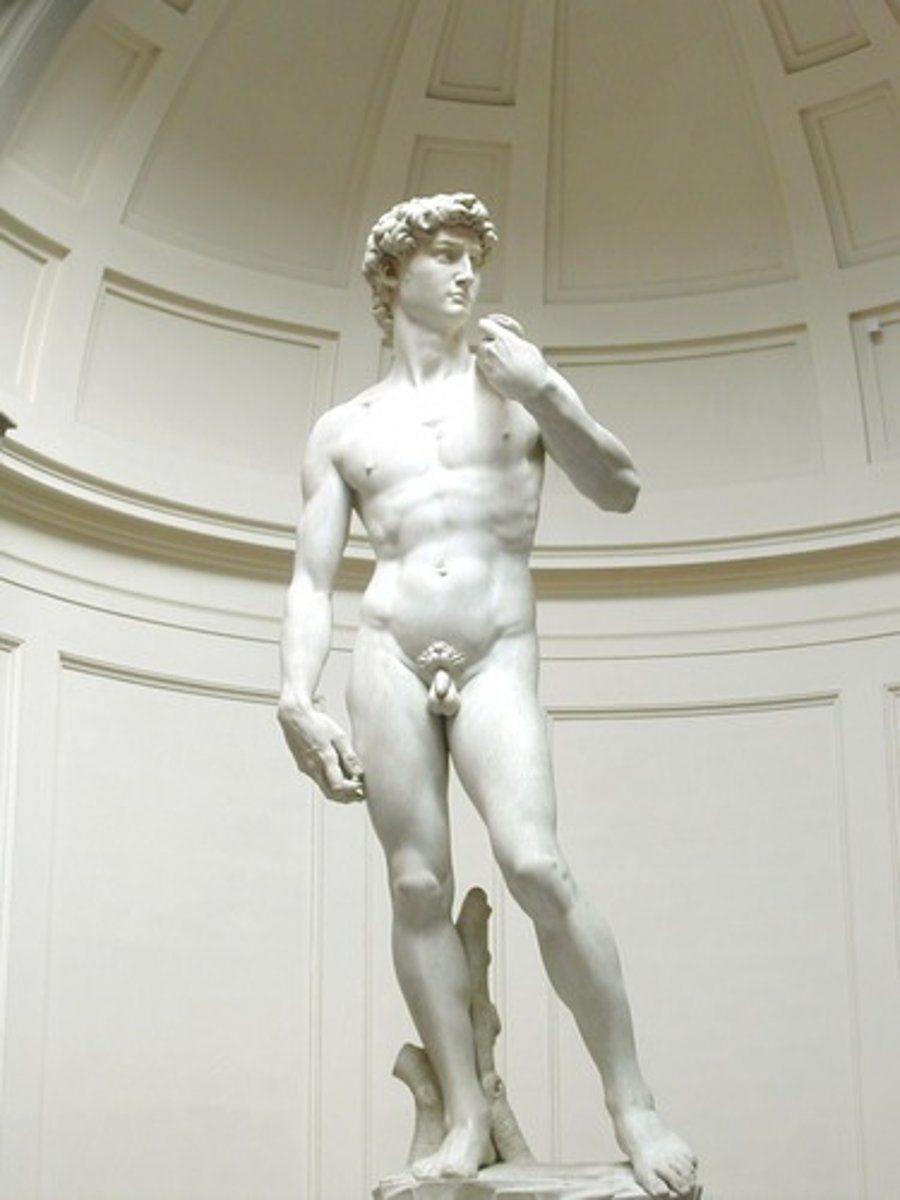
patron saint
a saint regarded as the special guardian of a person, group, trade, country, etc.

buon fresco
painting technique in which water-based pigments are applied to a surface of wet plaster; color is absorbed into plaster becoming part of the wall
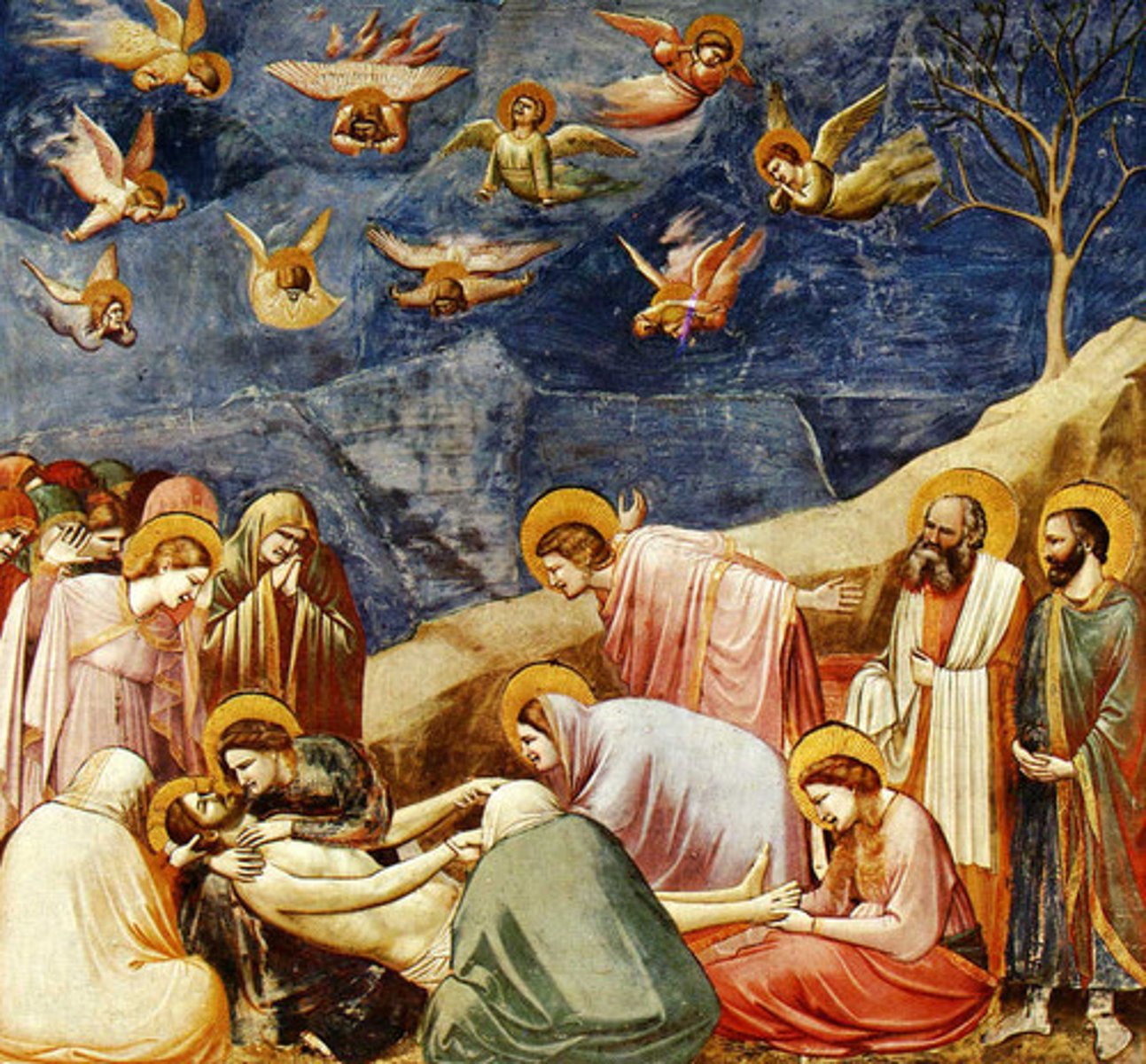
fresco secco
created by painting on dried plaster; color may flake off
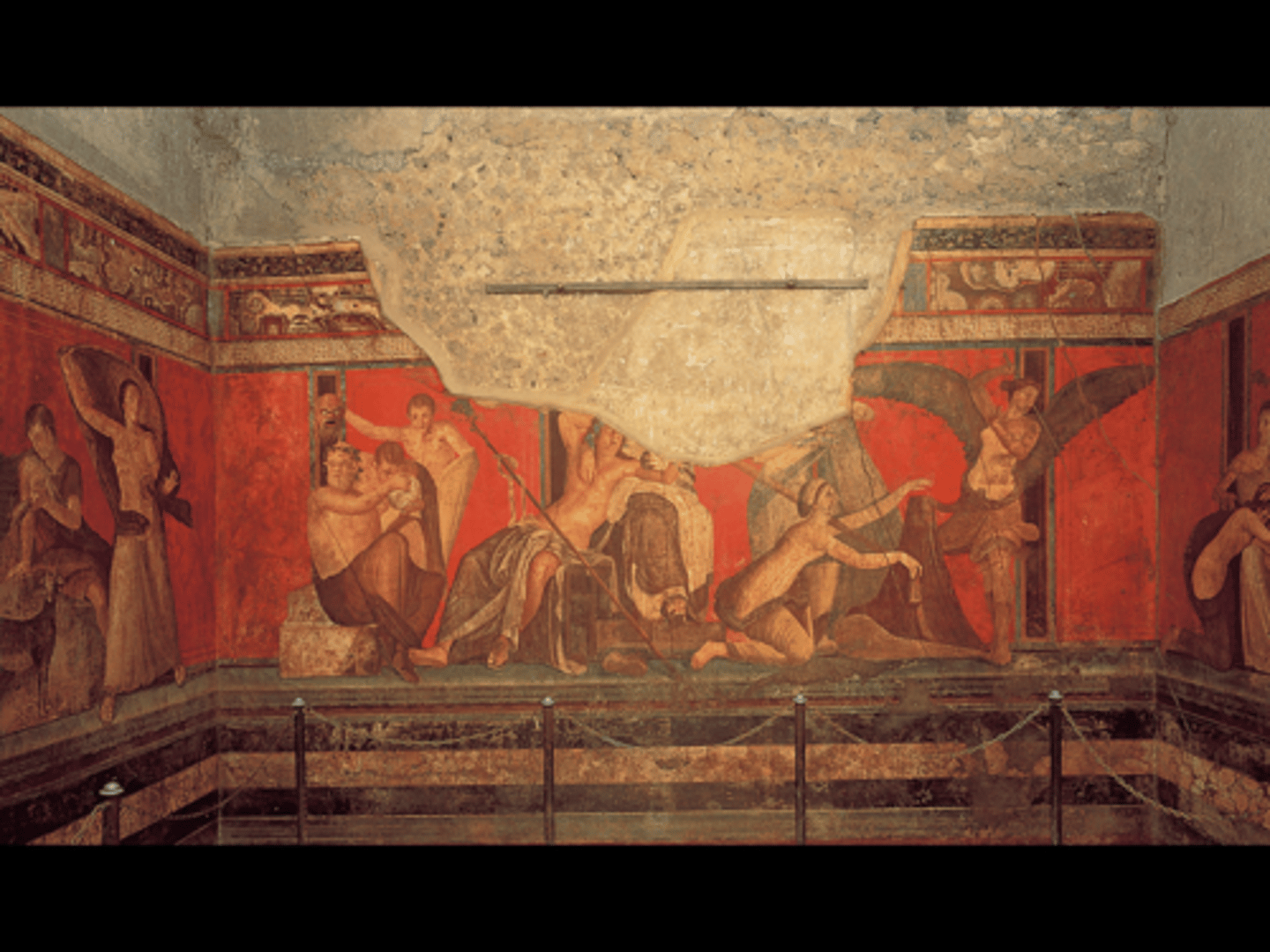
tempera
a painting medium made by blending powdered pigments with egg yolks, water, & an occasional touch of glue
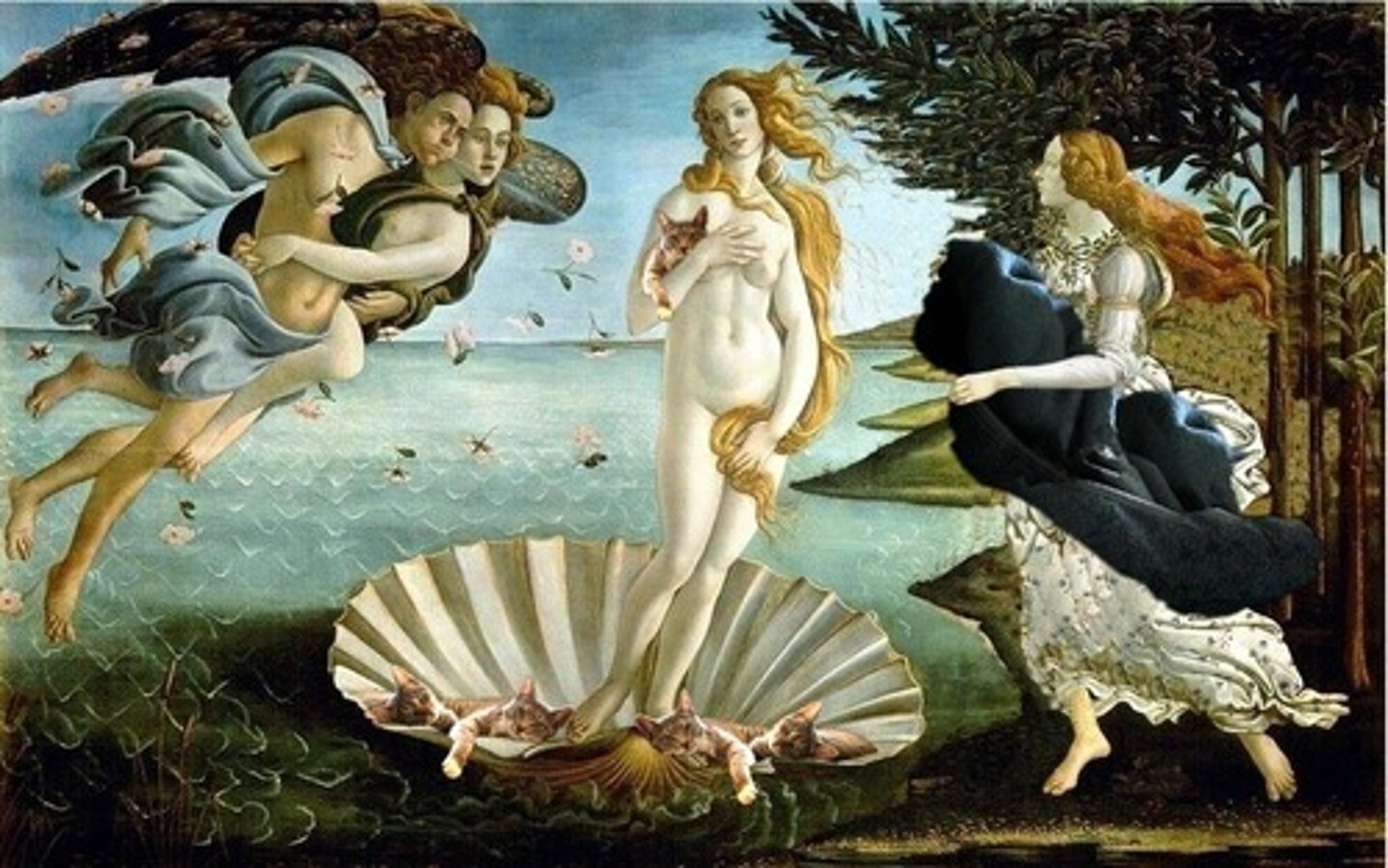
trompe l'oeil
a manner of representation in which the appearance of natural space and objects is re-created with the express intention of fooling the eye of the viewer, who may be convinced that the subject actually exists as a 3-D reality; literally means "fool the eye"
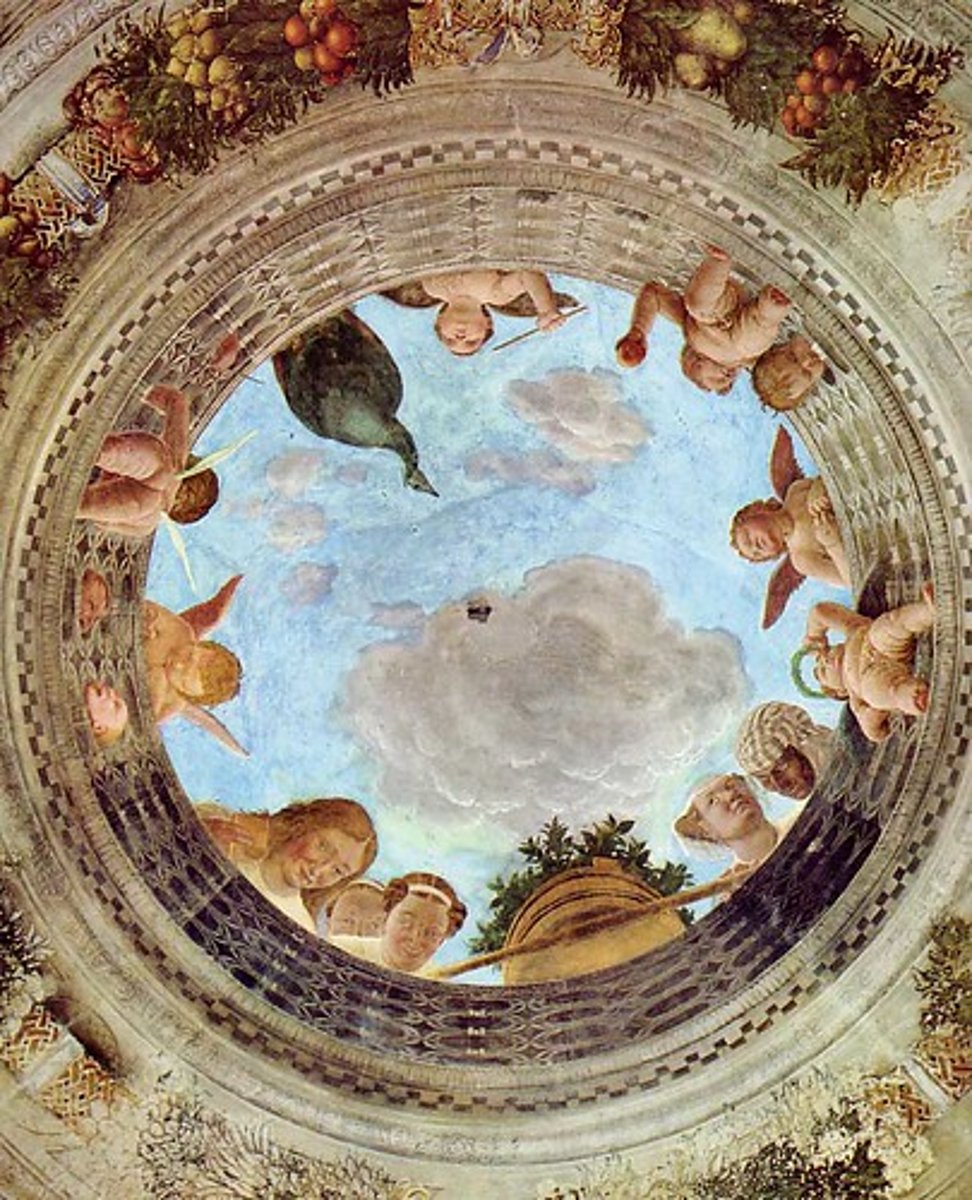
atmospheric perspective
method of rendering the effect of spatial distance by subtle variations in color and clarity of representation
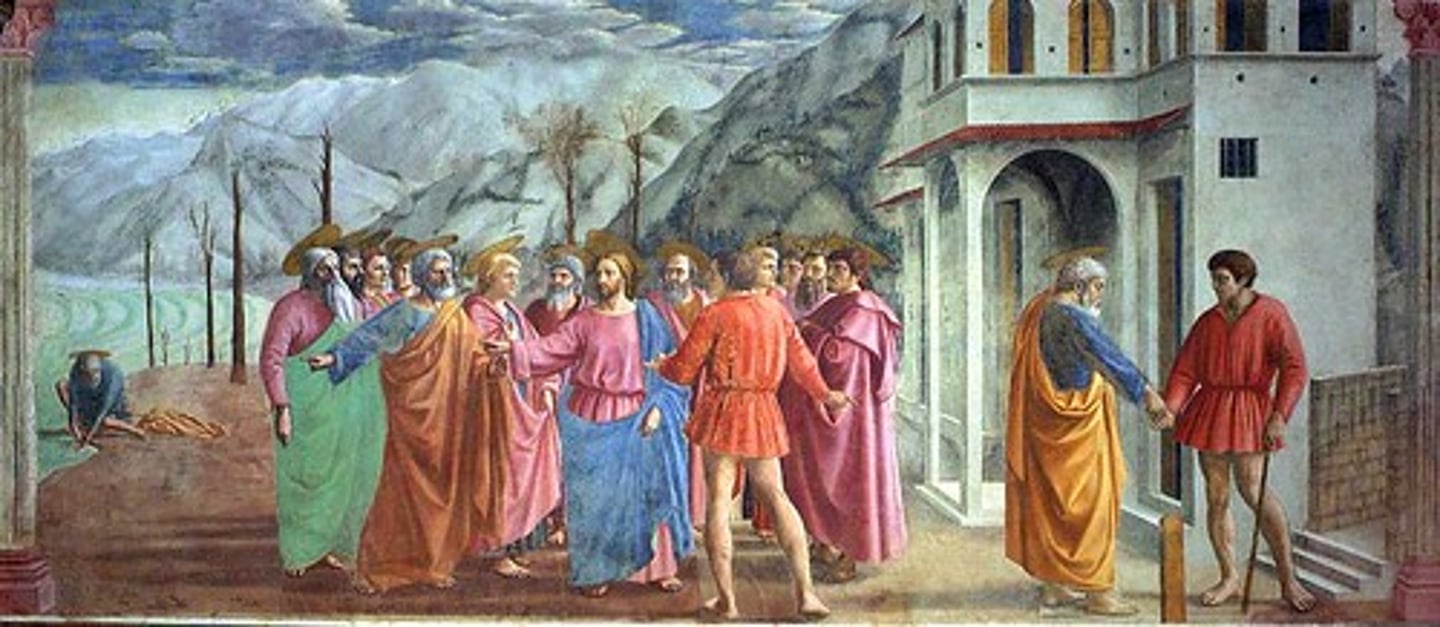
one-point (linear) perspective
a method of creating the illusion of 3-D space on a 2-D surface by delineating a horizon line and multiple orthogonal lines which recede to meet at one or more points on the horizon (vanishing points) giving the appearance of spatial depth; also called scientific or mathematical perspective because its use requires some knowledge of geometry and mathematics, as well as optics
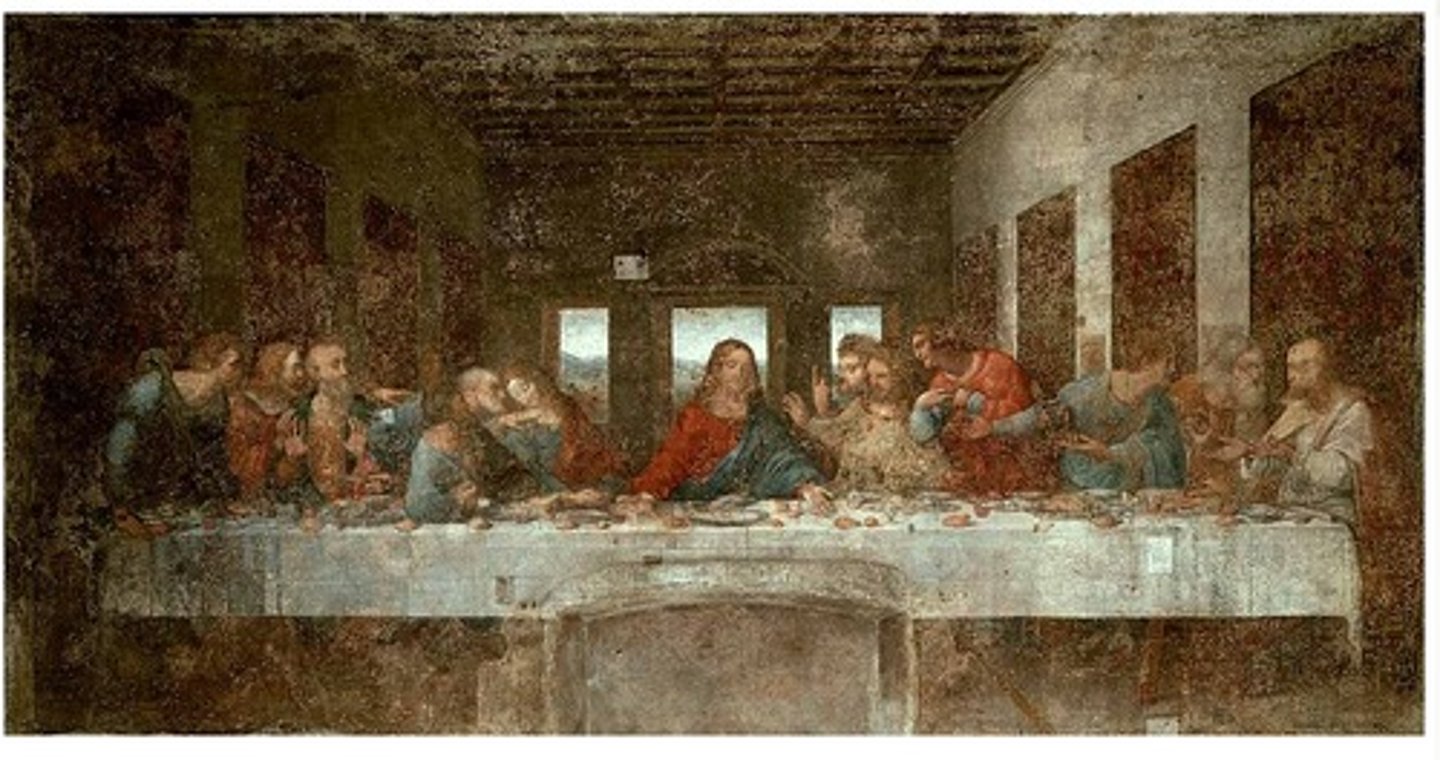
barrel vault
semi-cylindrical in cross section, in effect a deep arch or an uninterrupted series of arches, one behind the other, over an oblong space
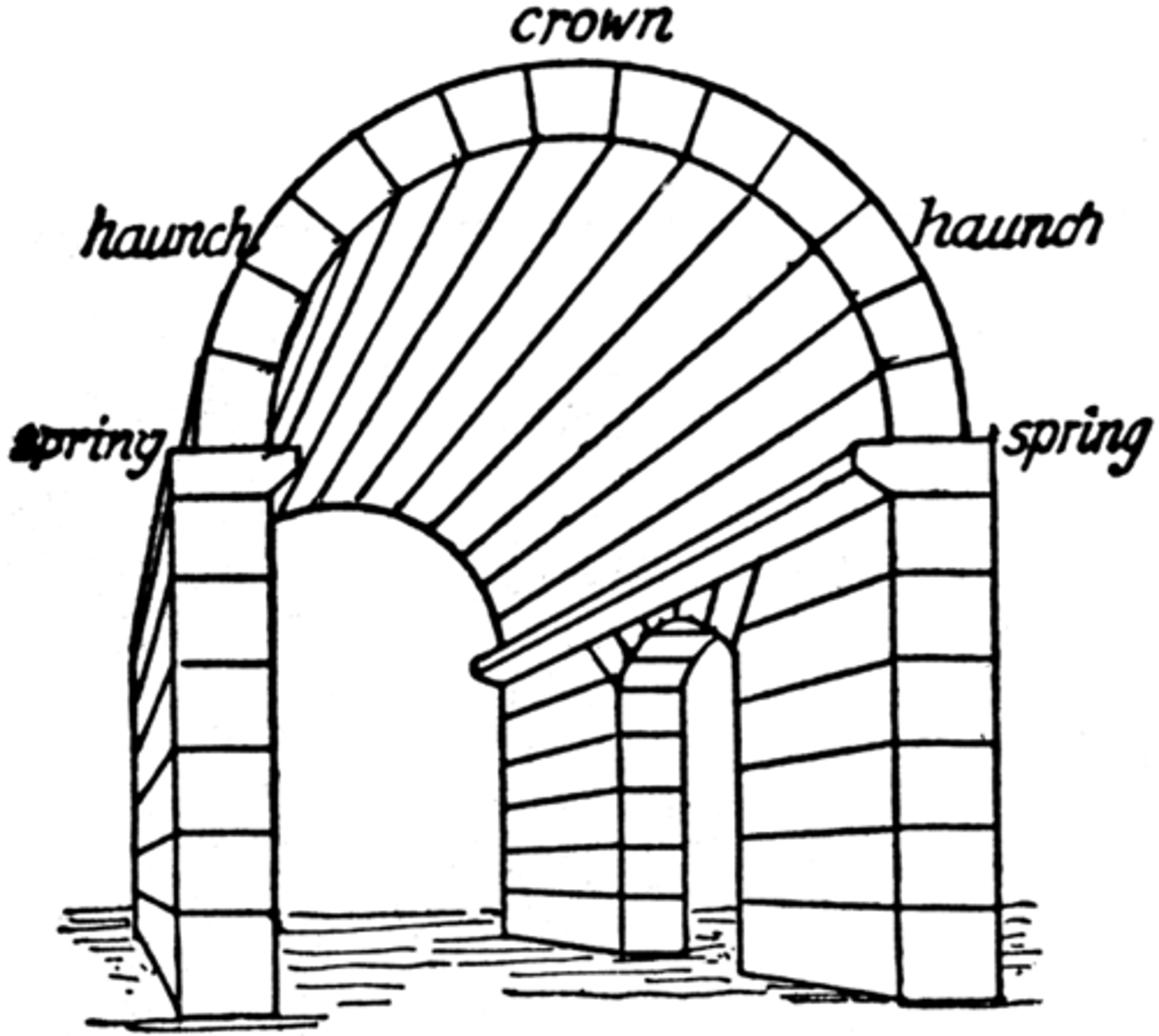
coffer
a sunken panel in a ceiling, often square or rectangular in shape and ornamental
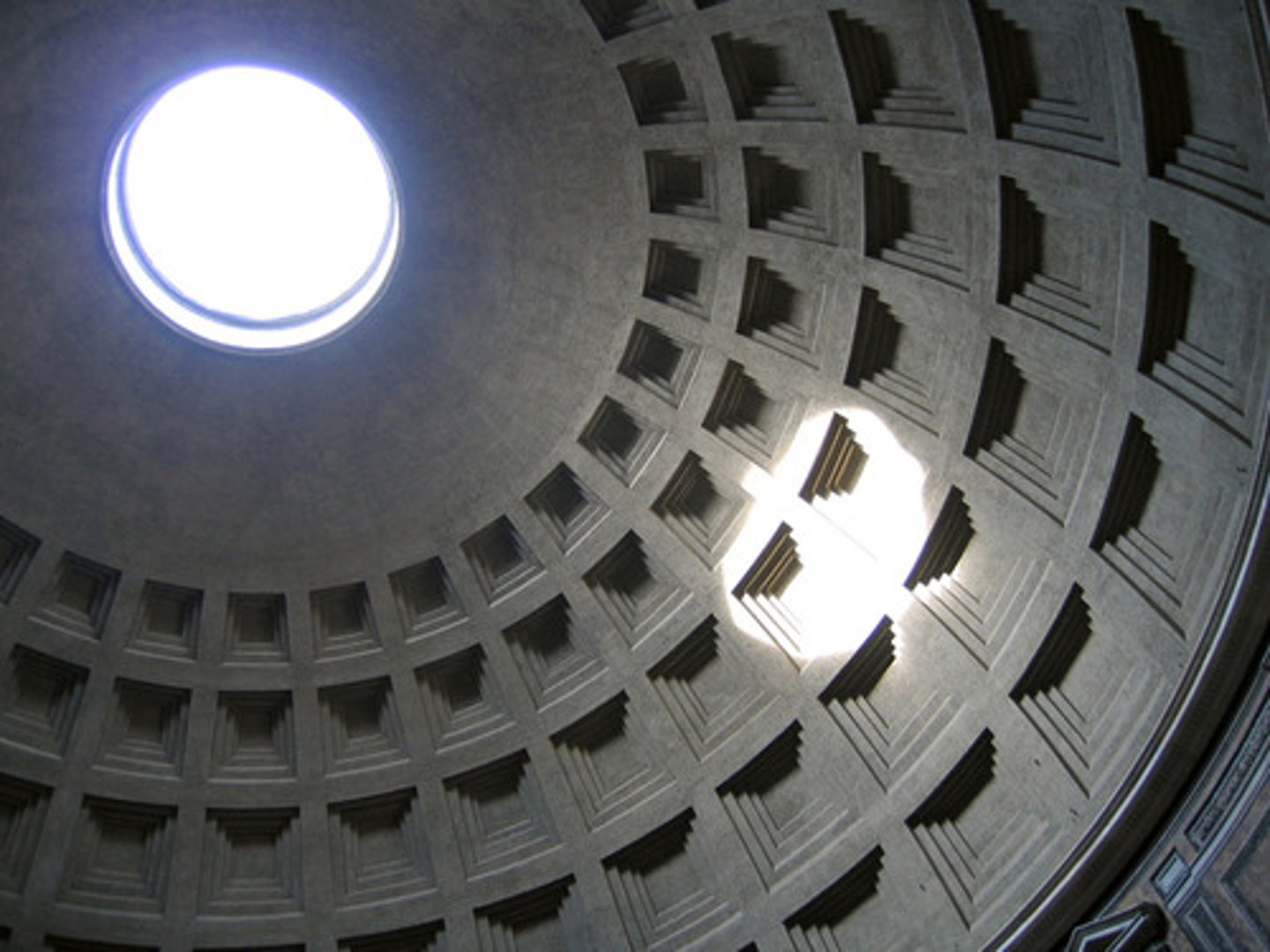
memento mori
an object symbolizing the transience of life; from Latin for "remember that you must die"
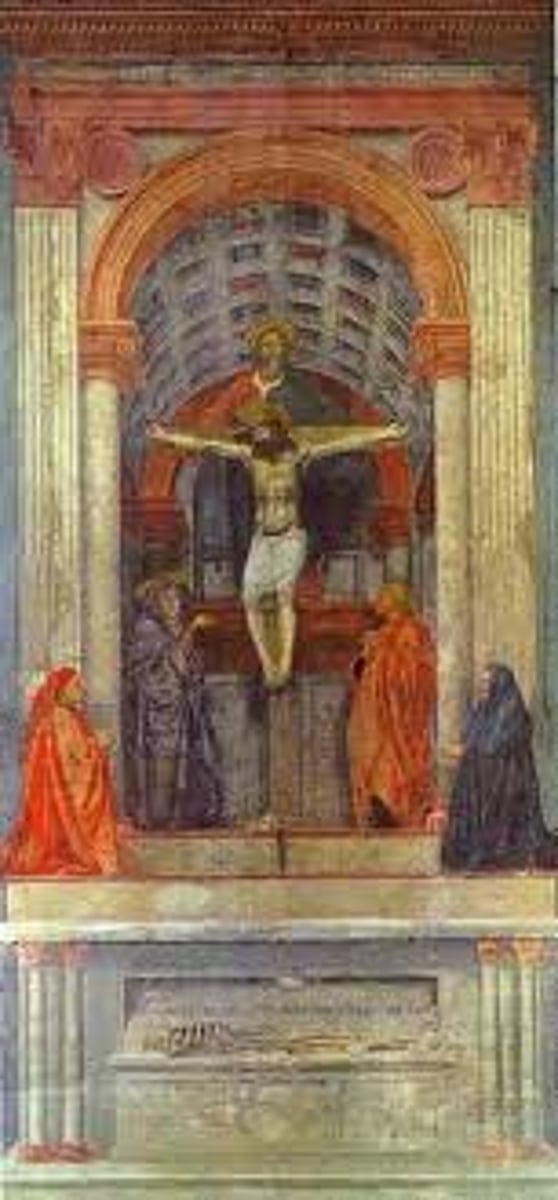
continuous narrative
in art, an episodic representation of a story in which a certain character or characters appear in every scene, and there are no borders separating one episode from the next
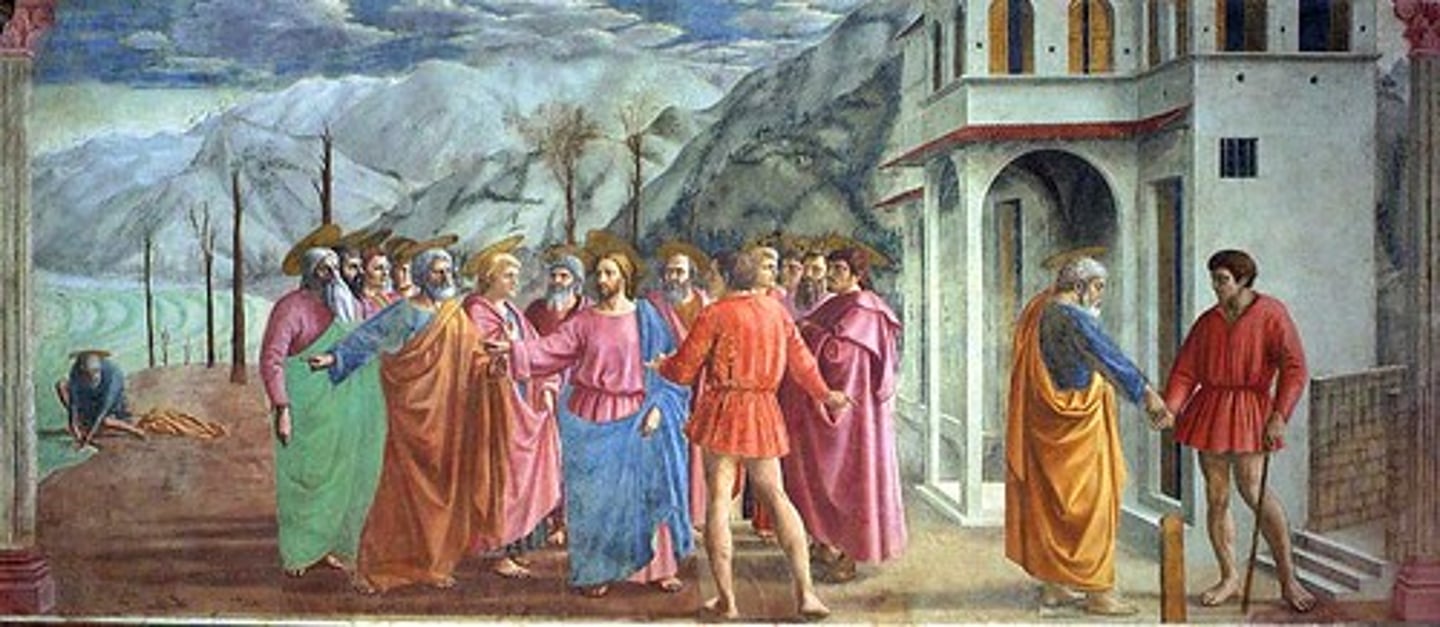
pendentives
spherical triangles between arches that rise to form openings on which a dome rests; method of supporting a dome
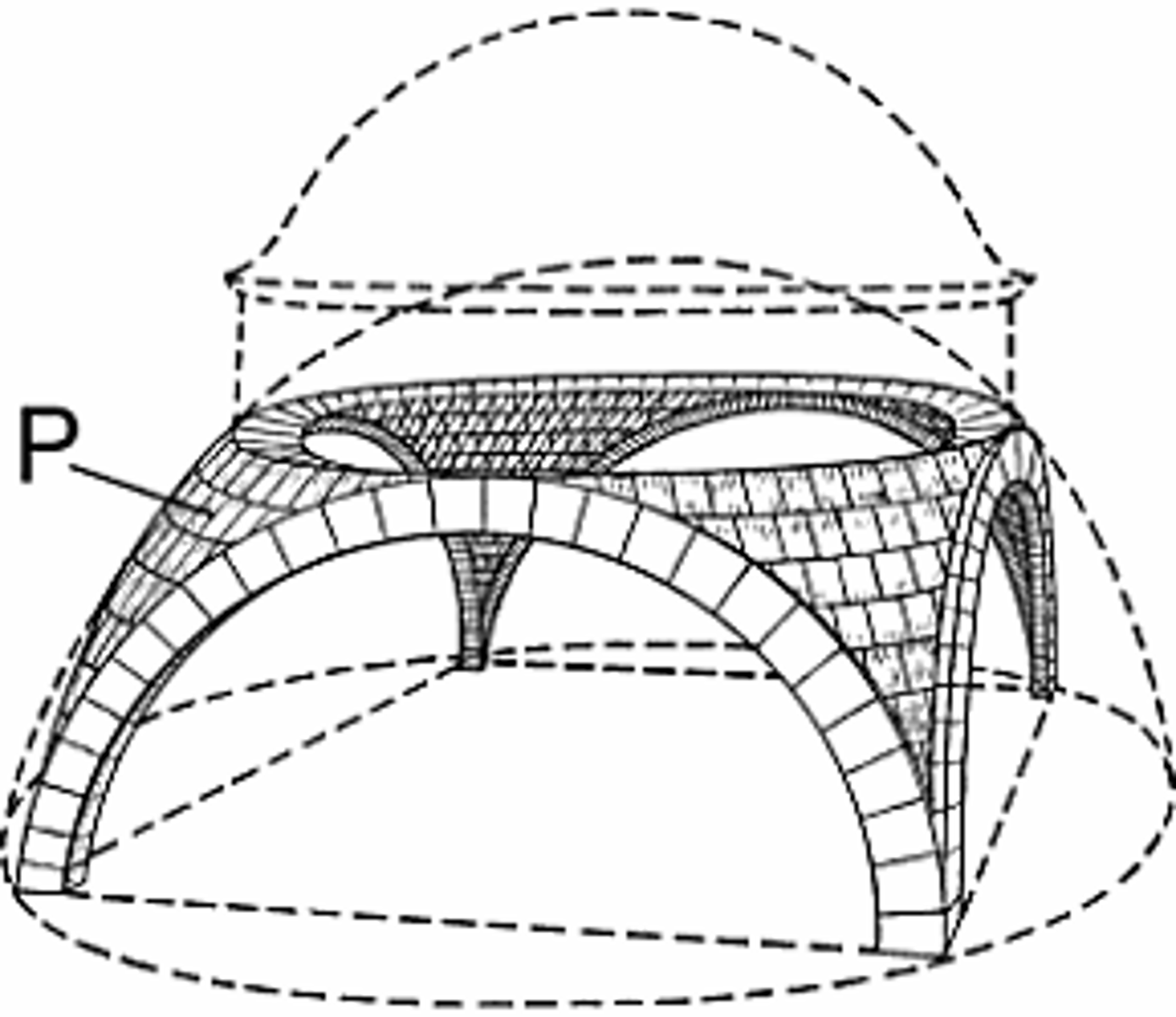
façade
the face or front wall of a building
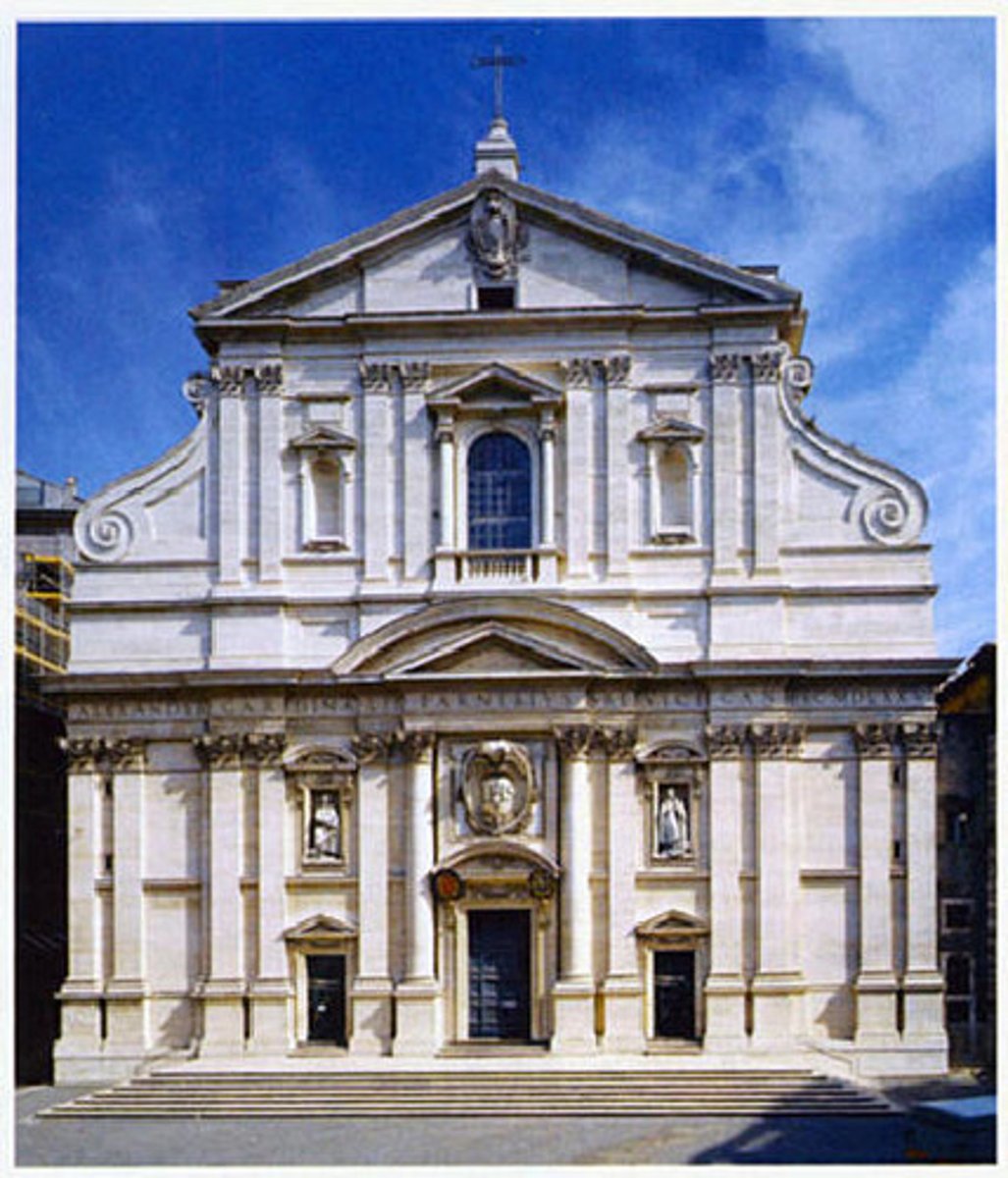
basilica
large rectangular building; Roman centers for administration, later adapted to Christian church use
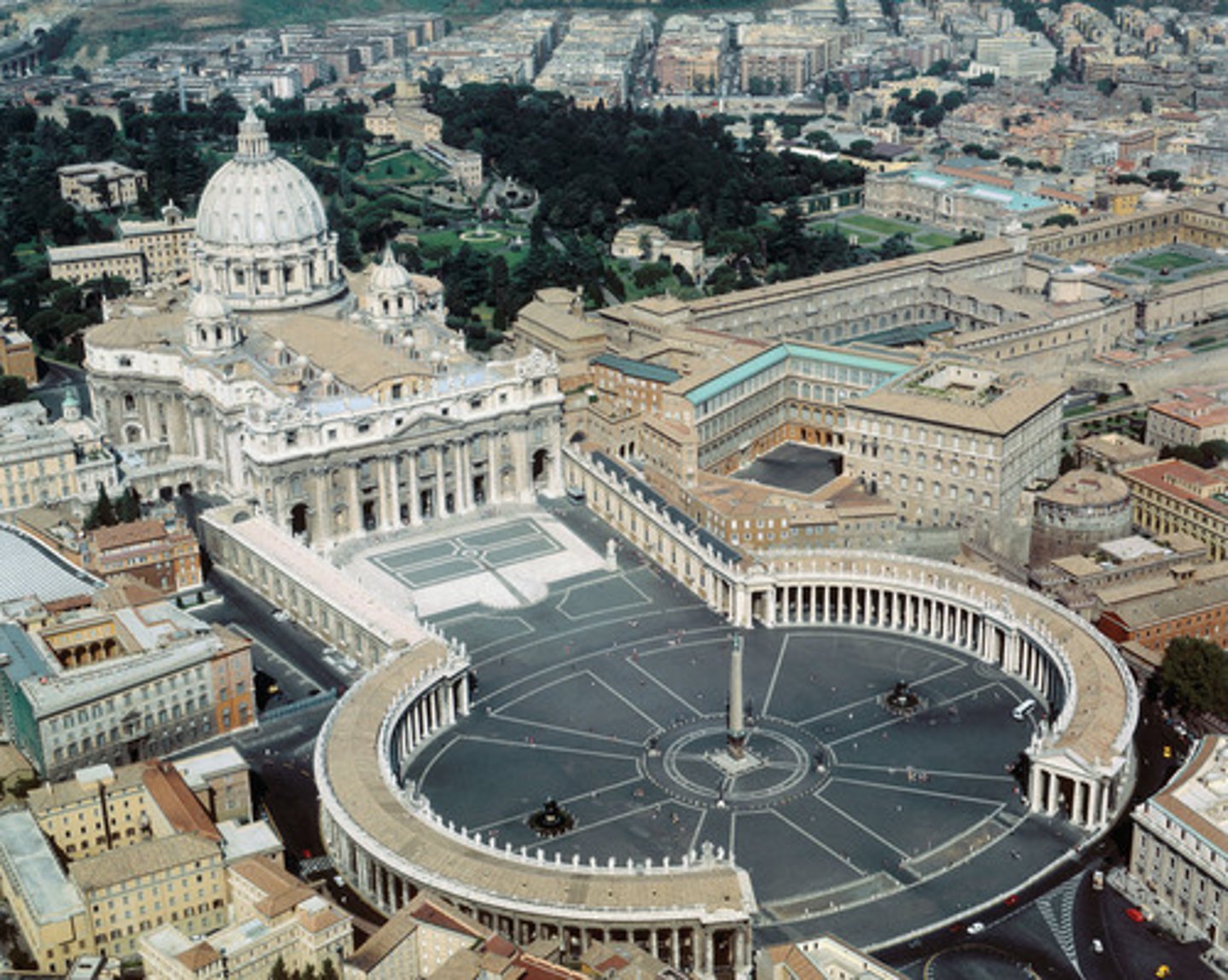
nave
central space of a basilica
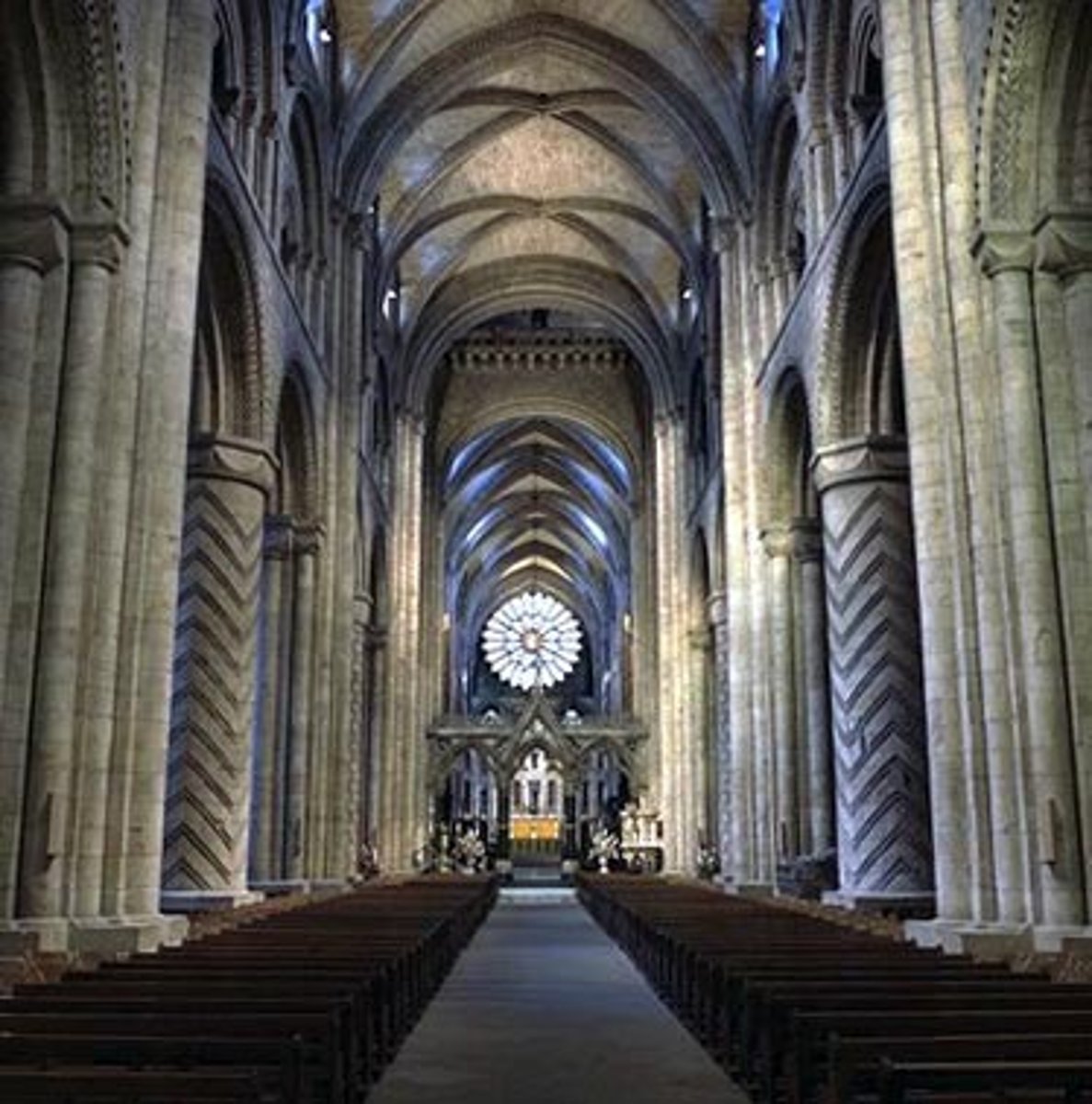
transept
the part of a church with an axis that crosses the nave at a right angle
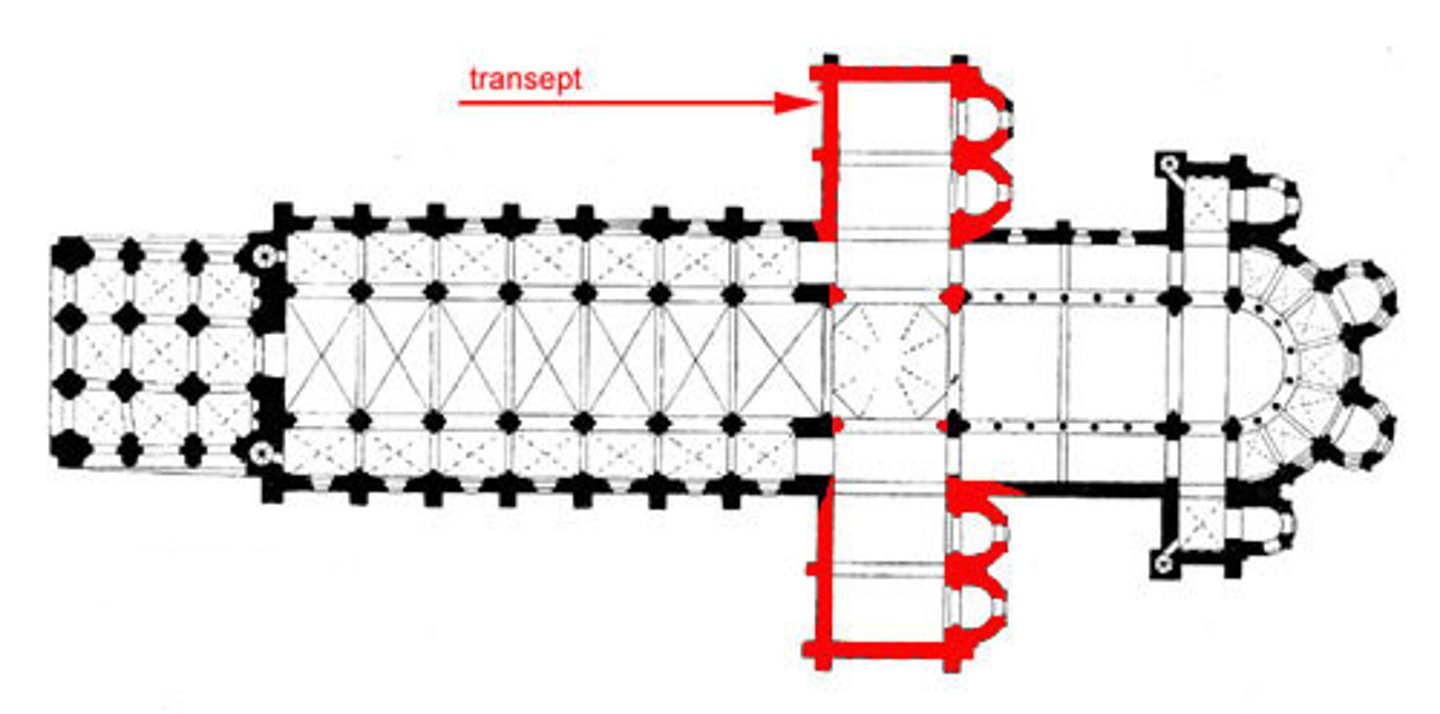
apse
large semicircular or polygonal (and usually vaulted) niche protruding from end wall of a building; in a Christian church, the apse contains the altar
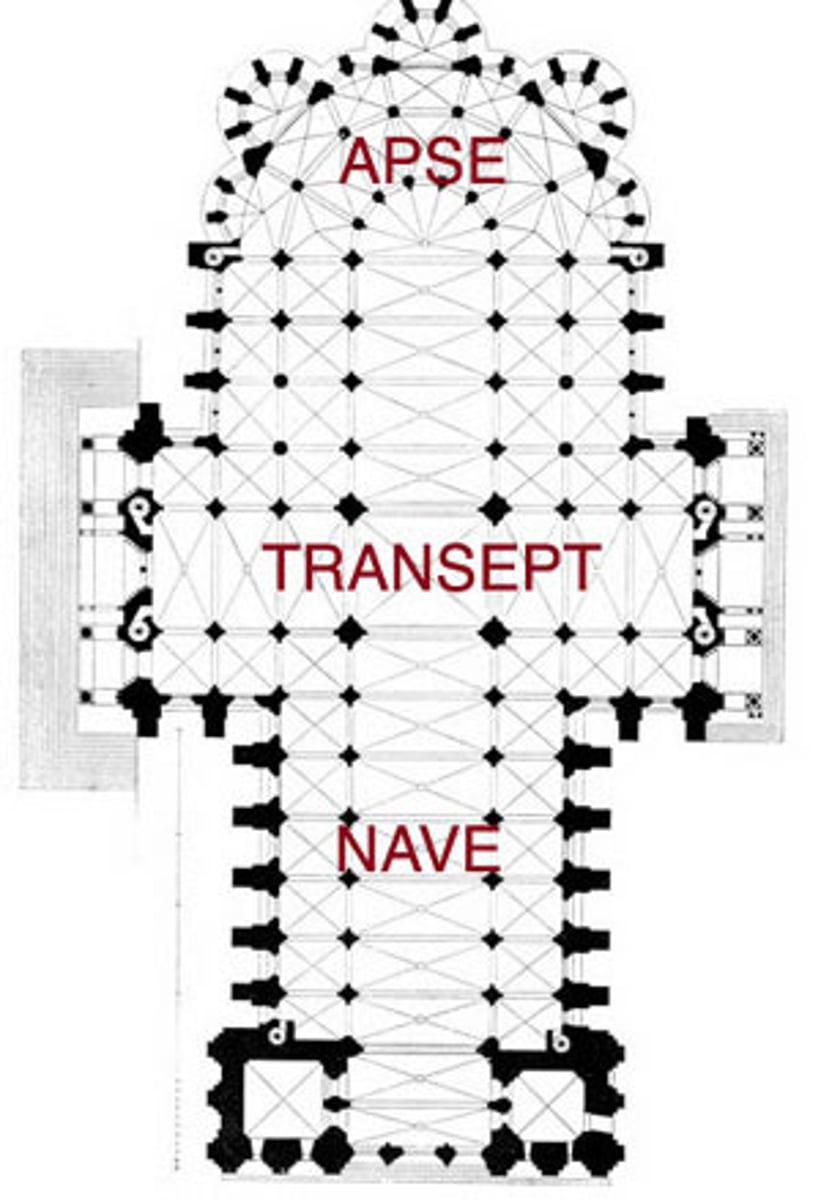
aisles
corridors flanking the nave, delineated by a row of columns or piers
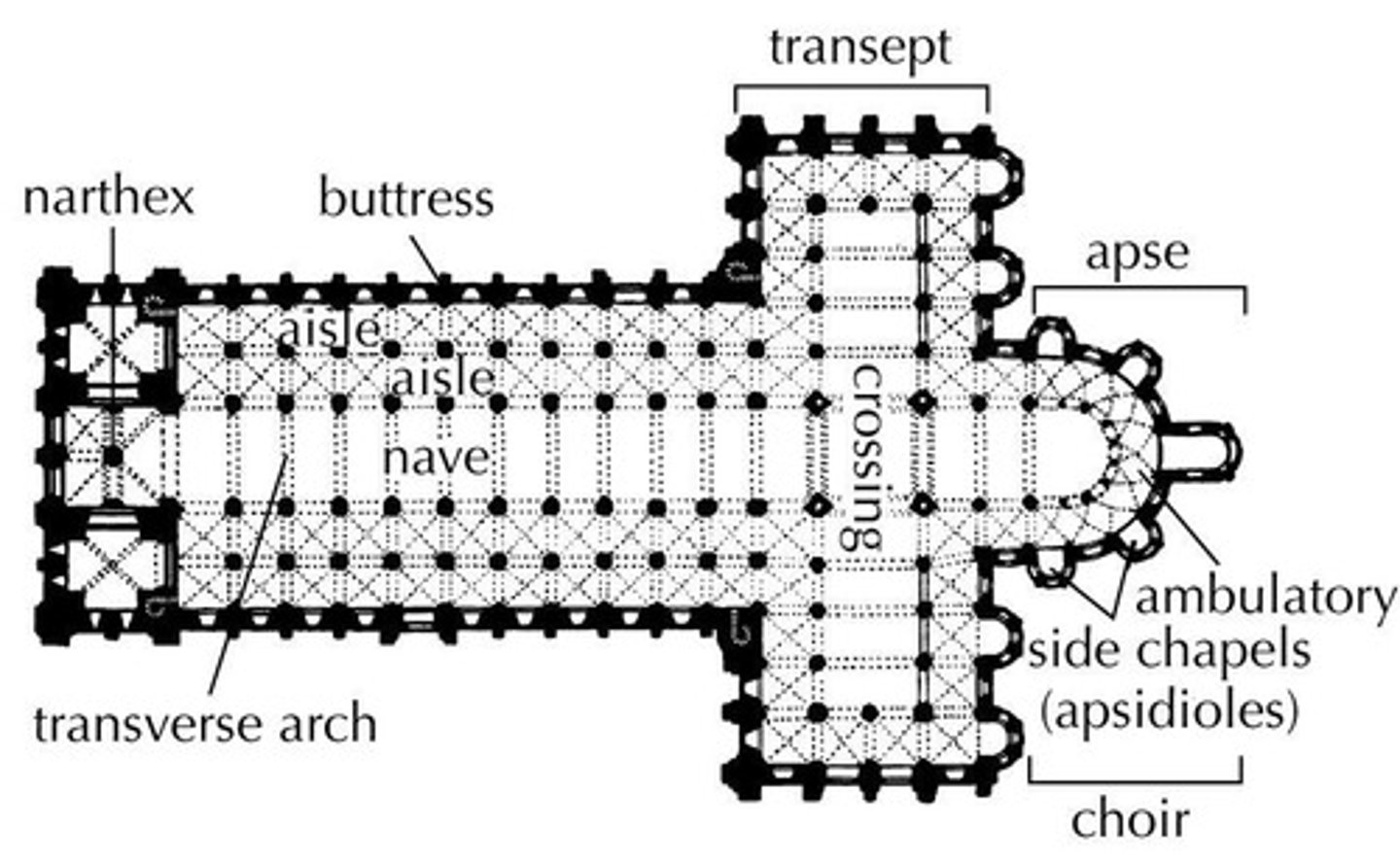
sfumato
smoky overall haze used to unify composition; most closely associated with Leonardo
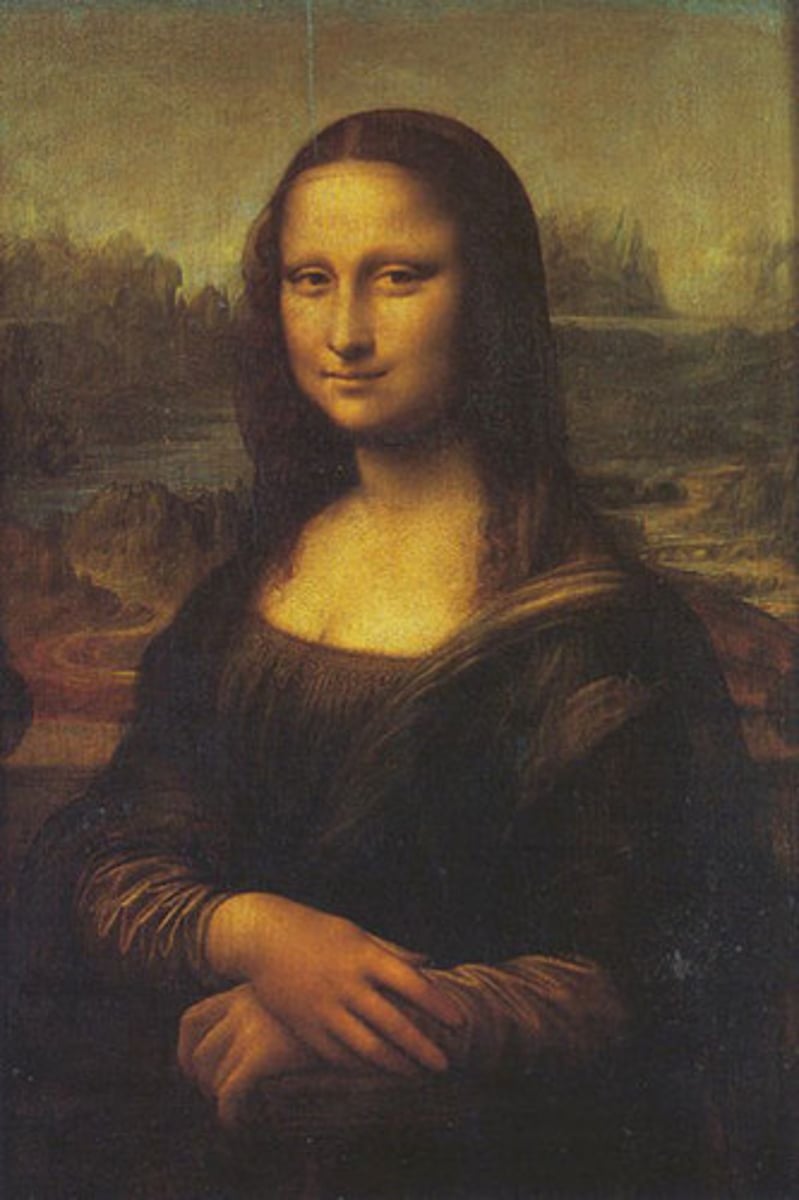
refectory
a dining hall in a religious house, a college, or other institution
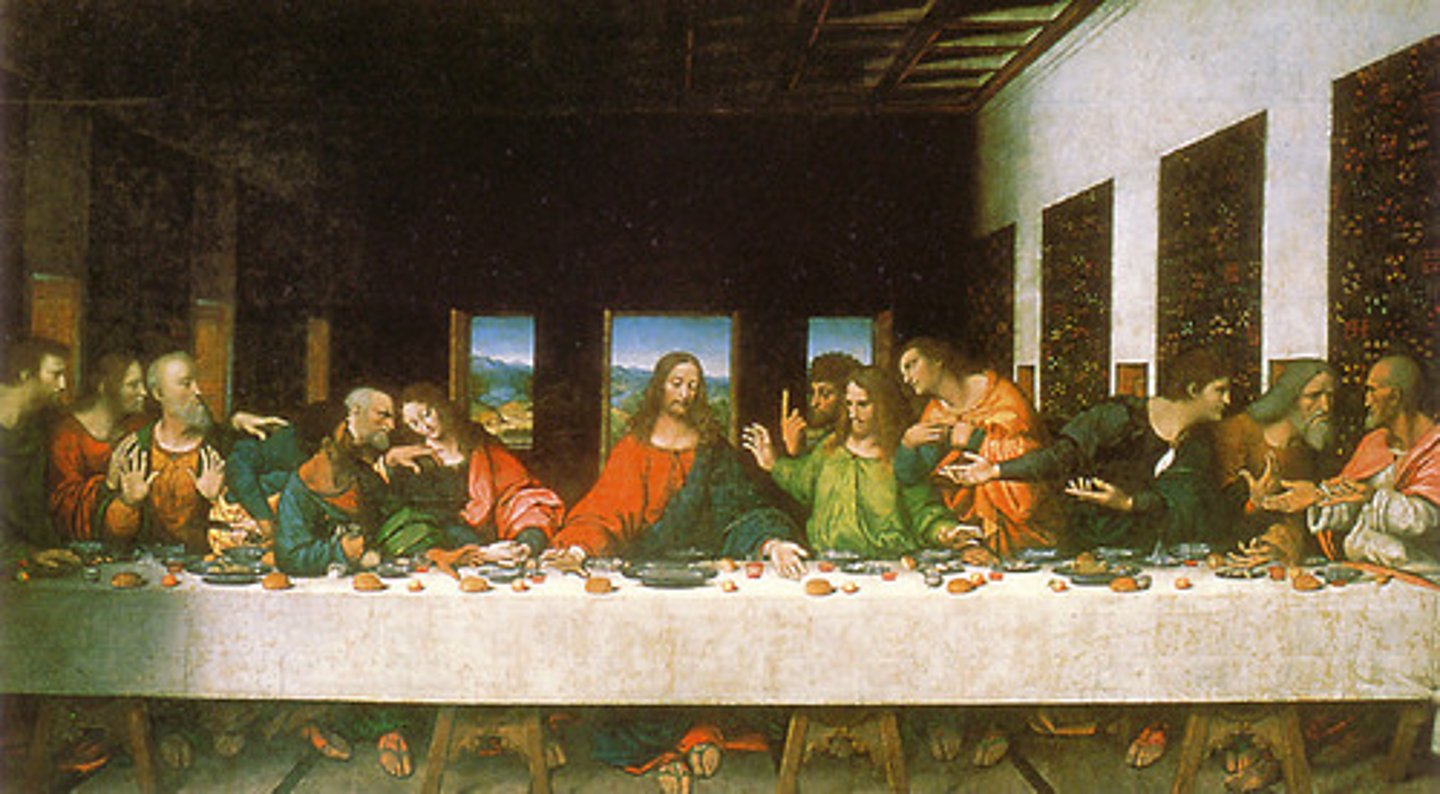
transubstantiation
the transformation of the Eucharistic bread and wine into the body and blood of Christ
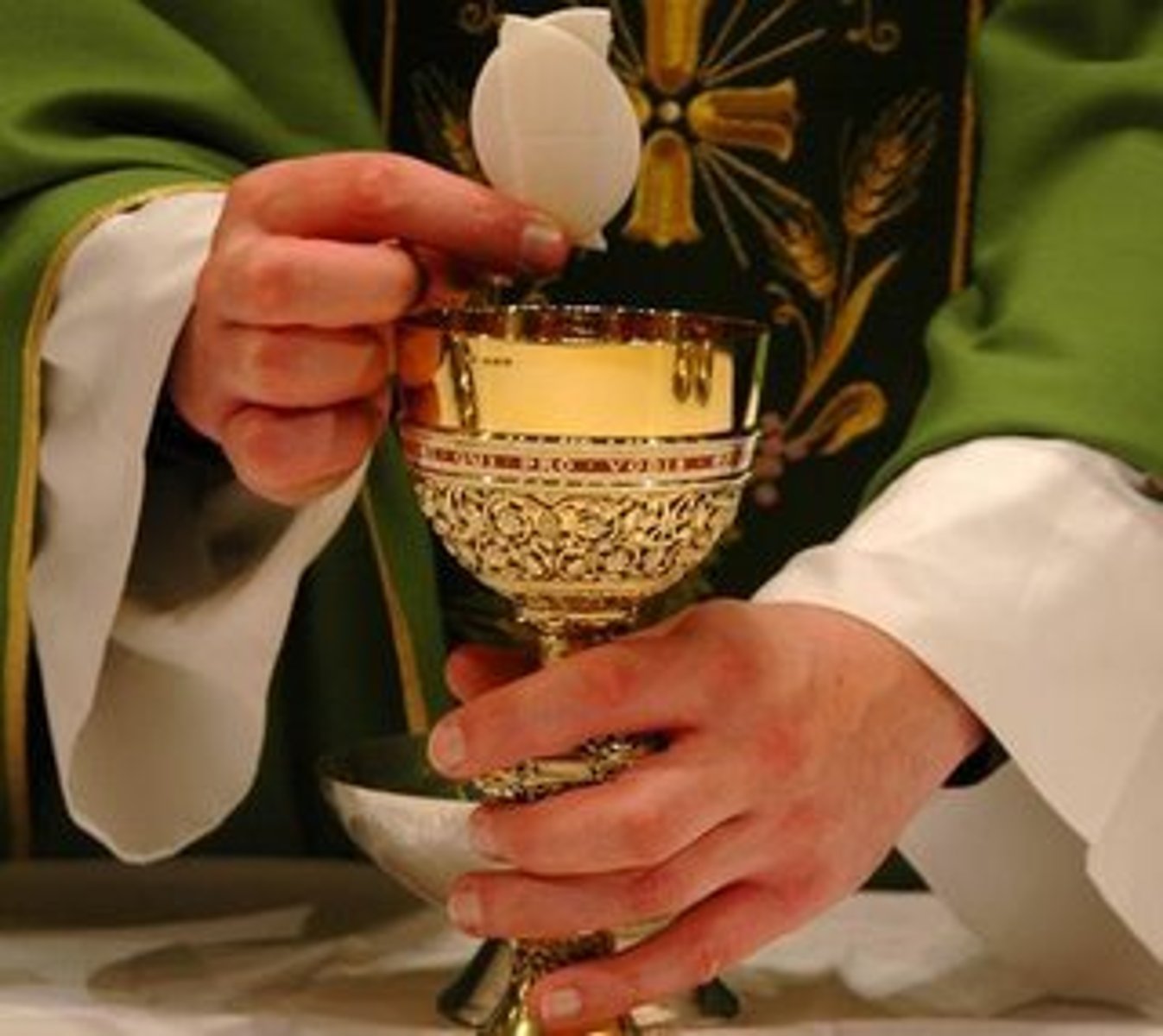
quadro riportato
term applied to a ceiling picture that is intended to look as if it is a framed easel picture placed overhead; there is no illusionistic foreshortening, figures appear as if they were to be viewed at normal eye level (see Sistine Chapel)
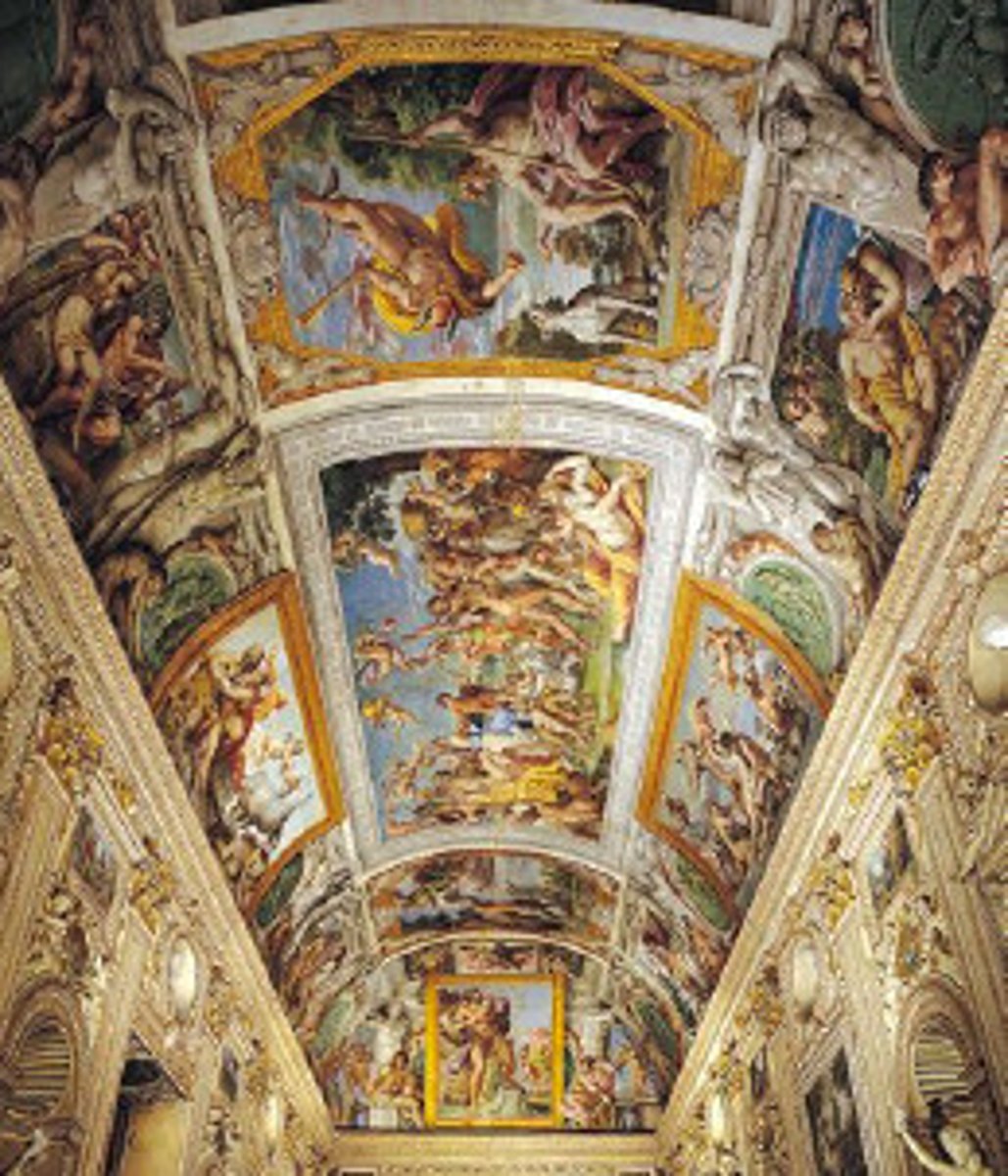
pietà
image of the virgin mourning alone with Christ across her lap after his crucifixion
from Latin word for compassion, "pietatas"
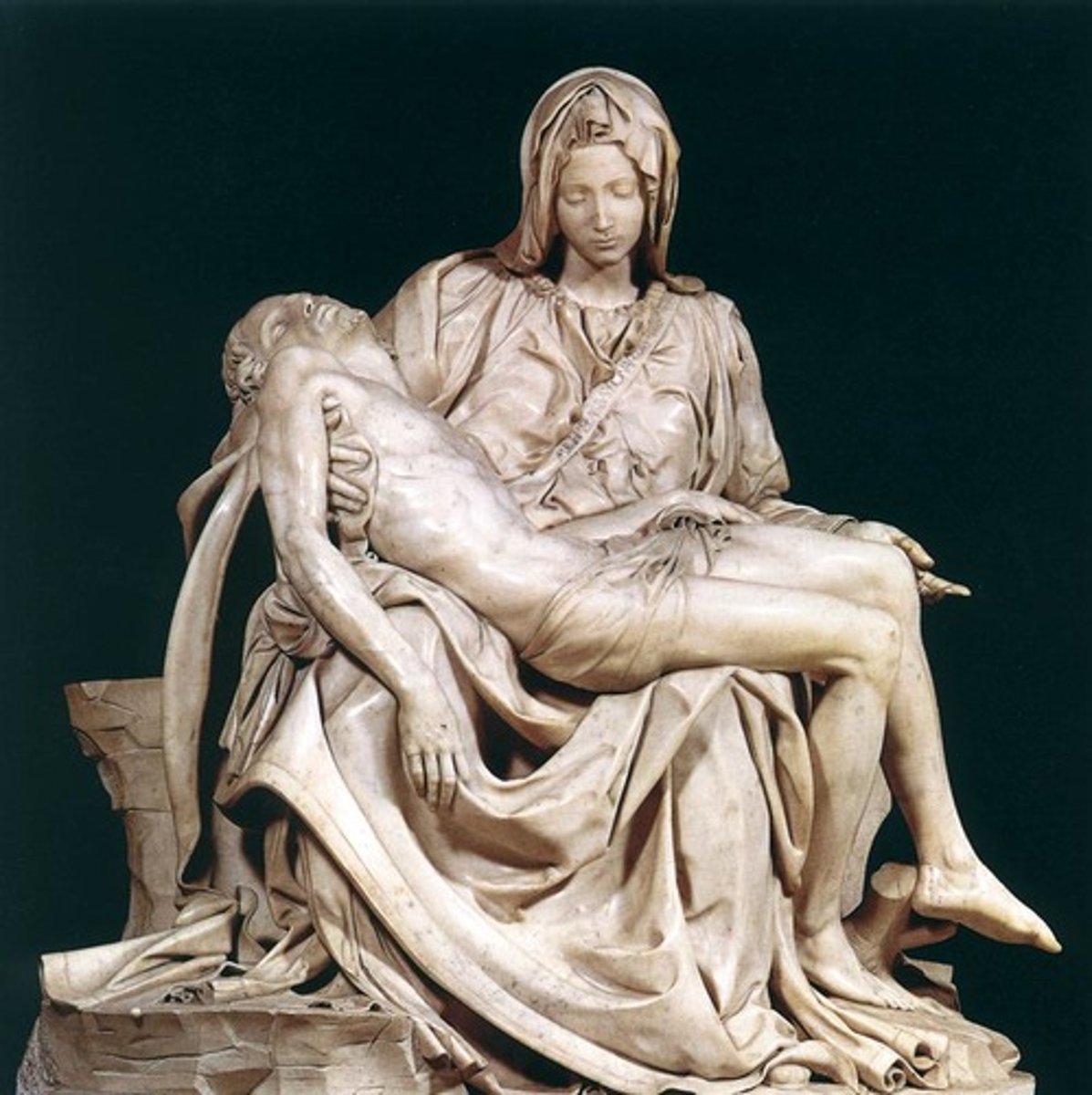
Passion cycle
events surrounding Jesus' death and Resurrection, including the Entry into Jerusalem, the Last Supper, the Crucifixion, the Deposition, and the Lamentation
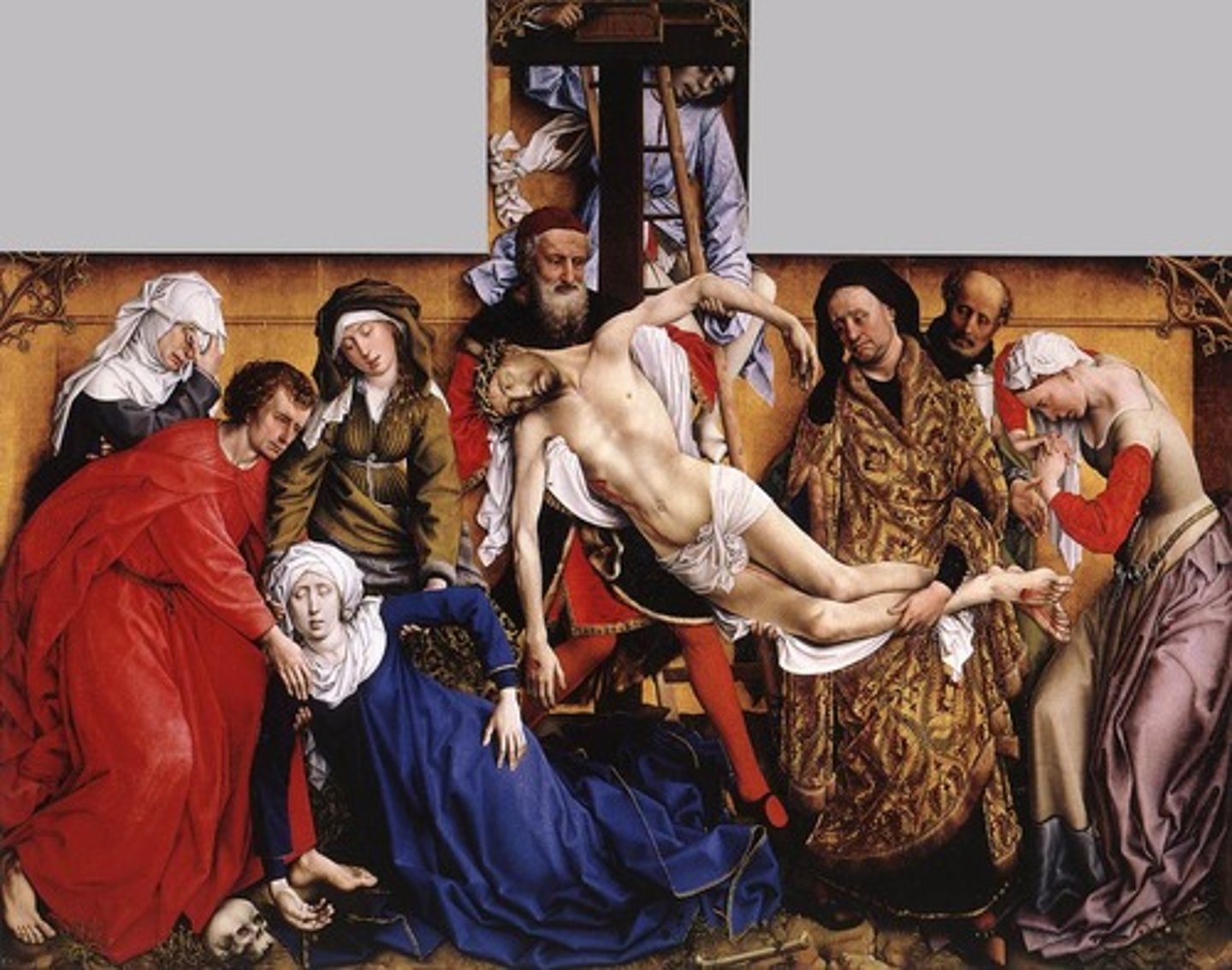
disegno
Italian for "drawing" or "design"; a term that related to careful design preparation based on preliminary drawing and associated with 16th century painters working in Florence and Rome, most prominently Michelangelo
colorito
Italian for "colored" or "painted"; a term used to describe the application of paint and associated with 16th century Venetian painters, most prominently Titian
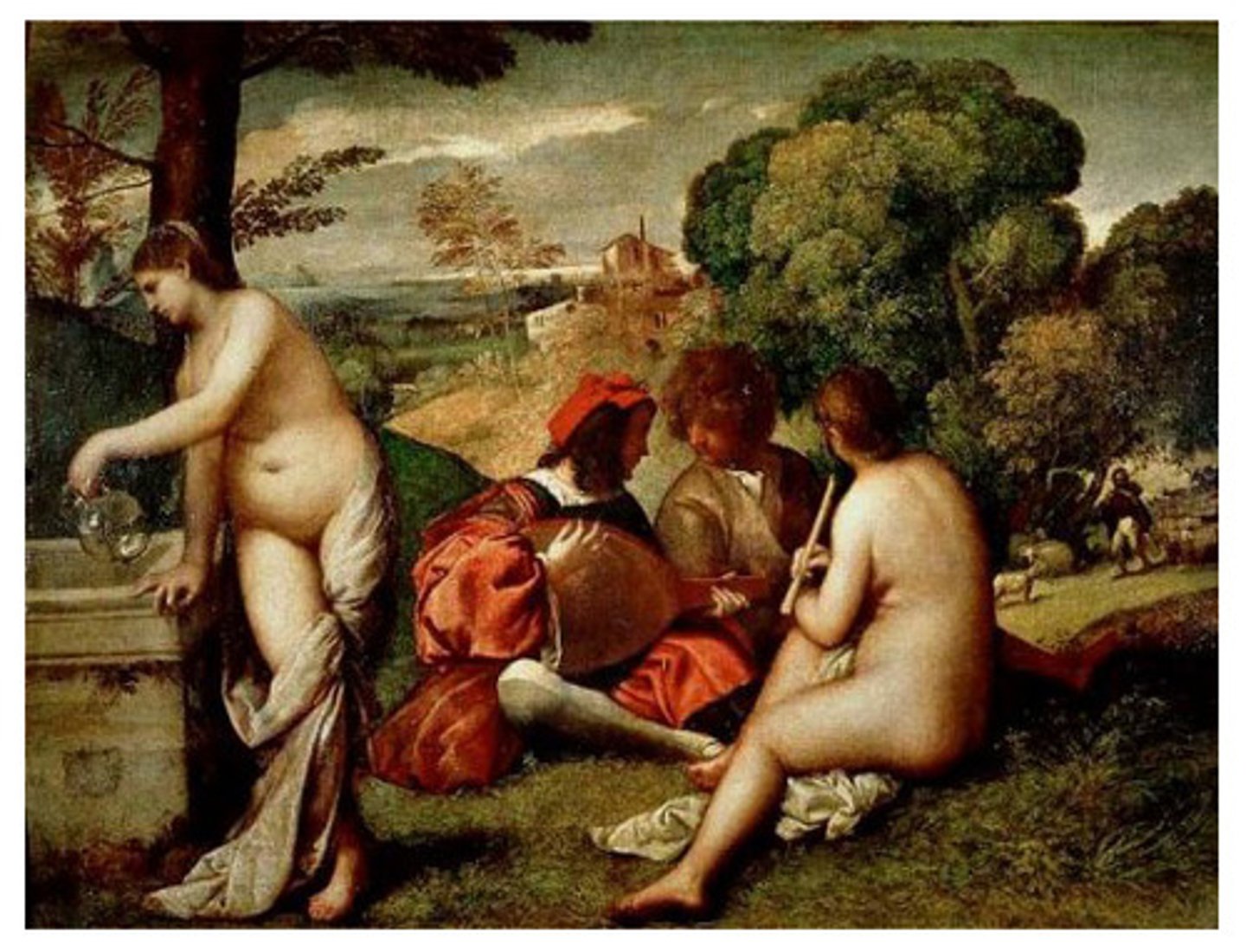
Protestant Reformation
A 16th-century movement in Western Europe that aimed at reforming some doctrines, practices, and excesses of the Roman Catholic Church and resulted in the establishment of the Protestant churches
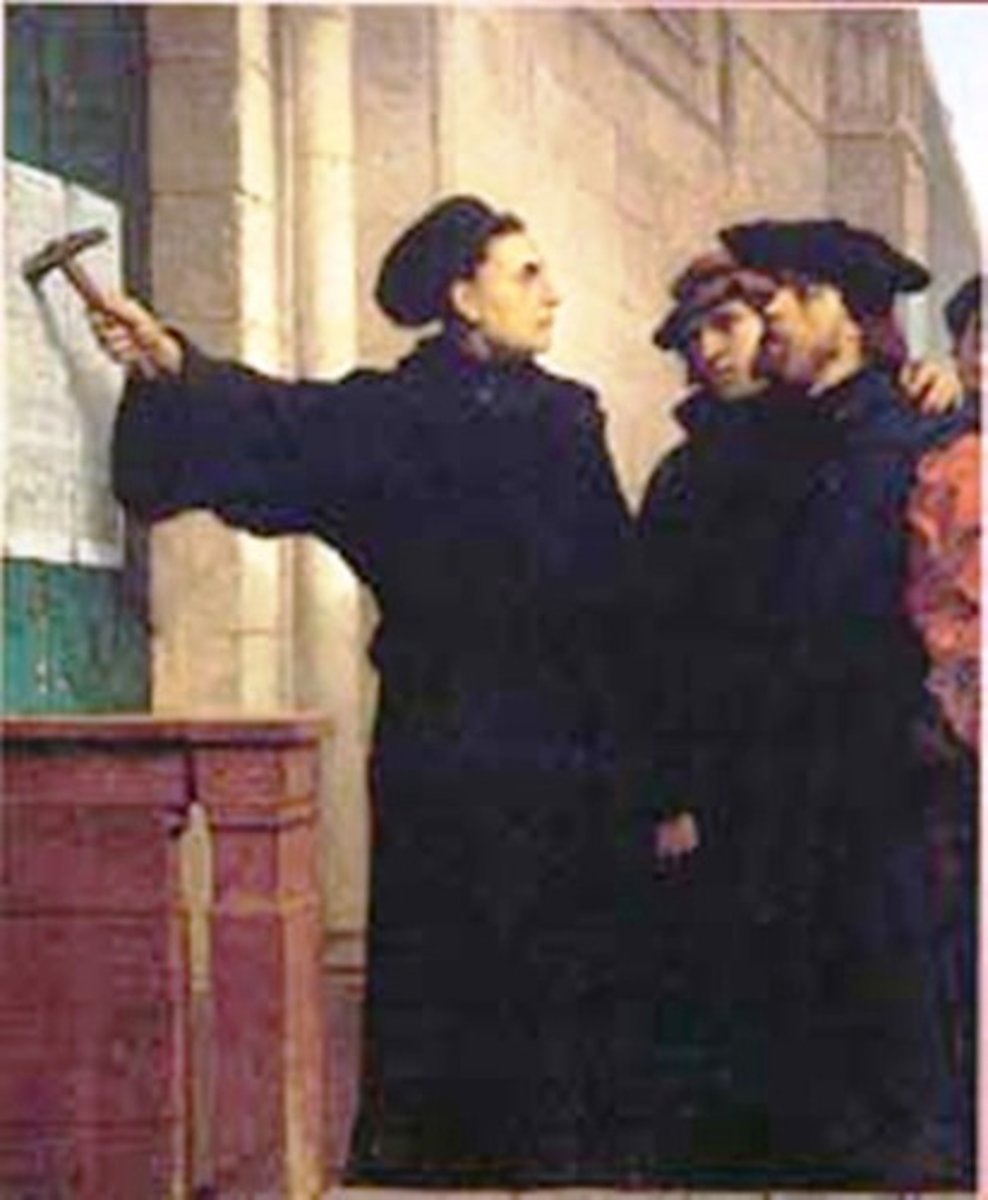
Counter Reformation
a reform movement within the Roman Catholic Church that arose in 16th-century Europe in response to the Protestant Reformation; inspired the papacy to promote the Catholic Church's preeminence by undertaking an extensive program of building and art commissions
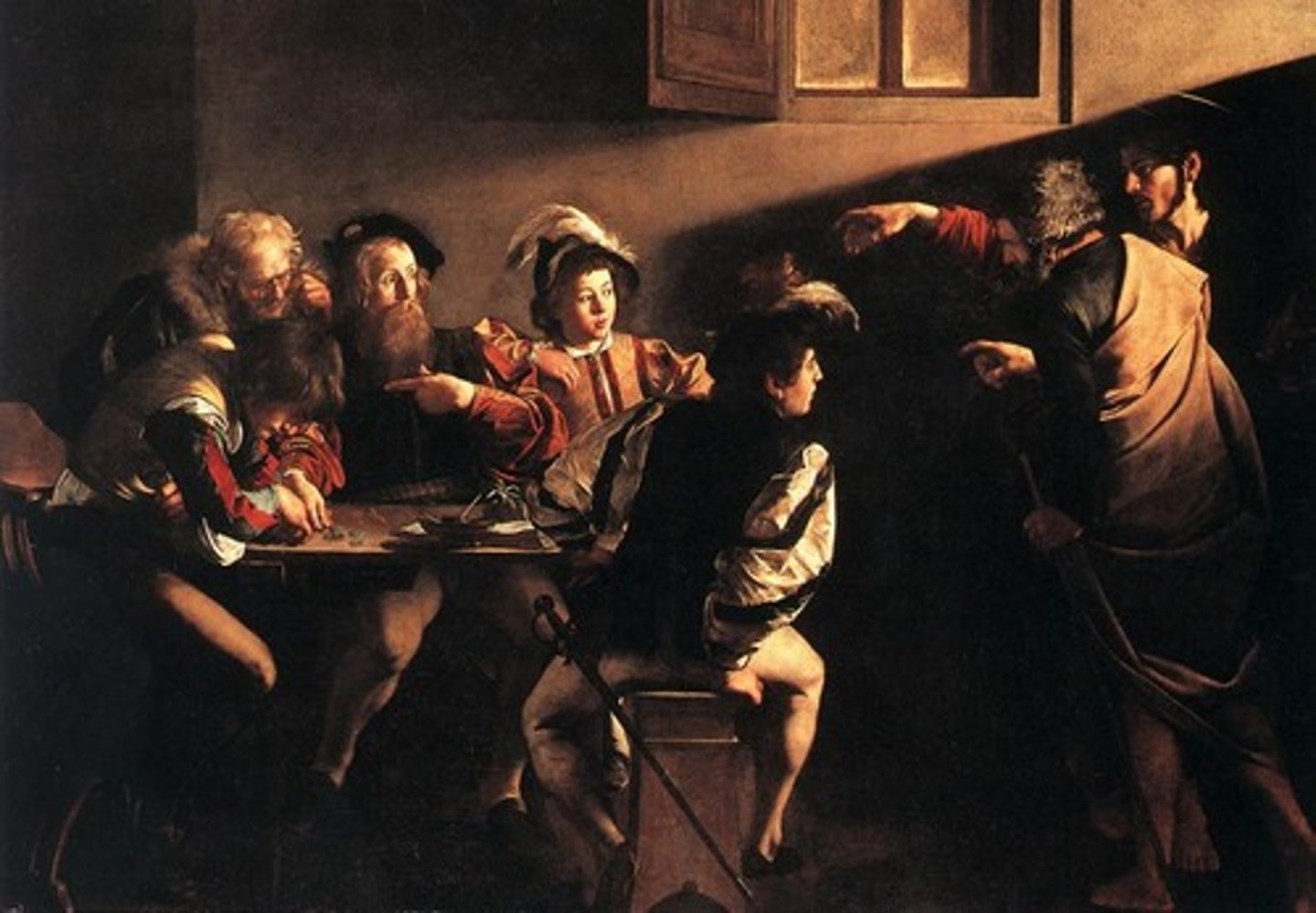
Inquisition
A court established by the Roman Catholic Church in the thirteenth century to try cases of heresy and other offenses against the church
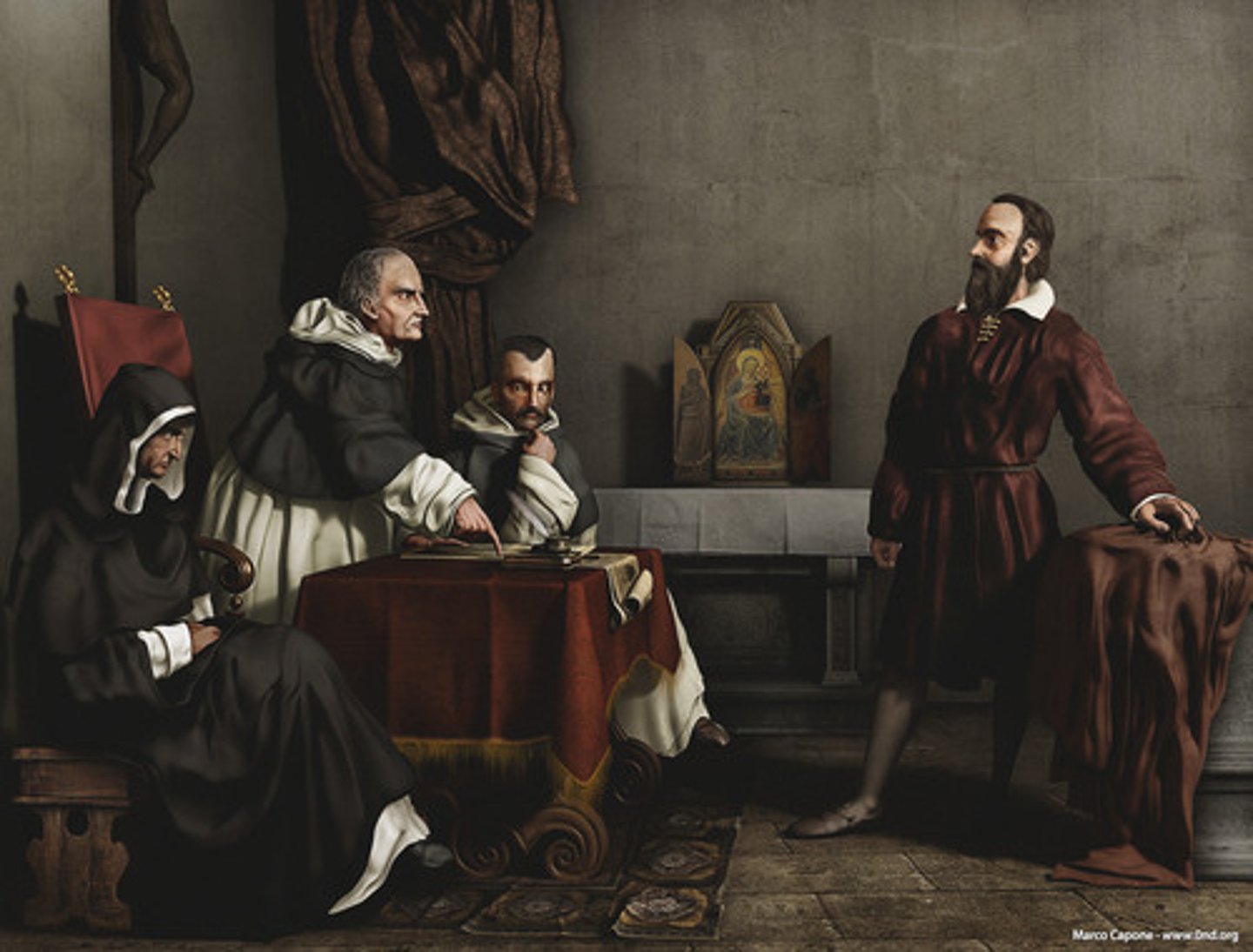
villa
a country residence or estate; building type known in ancient Rome and revive in Renaissance
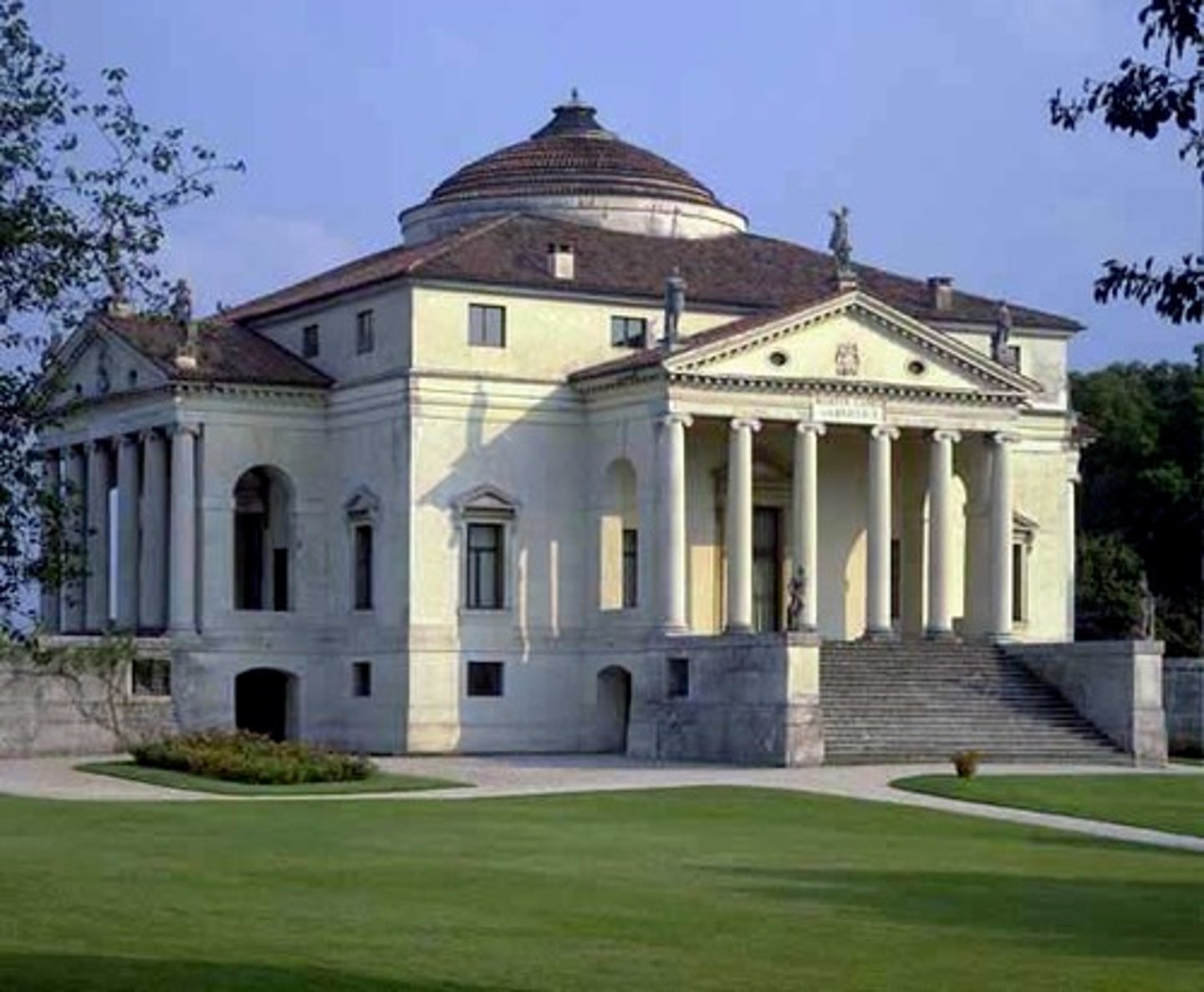
Renaissance means rebirth. What is the Italian Renaissance a rebirth of? How do works like Brunelleschi's dome, Ghiberti's Gates of Paradise, Donatello's Gattamelata, Botticelli's Birth of Venus, and Masaccio's Holy Trinity, among others, illustrate this rebirth? Do they illustrate this rebirth in different ways?
Rebirth of Greek and Roman antiquity. Brunelleschi references roman domes, gates of paradise referencing classical architecture, linear perspective, and rendering of figures, etc.
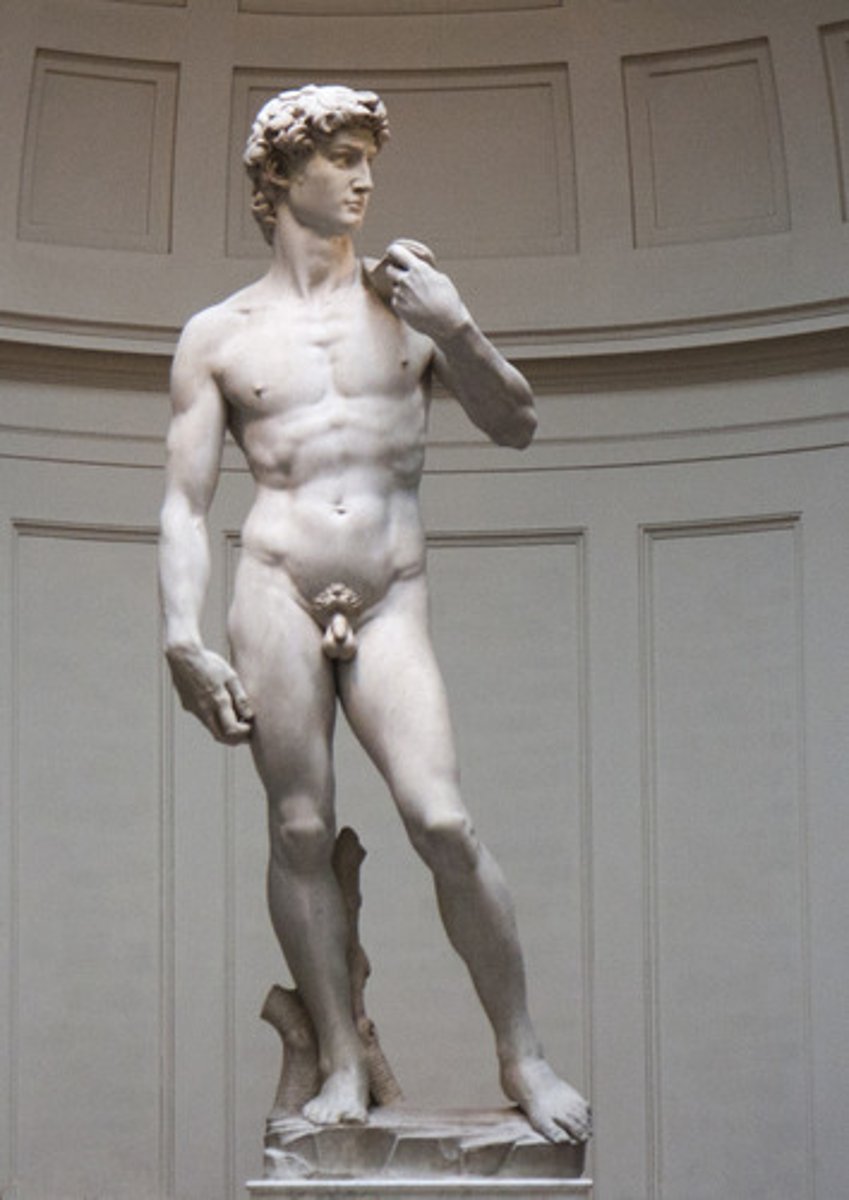
In what city did the Renaissance begin? And what artistic event(s) is/are often cited as the beginning of the Italian Renaissance? Why?
Florence
Ghiberti’s design for Florence Baptistery doors
Cathedral construction of domes and architecture
Rise of humanism and perspective in art
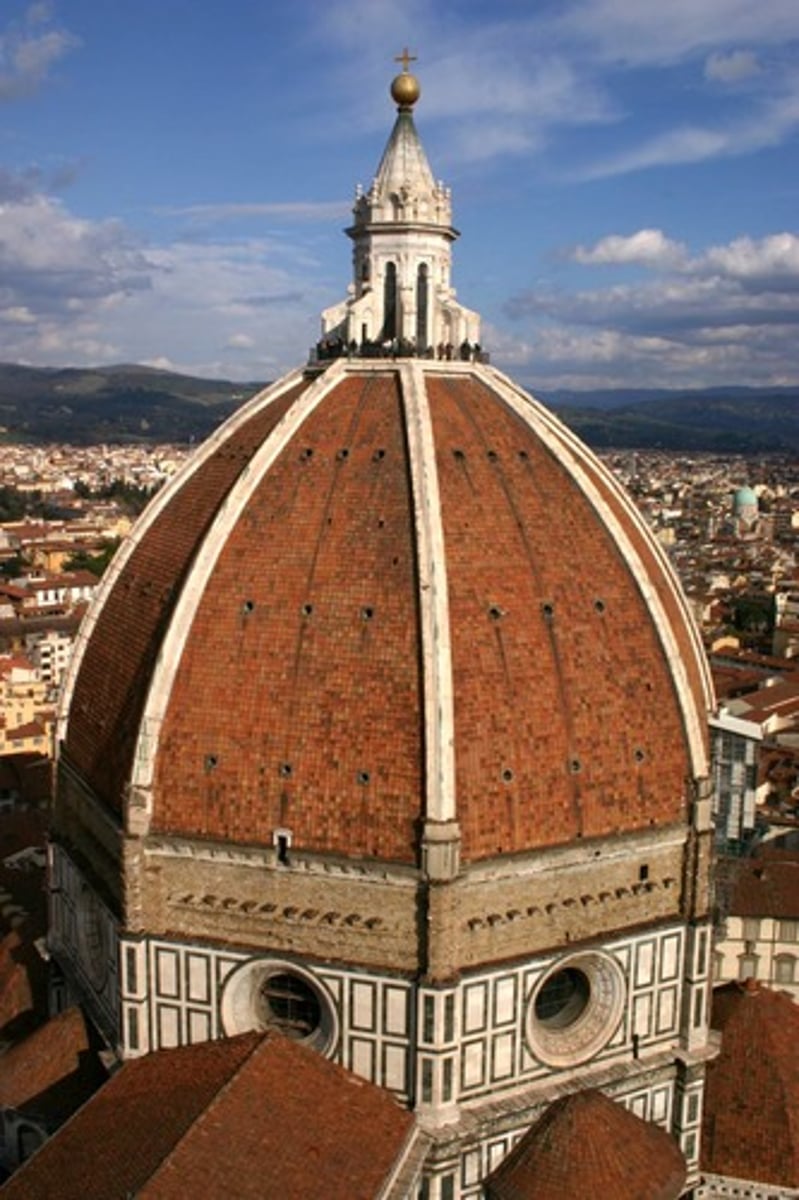
What is a guild? Why are guilds so important to the development of art in Renaissance Italy? Why do they commission artworks? Use Brunelleschi's & Ghiberti's reliefs for the Florentine Baptistery in your answer.
Guilds: Professional organizations that helps set prices, trade practices, stipends to surviving family if you die, etc. Guilds had the opportunity to make sculptures to decorate churches. Guilds commission artwork for their meeting. Brunelleschi and Ghiberti were competing with each other in building cathedrals and such.
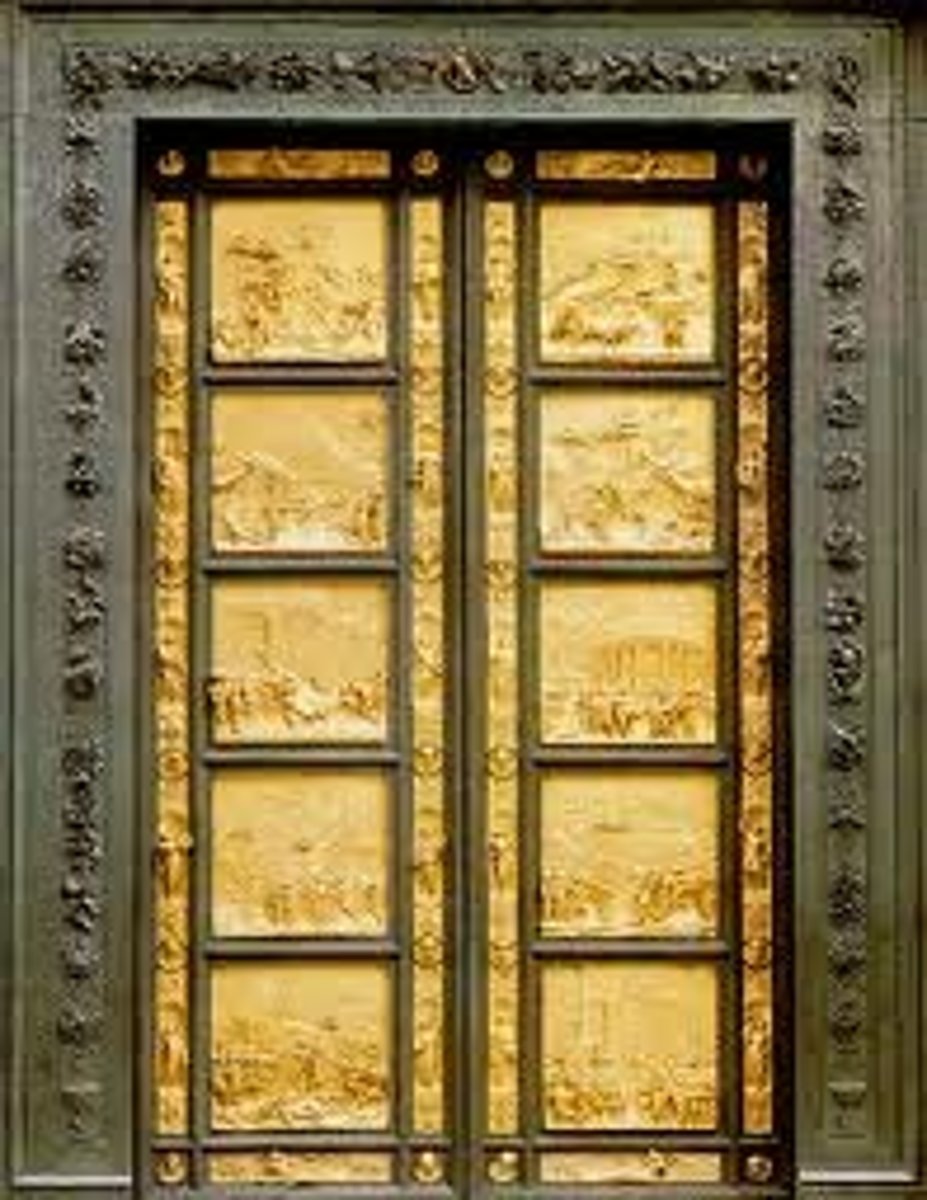
What is Humanism & how does it affect artists, patrons, & the types and subjects of art produced during this period?
humanism: man is the measure of all things. Rise of the individual, the wealthy comissioning art. Women had no status. Art reflected the power of man
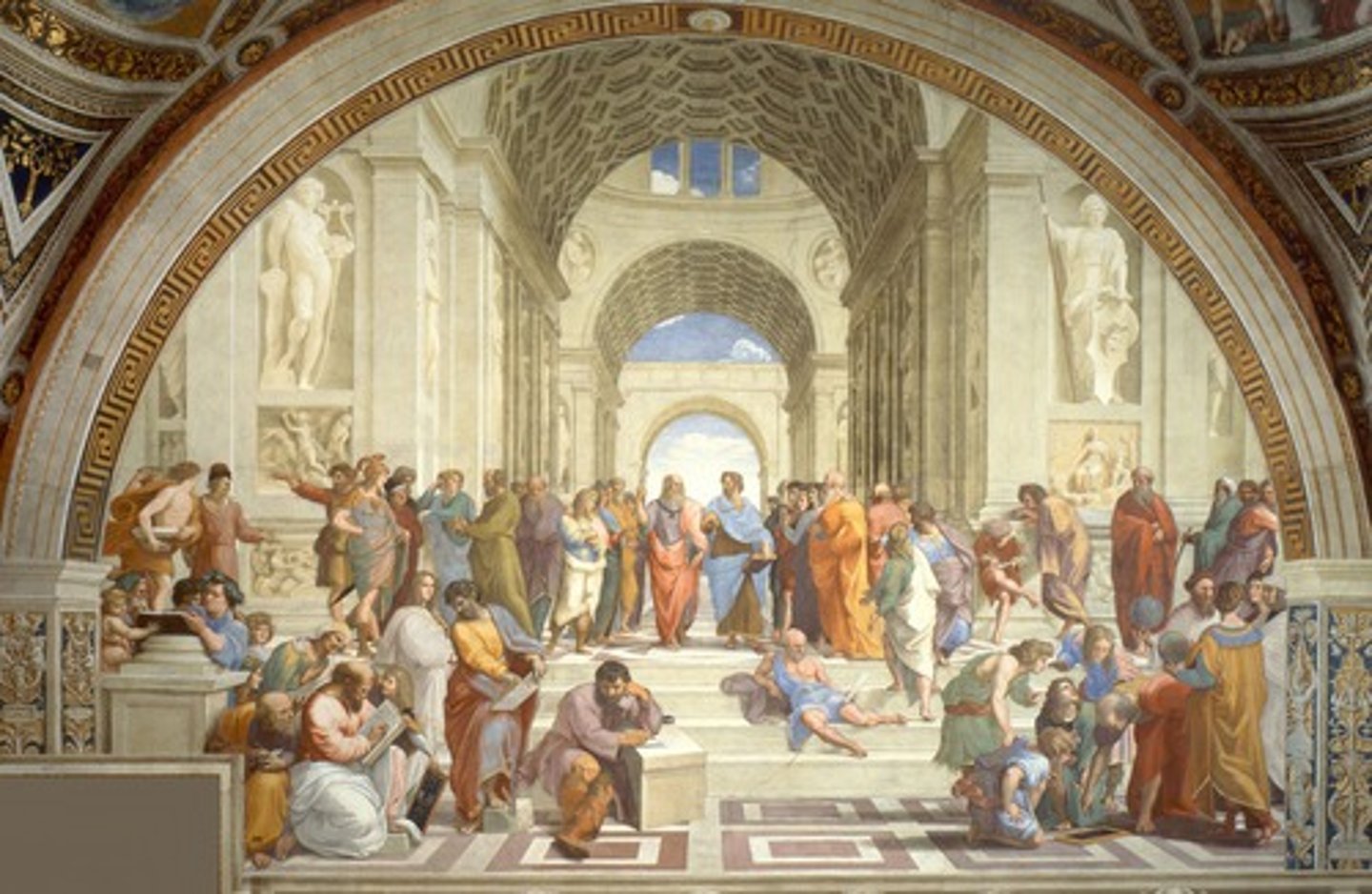
What is the status of the artist during the Renaissance? How are artists thought of in Renaissance society? Is this a change from earlier periods? How so?
Artists were viewed with a concept of genius and they had to compete against each other.
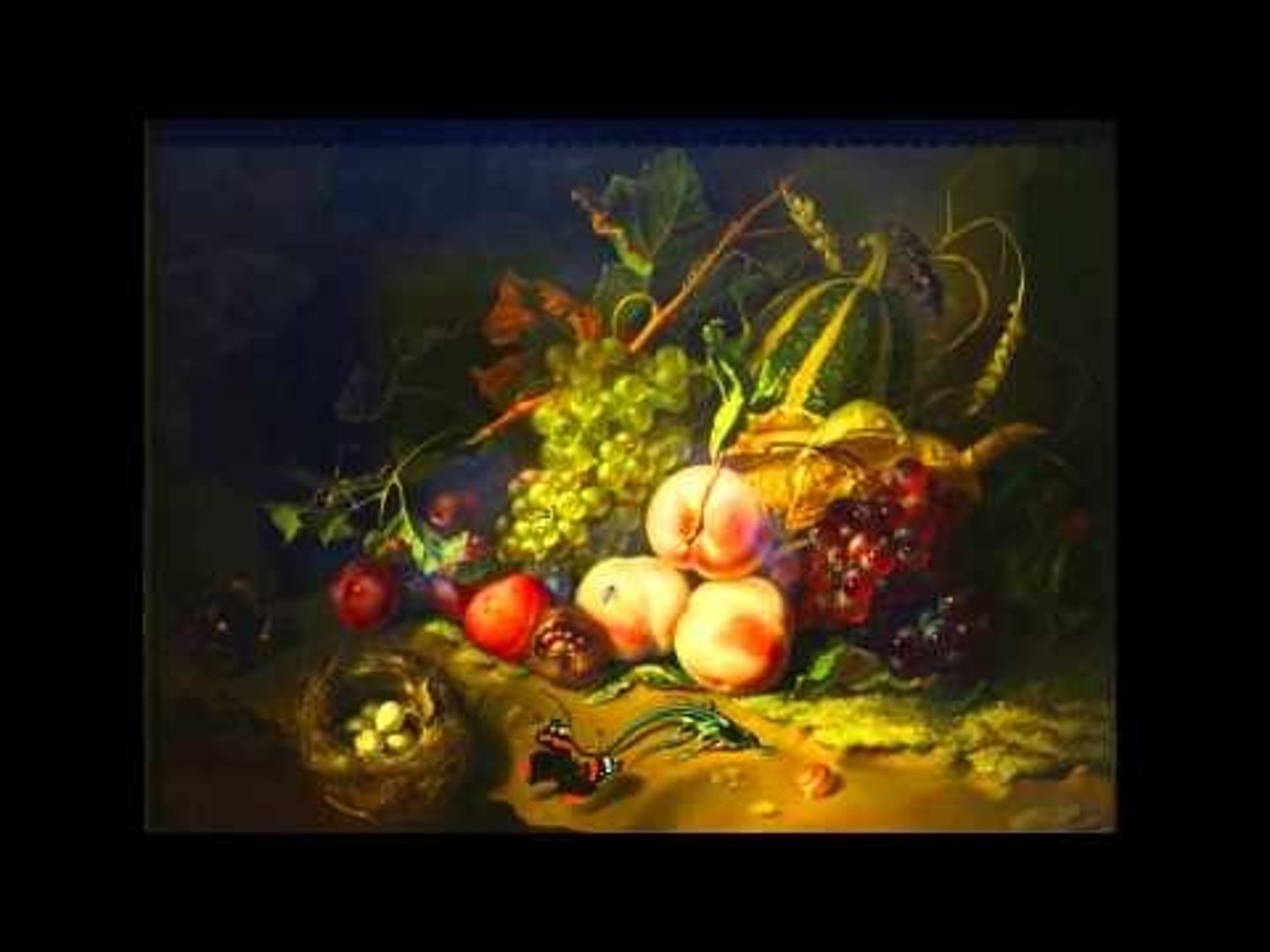
Using St. Mark, discuss why Donatello's sculpture is considered so revolutionary/a big step forward from Gothic sculpture.
St. Mark utilizes contraposto, natural proportions, emotions, and individuality with drapery that moves. Heavily influenced by antiquity. Not jamb statues.
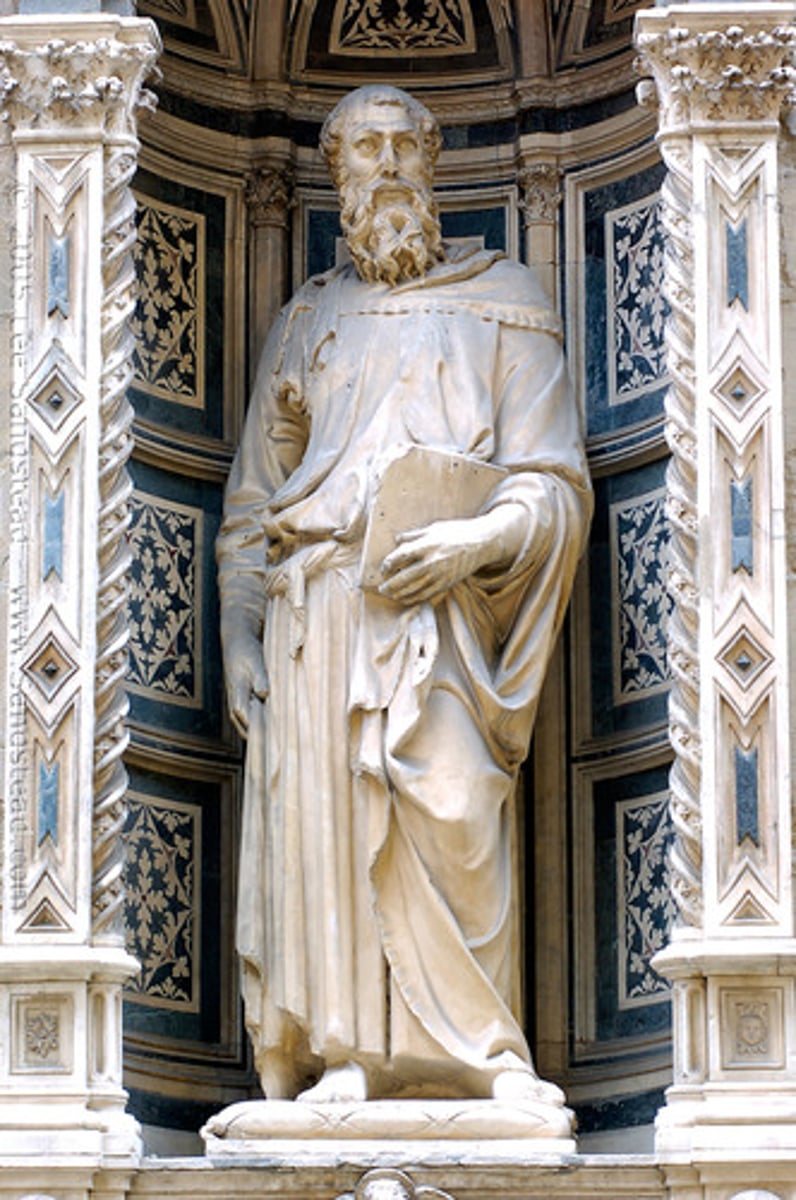
Compare Masaccio's Expulsion from the Brancacci Chapel with the Temptation by Masolino from the same site. How has each artist presented the narrative? What is the overall feeling of each? How are bodies rendered? Space?
Masaccio uses body language and facial expression to emphasize the sadness and make human connection to the viewer
Masolino has much more masculine female figure and uses dramatic body positions but far less emotional faces.
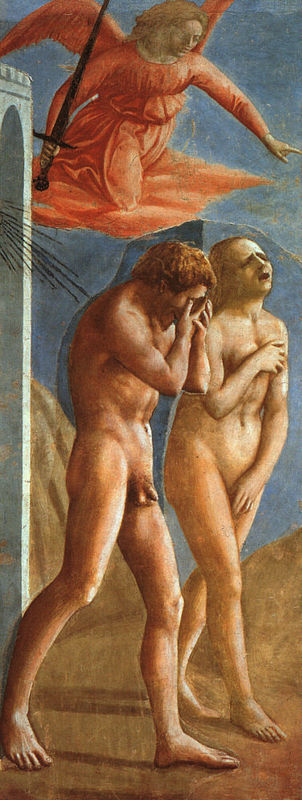
What is the subject of the Tribute Money? How does Masaccio employ continuous narrative in this fresco? How does he create depth and space?
This is the story from Matthew where the Roman tax collector asks for money and Peter finds money in the fish's mouth. All scenes of the story are present (continuous narative) and the things in the back look more hazy and grey (atmospheric perspective)
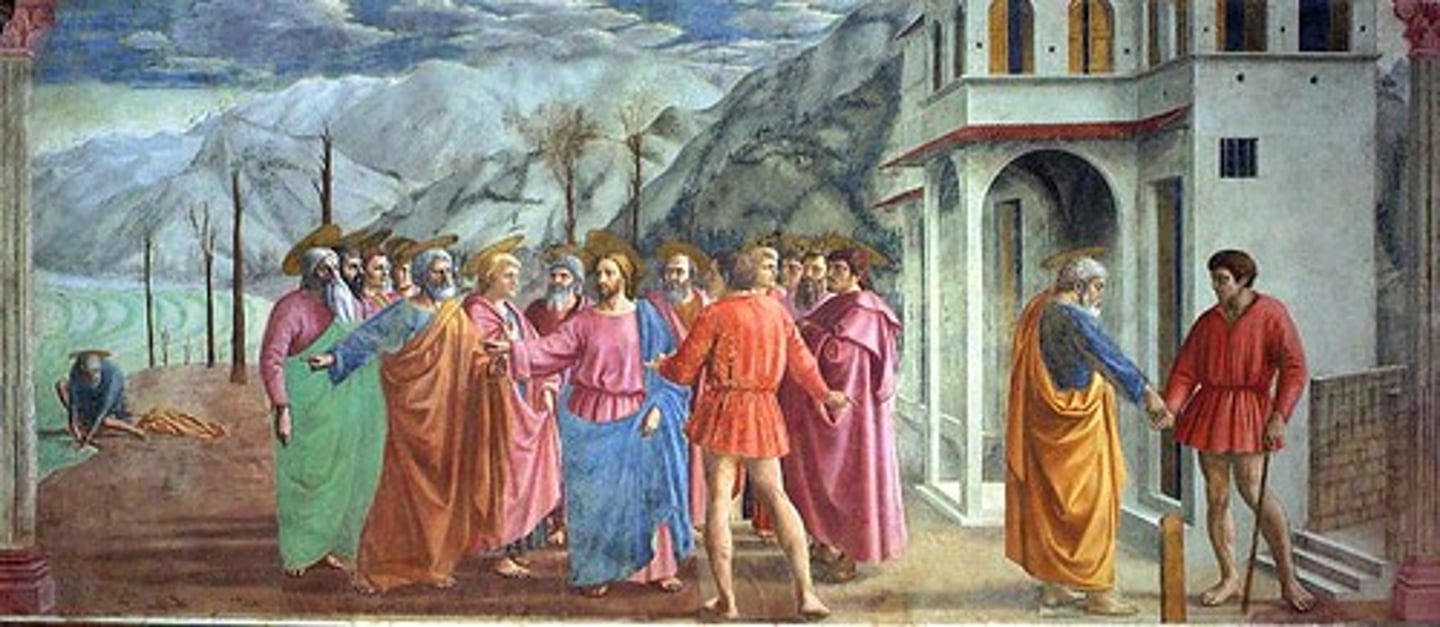
What is one-point linear perspective? How is it created? How does it differ from atmospheric perspective?
one point linear perspective has all lines receding back to a single vanishing point. Atmospheric perspective has things in the background be more grey and hazy
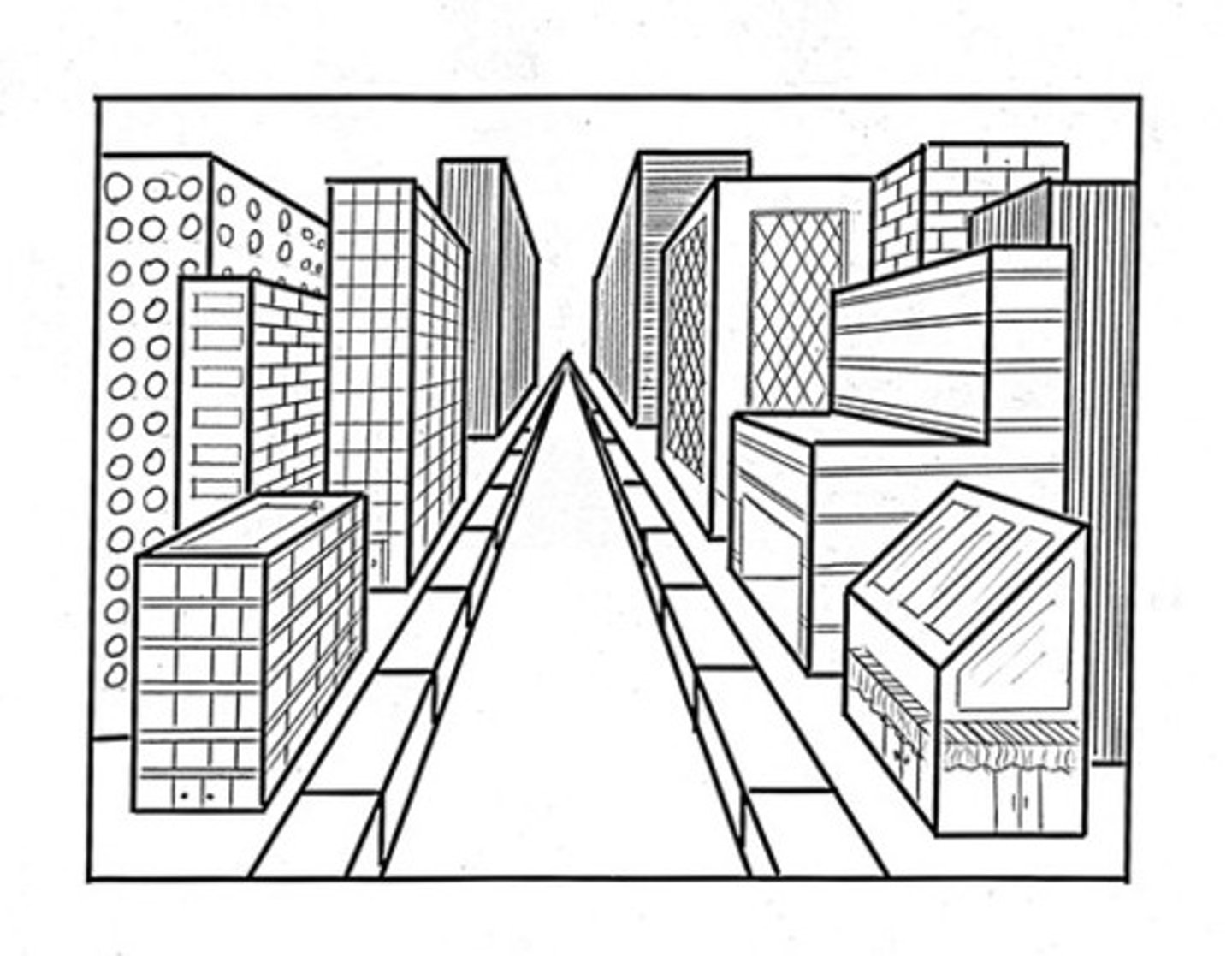
How does the development of one-point linear perspective affect the relationship between the viewer and the work of art? Use Masaccio's Holy Trinity in your answer.
One-point linear perspective creates a sense of depth, 3-D dimension on flat surfaces. It makes the space be more believable and realistic. See Masaccio's Trinity referencing antiquity
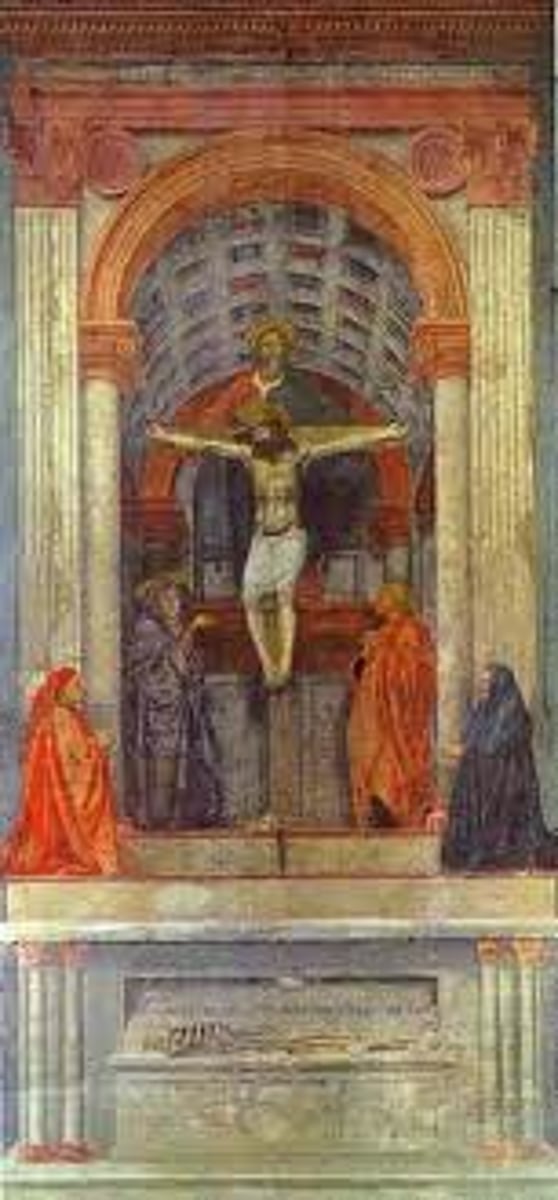
What influences from classical antiquity can be seen in Masaccio's Holy Trinity?
one-point linear perspective, columns, arch
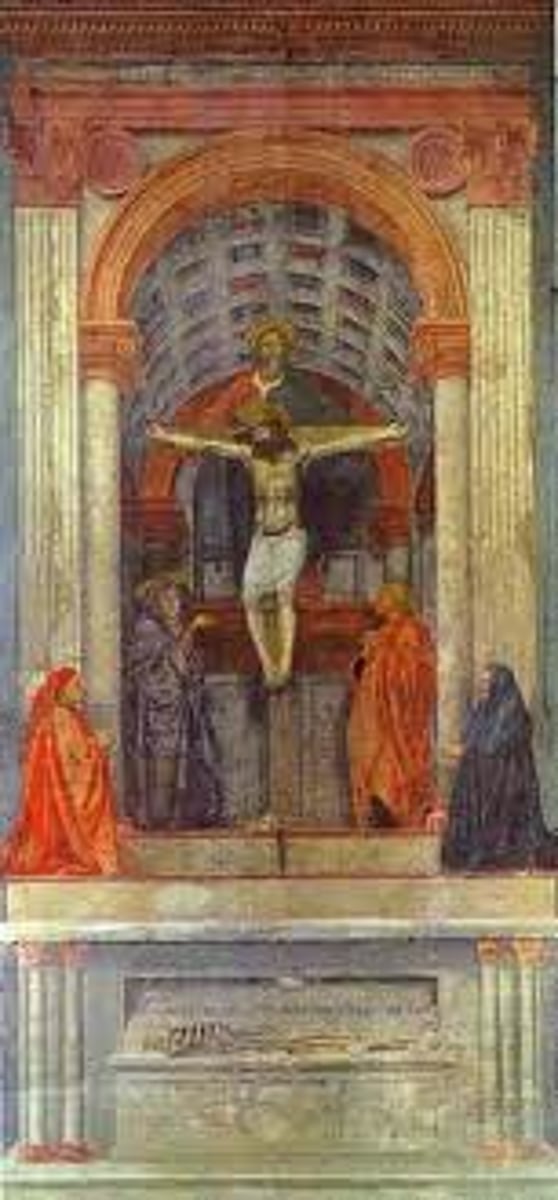
How does Botticelli's Birth of Venus reference classical antiquity? Gothic style?
Greco Roman = nudity, mythology, and pudica pose
Gothic style
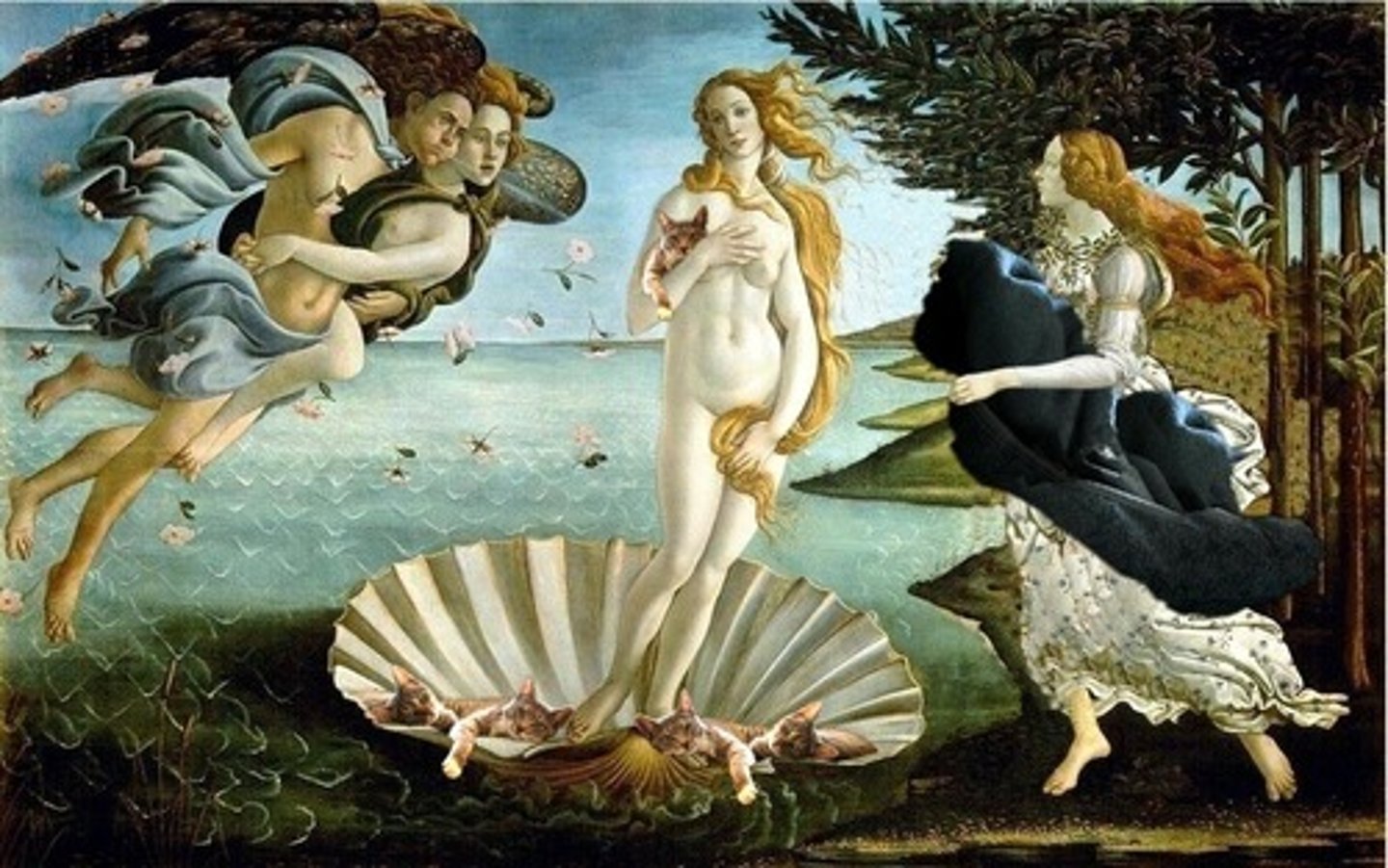
What city is the primary site of the High Renaissance style in Italy? Why is this so? Who is the most significant patron of the High Renaissance?
Rome. This was home to the Catholic church, who was the most significant patron of the high renaissance
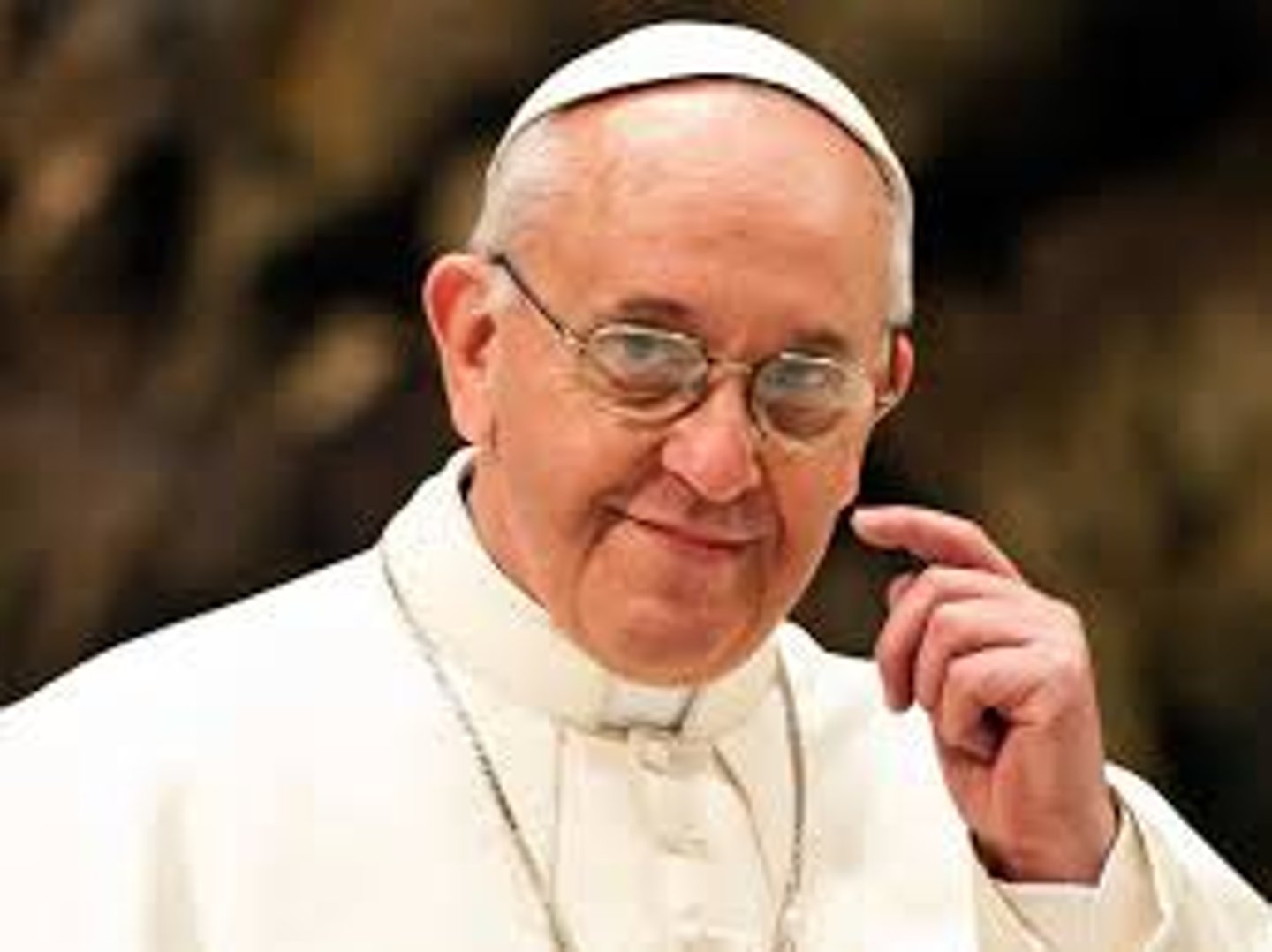
What stylistic characteristics make a work of art "High Renaissance" Consider the three main High Renaissance artists - Leonardo, Michelangelo, Raphael - you should be able to stylistically distinguish their works from those of the Early Renaissance artists in Italy.
pyramid shape, linear perspective, sfumato, referencing antiquity, chiaroscuro, idealized humans
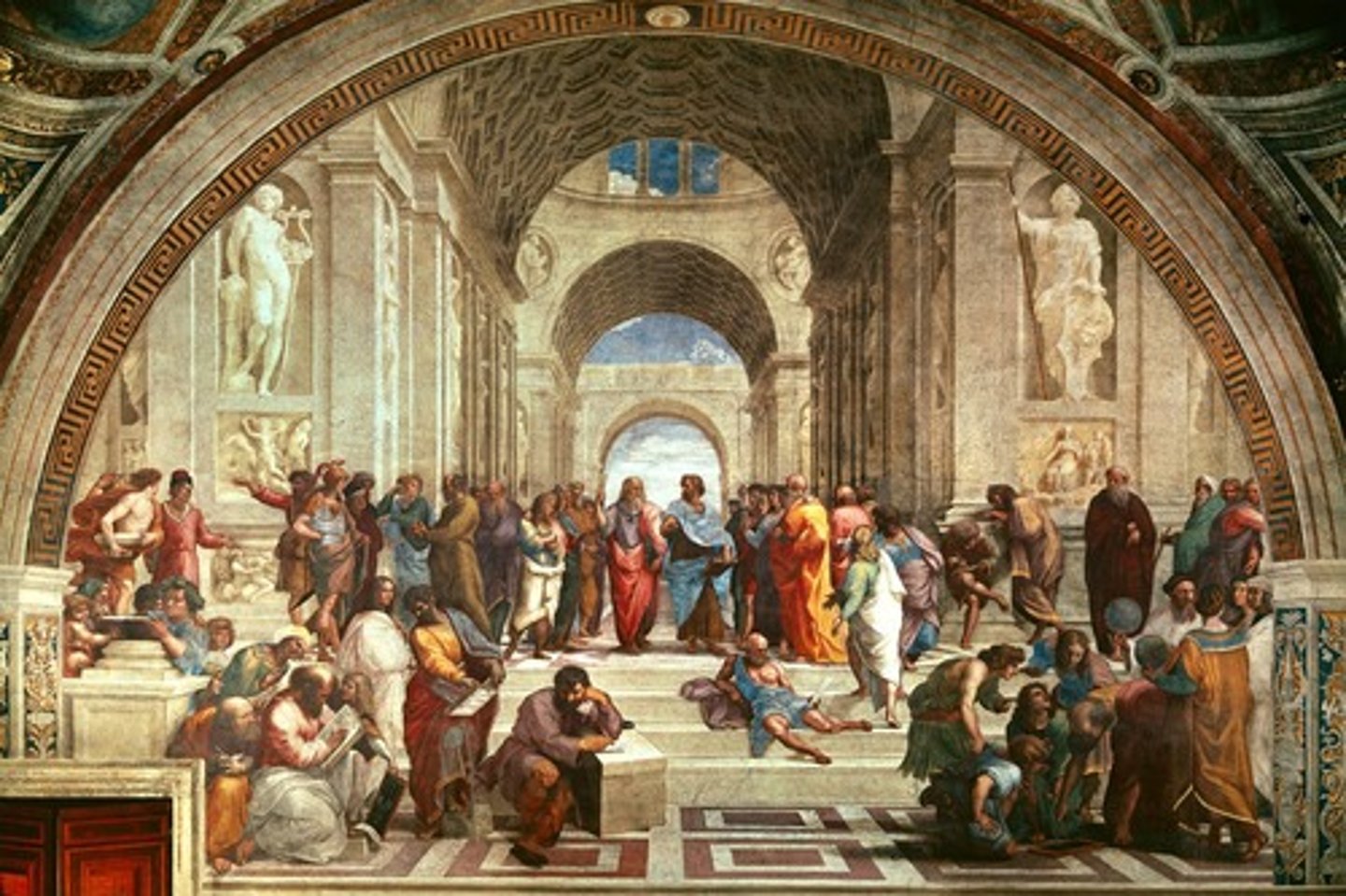
What is sfumato? How and why does Leonardo use it in his paintings?
hazy blending of light and shade in the background. Used in Mona Lisa
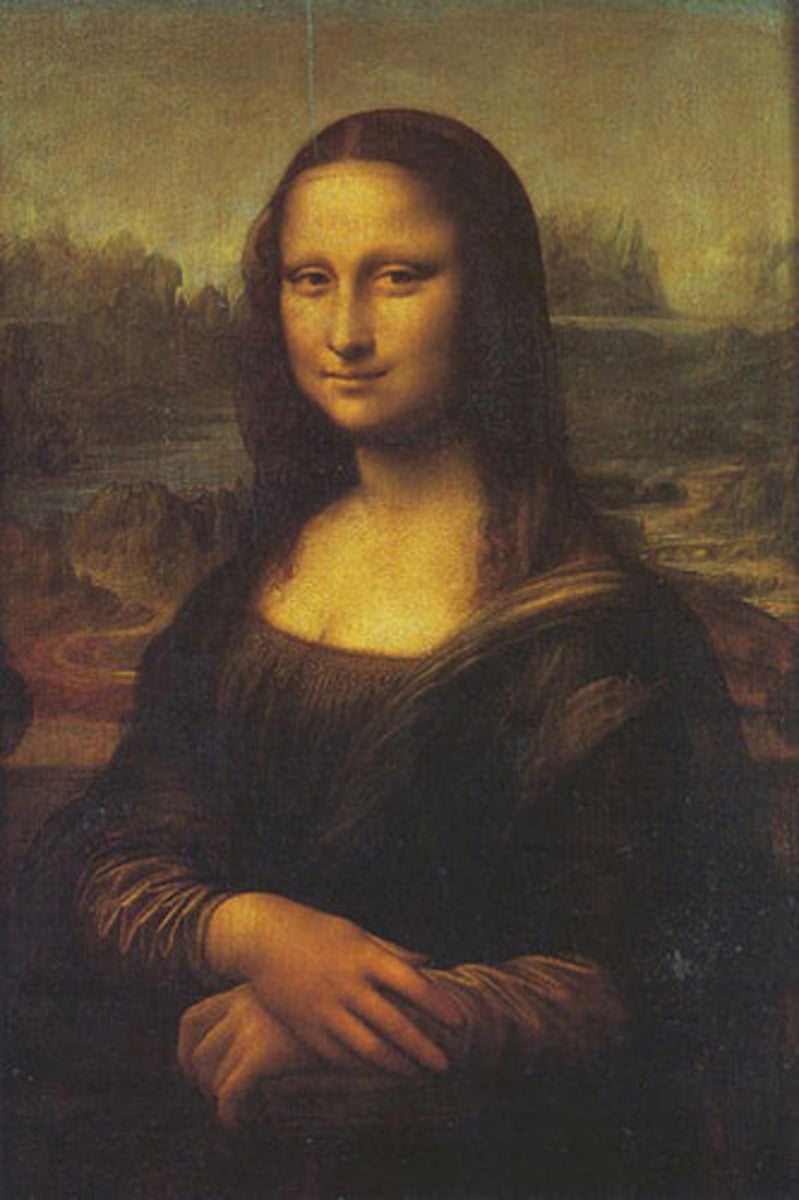
What is the narrative of the Last Supper? What is the symbolic meaning of this scene?
This was right before Christ was going to be arrested to be crucified and this was when communion was implemented. It captures the moment when Christ said that one of the 12 was going to betray him.
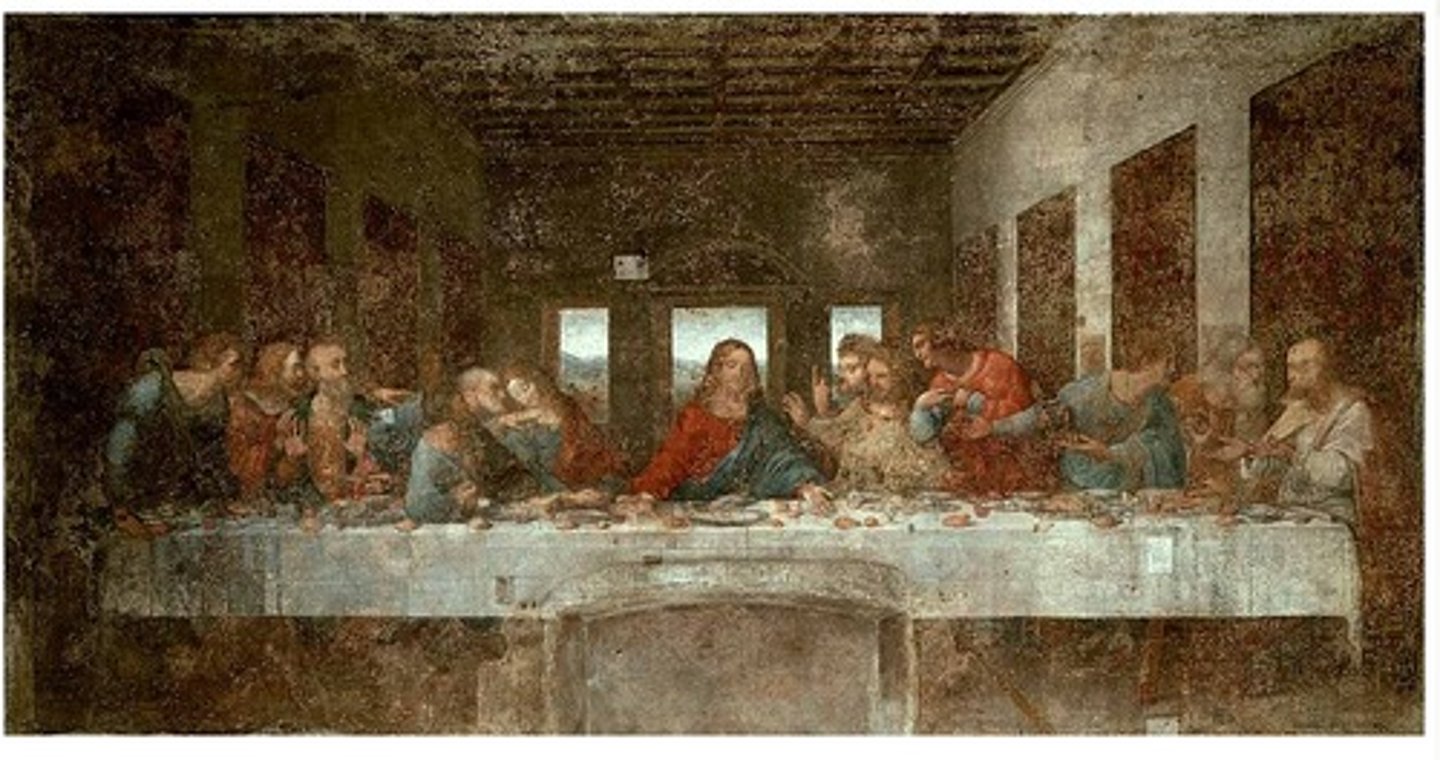
Where was Leonardo's Last Supper placed? How does the function of this location connect to the narrative of the Last Supper?
placed in the refectory of the Convent of Santa Maria delle Grazie
Setting is in a dining hall, which directly connects to the setting of the Last Supper
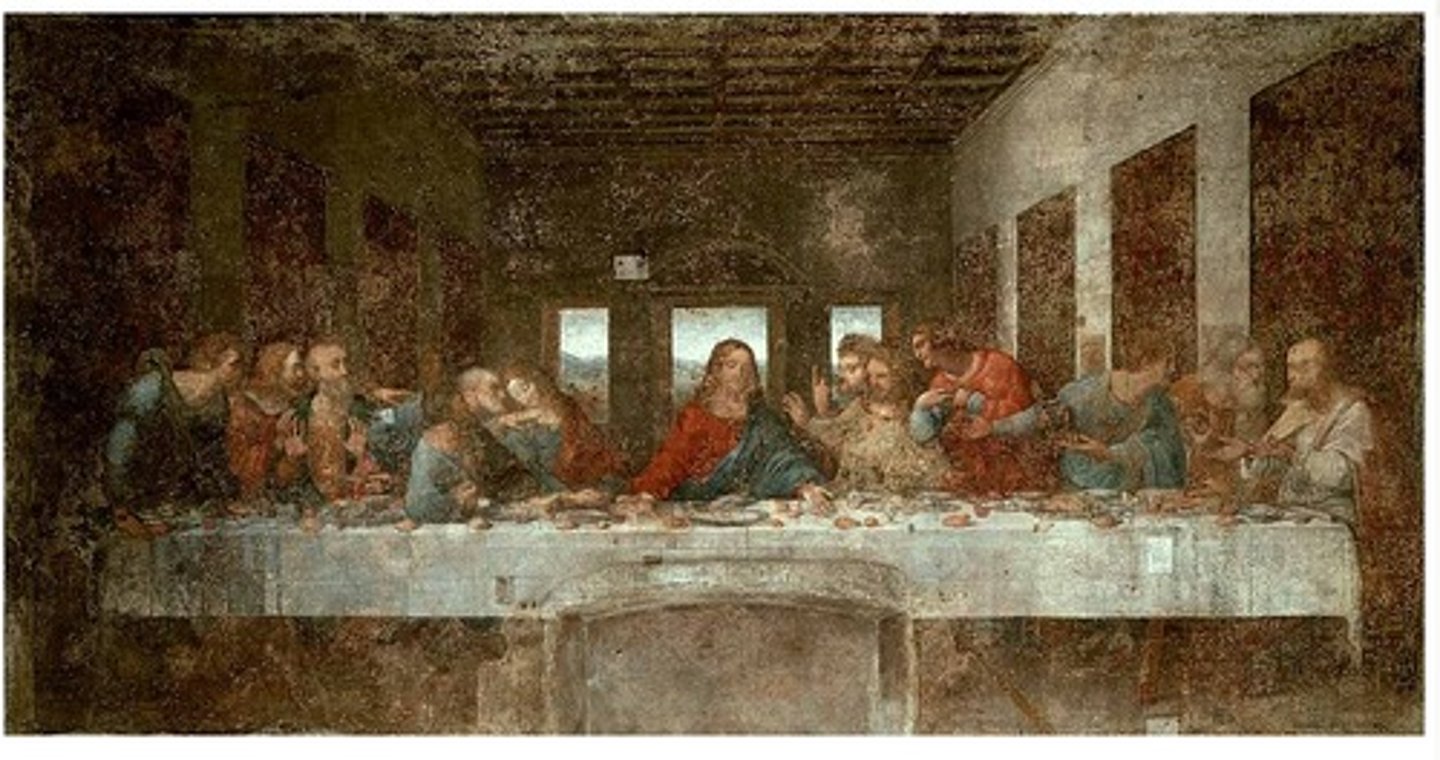
How does Leonardo use gesture, facial expression, and body position to tell the story of the Last Supper? What exact moment has been captured?
This moment is capturing when Christ said that one of them is going to betray him. All of the disciples are discussing, denying, and in a state of psychological drama. This is humanizing the sacred
Judas is the only one reaching for the bread (the body).
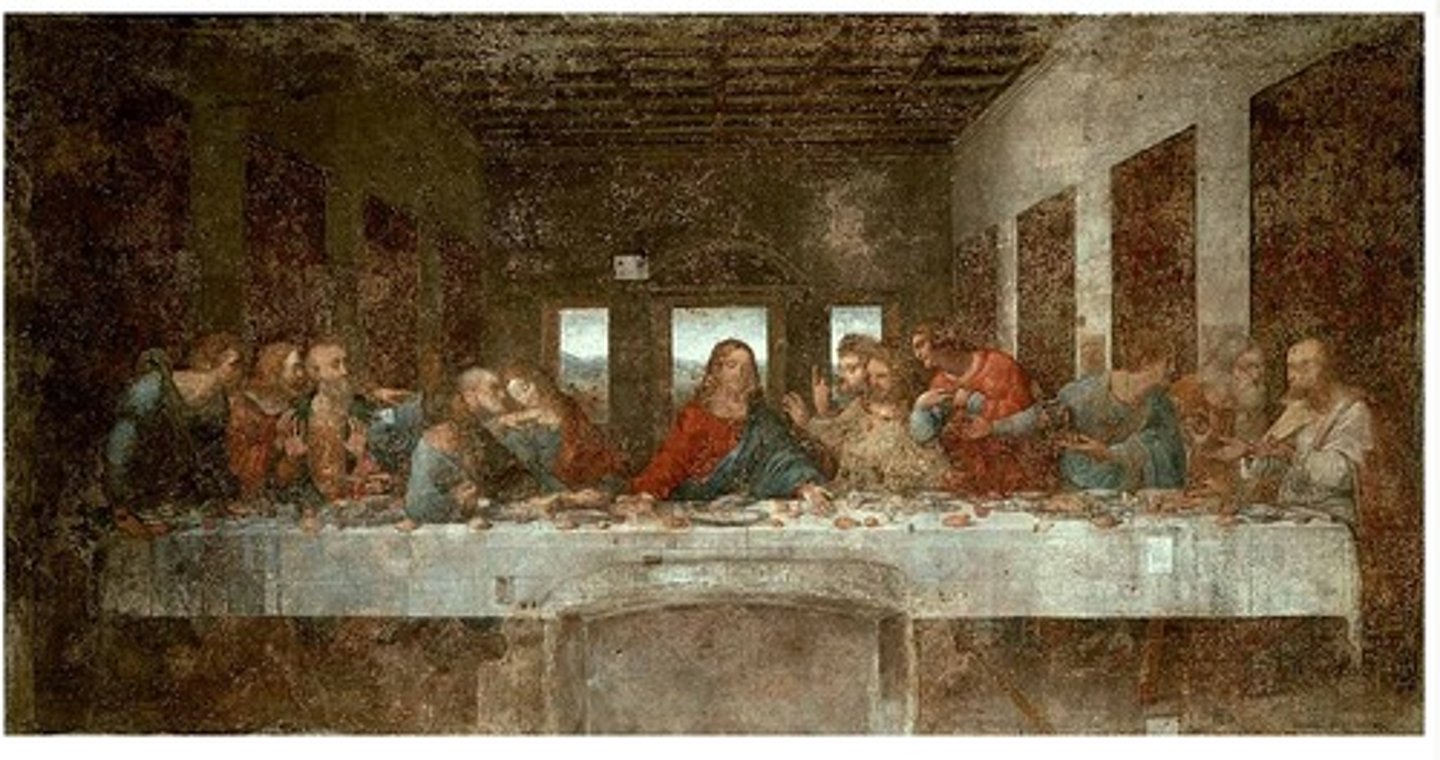
How does the original location and function of Michelangelo's Pieta relate to its subject?
This piece was completed for a funerary chapel at St. Peter's for a French Cardinal.
Invite contemplation and prayer from visitors, and linking the cardinal’s memorial with catholic mysteries of death and salvation
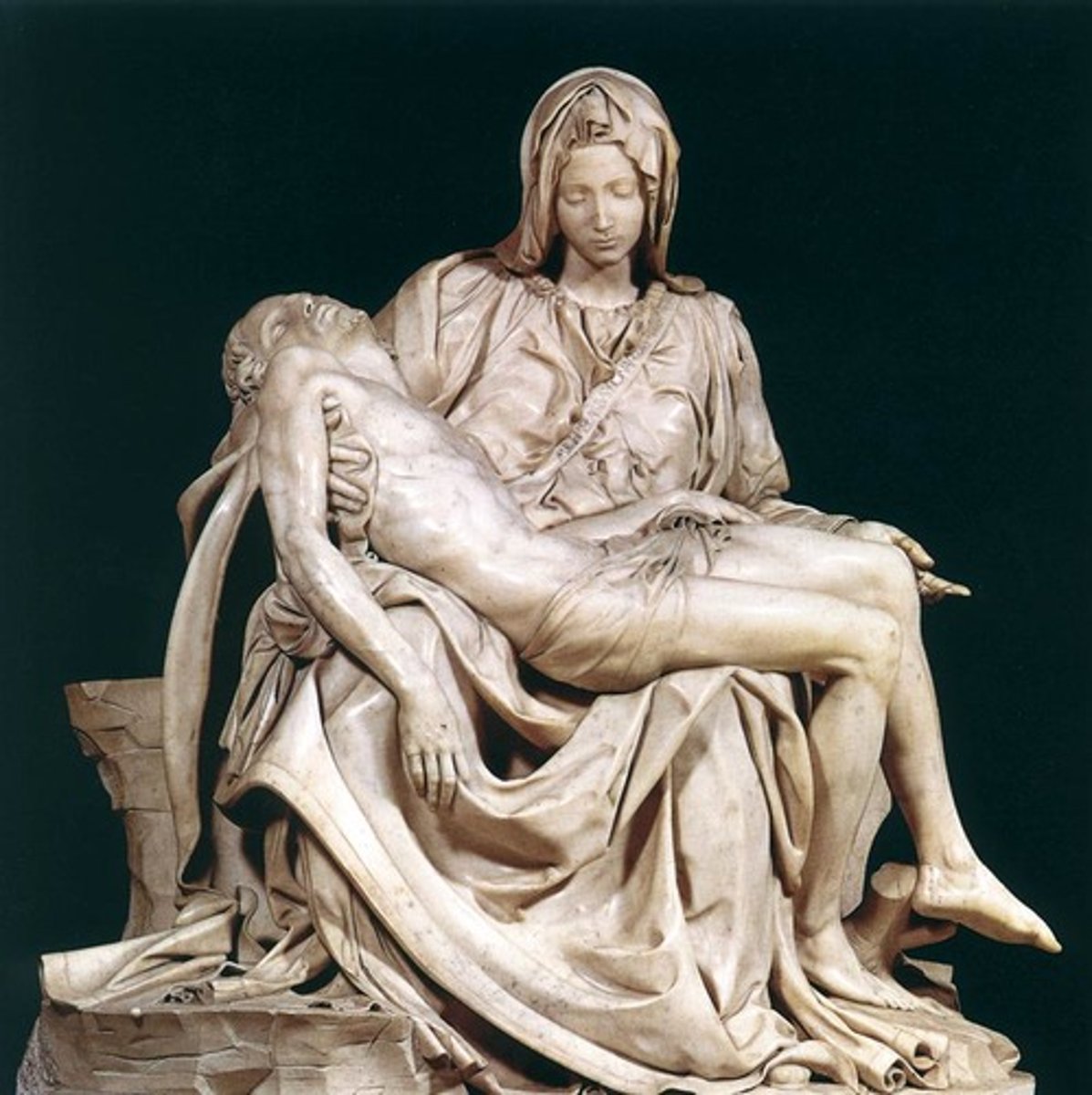
Why is the Pieta considered High Renaissance in style? What makes it unique amongst Michelangelo's artworks?
High renaissance pyramid formation. In this piece, mary's lap becomes the altar. She has fabric between her and the body, similar to how the priests practice communion, supporting the idea of transubstantiation.
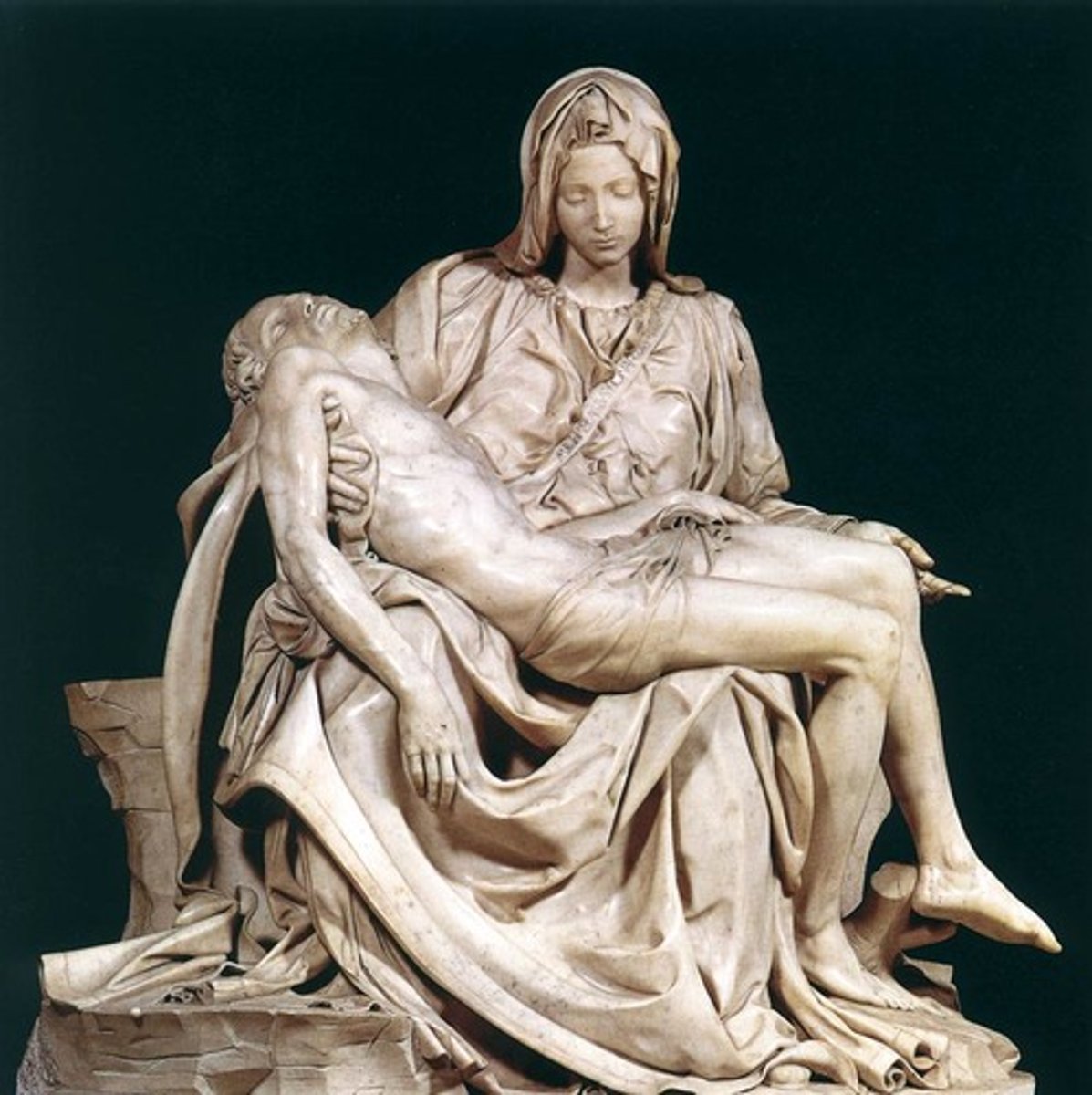
Compare Donatello's David (Early Renaissance) to Michelangelo's David (High Renaissance). What moment is captured in each case? How is the body treated? Where was each sculpture to be placed? What is the medium of each? Be able to discuss the process of bronze casting vs. marble carving.
Donatello's David is much younger. It captures the moment after he cut off the head of Goliath. This is bronze casting. Michelangelo's david is more built, confident, marble, and captures the moment before he slays Goliath.
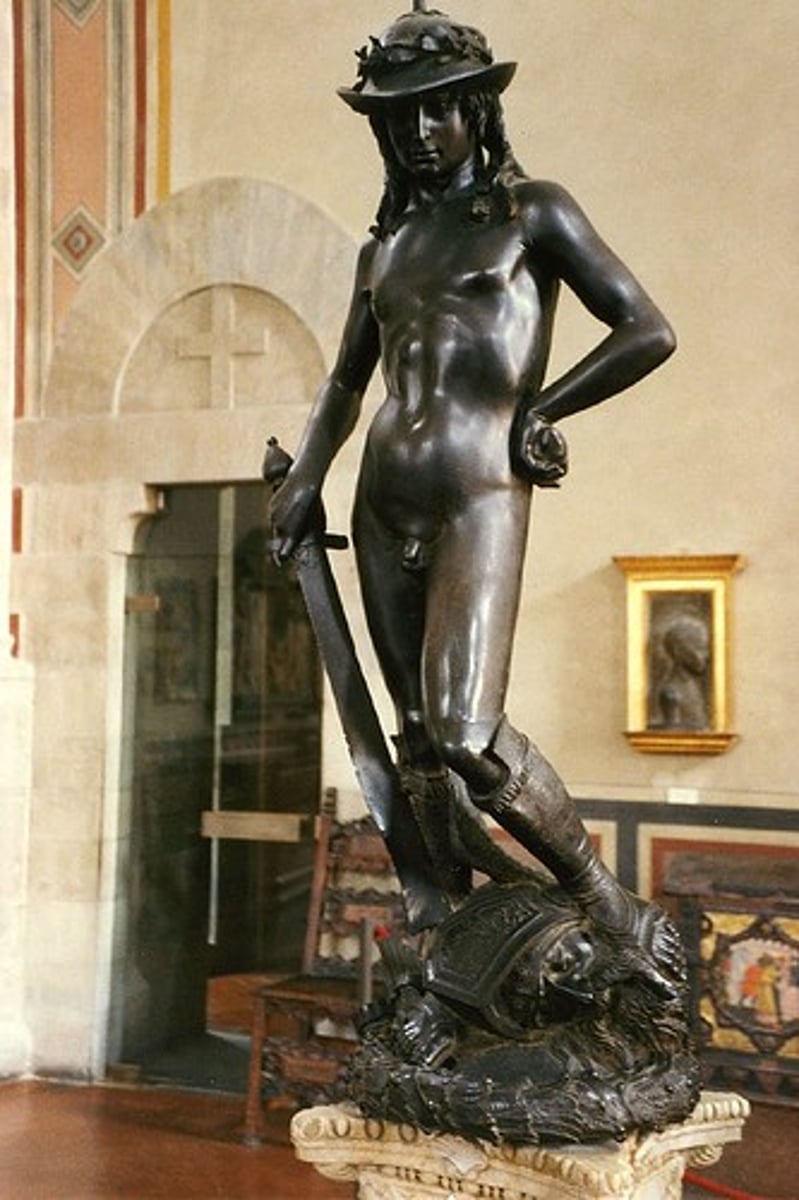
Who commissioned the ceiling of the Sistine Chapel? Be able to discuss in a general sense - the program/subject of the ceiling.
Julius II hired Michelangelo to work on his tomb and then switched his focus to the sistine chapel. It contains 9 Biblical stories.
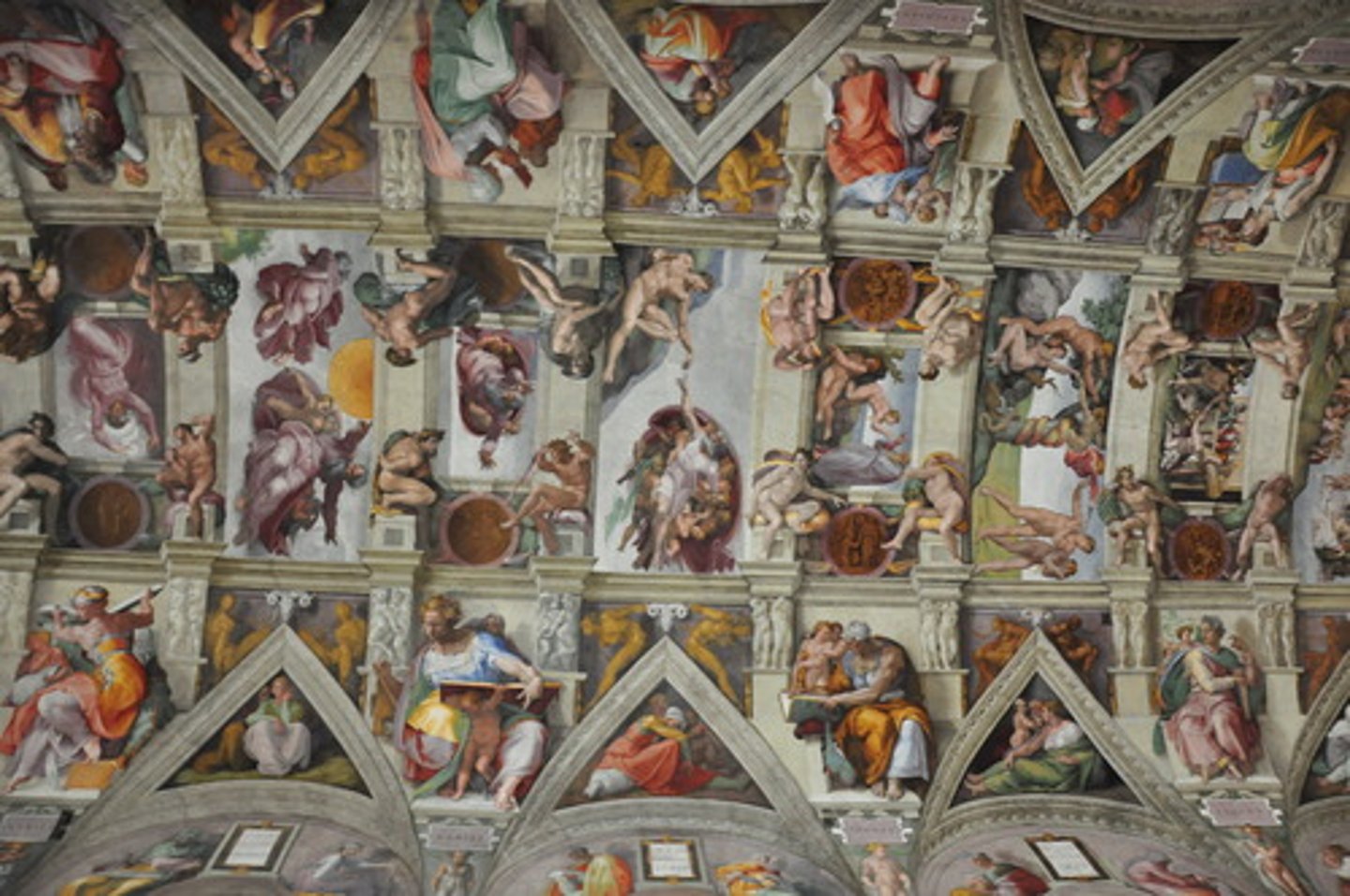
What types of works of art influenced Michelangelo's painting in the Sistine Chapel, think specifically of the Creation of Adam.
Inspired by Torso Belvedere
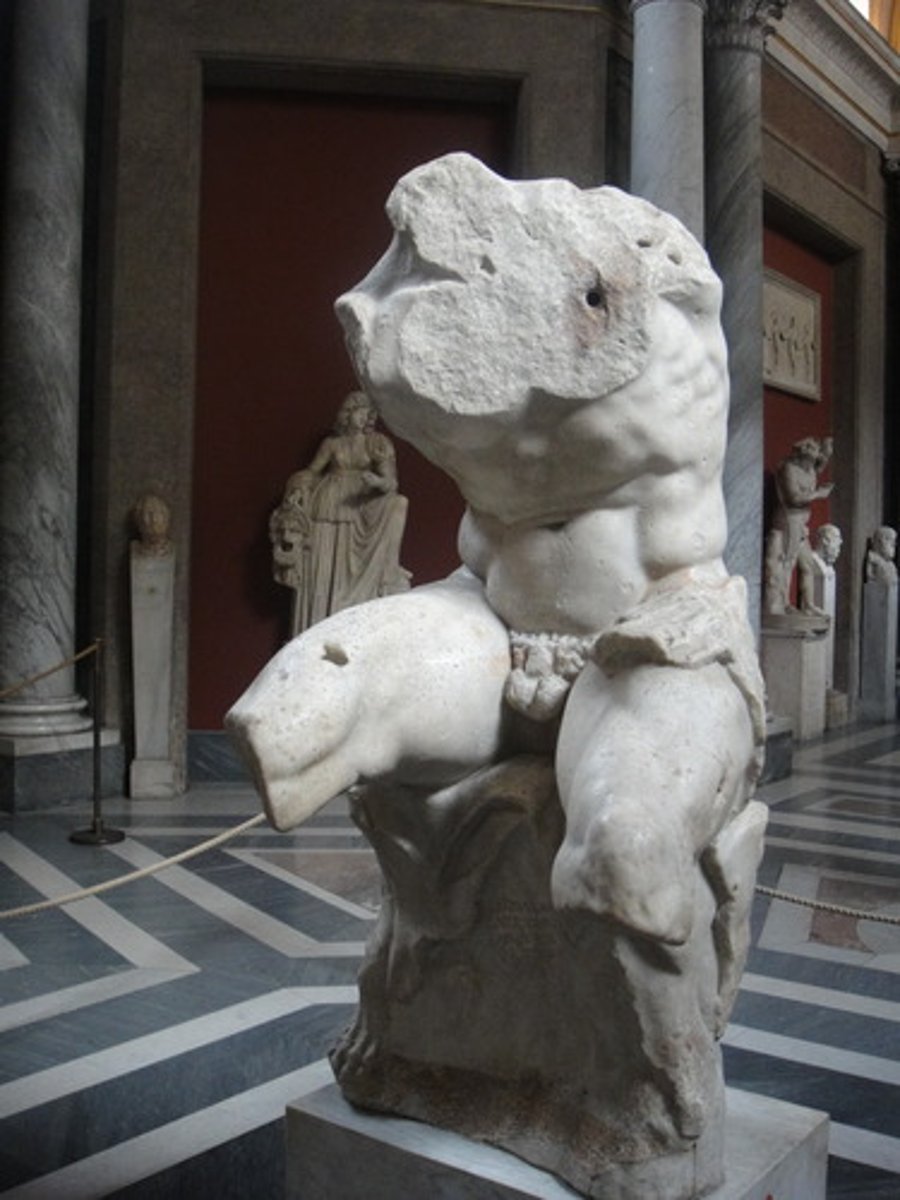
How does Michelangelo communicate the sense of divine spark passing between God and Adam in the Creation? What personal meaning might this have for Michelangelo?
line created by the near meeting of hands. Michelangelo's work was with his hands, suggesting that it was God who gave him the talent and ability to work with his hands like this.
Raphael is often considered the artist who best epitomizes High Renaissance style. Use his School of Athens to defend this characterization, specifically think about composition, figure groupings, architecture, etc.
One point linear perspective, as seen in the architecture and clusters of people, creating convincing space. All about unity, harmony, and stability
Referencing antiquity in the way the people are painted, the architecture, arches, columns, and the reference to philosophers
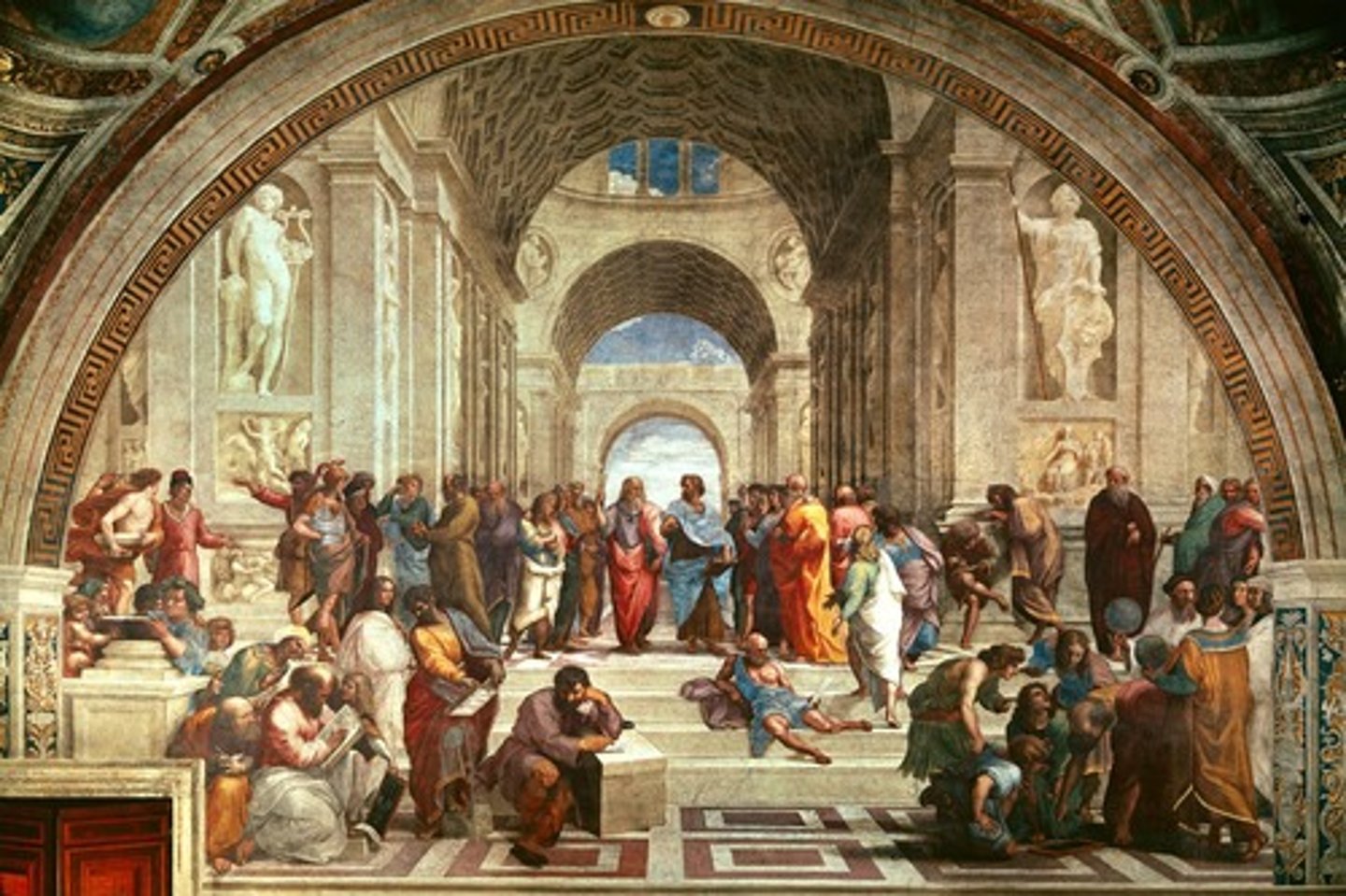
What is the subject of the School of Athens? Whose portraits are thought to appear amongst the figures and why?
Some of the "philosophers" were also argued to represent contemporary artists, such as Leonardo, Raphael, and Michelangelo AND/OR represent different aspects of the libreral arts. Elevating the status of the artist and philosopher to be among the gods.
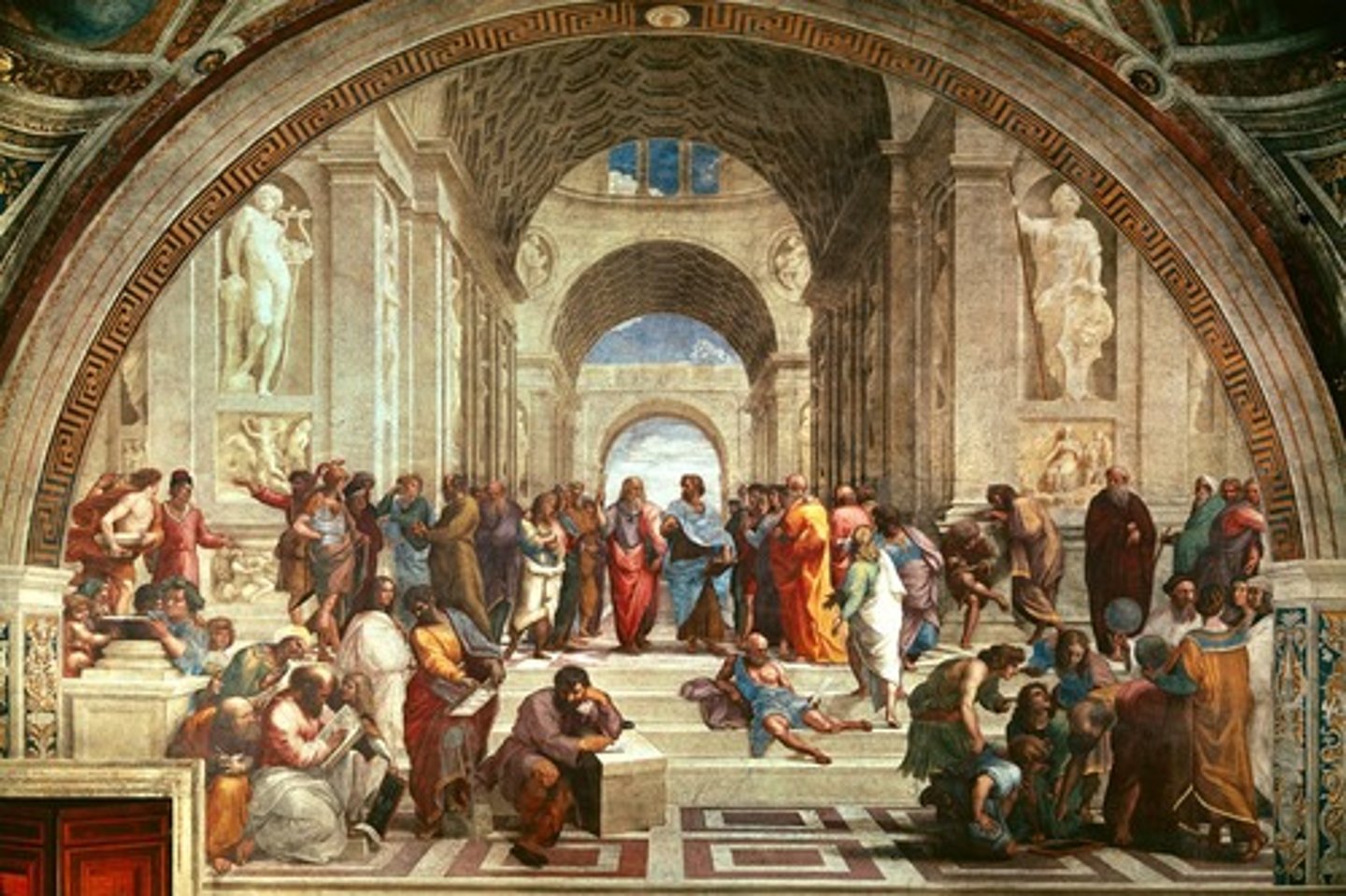
How does the Renaissance interest in the rebirth of antiquity affect architecture? (think about: building forms, building types) How do Alberti, Bramante, and Palladio each respond to the influence of antiquity?
Alberti (triumphant archform, pediment, columns, barrel shaped interior, basilica). Bramante uses a central plan. Pallido references antiquity in dome, pediment, central plan, columns
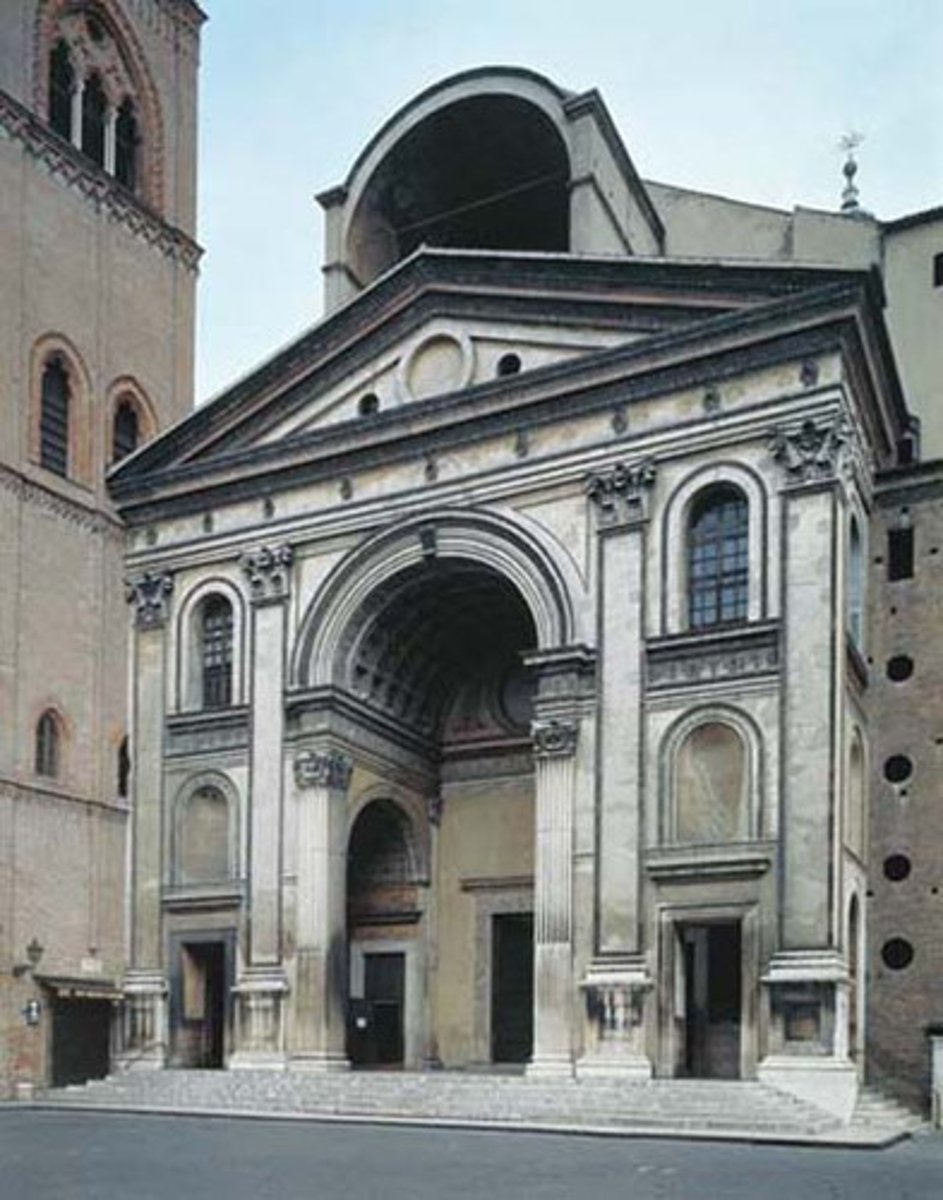
What church plan type is Sant' Andrea? Why was the church built? How does the plan relate to the reason it was built?
basilica plan
built to house drops of christ’s blood
accommodate large numbers of pilgrims on holy days to see the relic
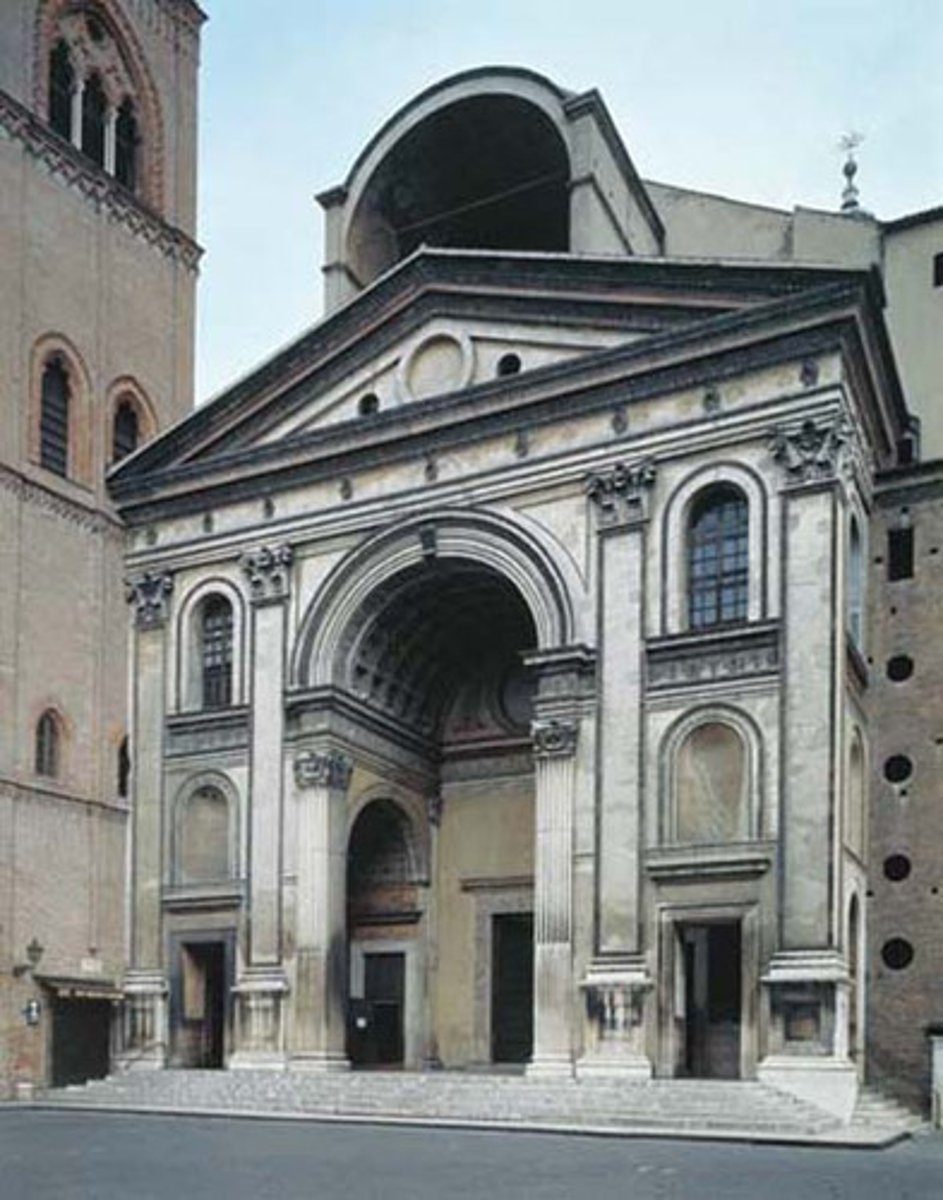
What spot does the Tempietto mark? Why is it a centrally planned building? What classical elements does Bramante embrace? Compare the Tempietto to Alberti's Sant'Andrea. Although both embrace classical influence, what are some major differences in the two structures?
Marks St. peter’s crucifixion
Central planning - circular design, harmony, ideal forms
Embrances a dome, columns, no arches
Sant Andrea: central, circular plan with dome and collonada; basilica plan church focusing attention on the altar, uses arches
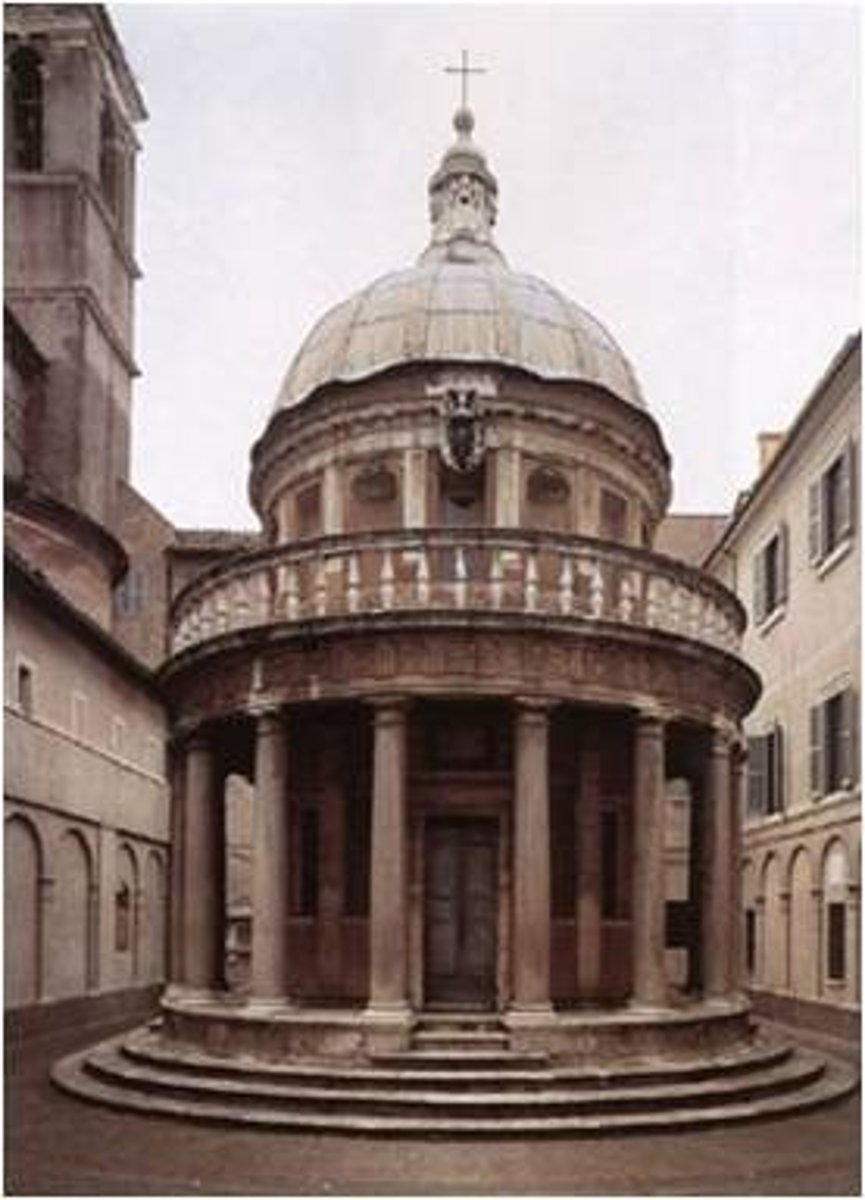
Discuss the evolution of St. Peter's basilica. What was the original plan type? And the plan types of Bramante and Michelangelo? What were the inspirations for these later plans? Why did Pope Julius II wish to rebuild St. Peter's?
The old st. Peter's was a basilica plan, but Bramante's plan is a central plan. Bramante and Julius II both die before St. Peter's is finished, so Michelangelo comes in and finishes it, unifying the space and making it more sculptural.
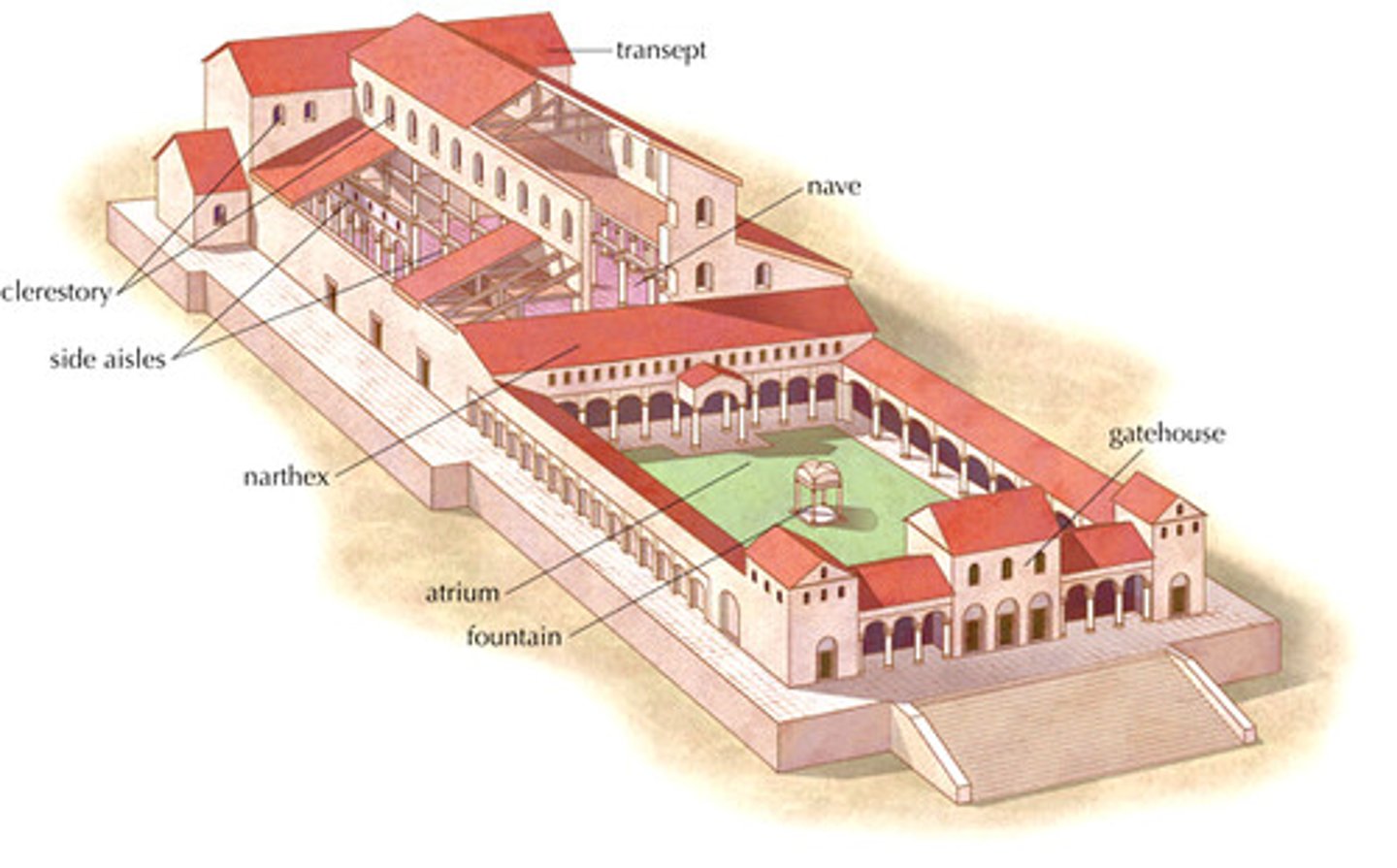
Michelangelo was at heart a sculptor no matter what the medium. How does the architecture at St. Peter's resemble sculpture?
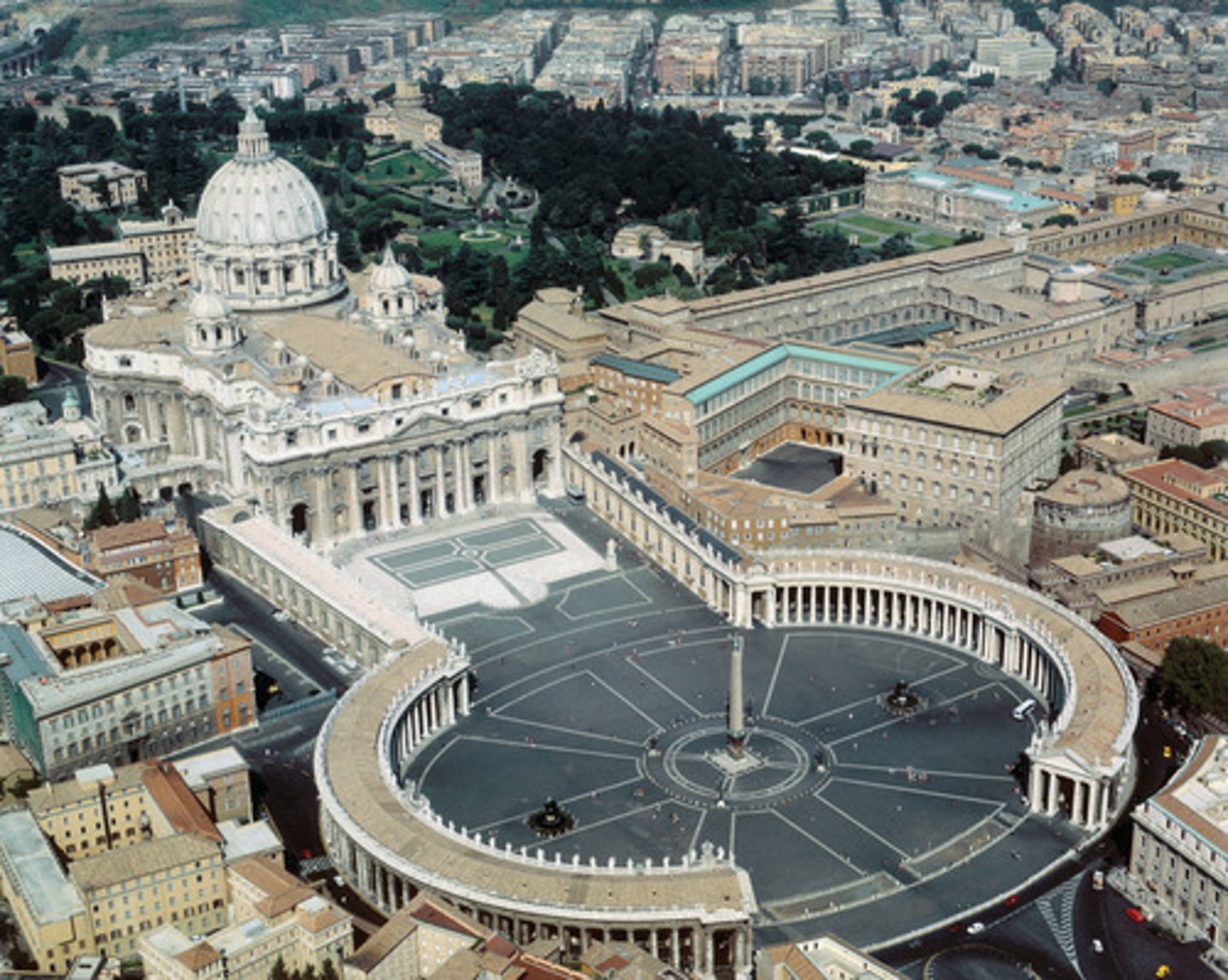
Many Renaissance architects, including Alberti and Palladio, wrote treatises, mimicking the most famous of ancient architects, Vitruvius and his Ten Books on Architecture. What was the impact of Palladio's Four Books on Architecture?
Teaching you how to build things in this style. Teaching anyone who can read. Makes a lot of copies in various languages, which reaches more people than who can go see the house
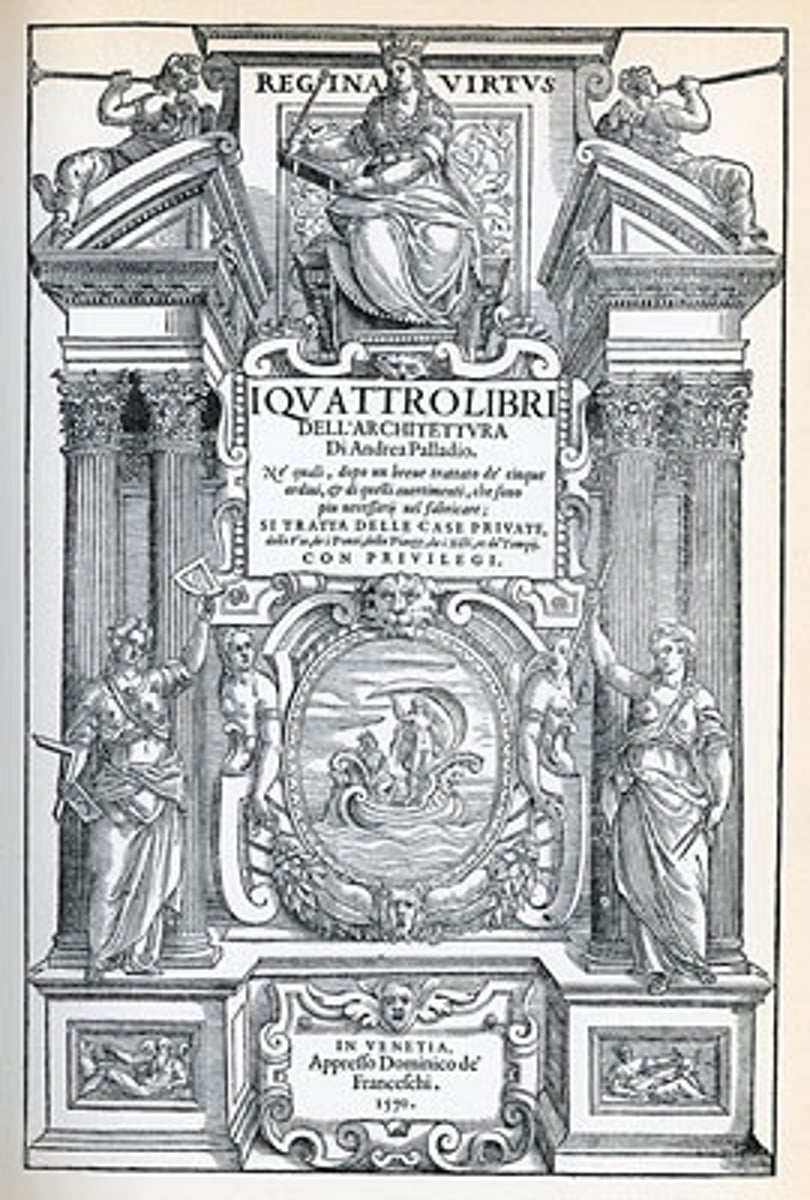
What are the key stylistic characteristics of Mannerism? Why does this style develop? What are the stylistic aims of Mannerist artists? How do Mannerist artists achieve these stylistic aims?
hyper-idealization, distorted human forms; staged, awkward movement; exaggerated poses; crowded, unorganized compositions; nervous, erratic line; sour color palettes, and ambiguous space. Created in response to the high renaissance. Colors are very high key, upside down pyramid, and figures seem to have no weight. No sense of compositonal balance.
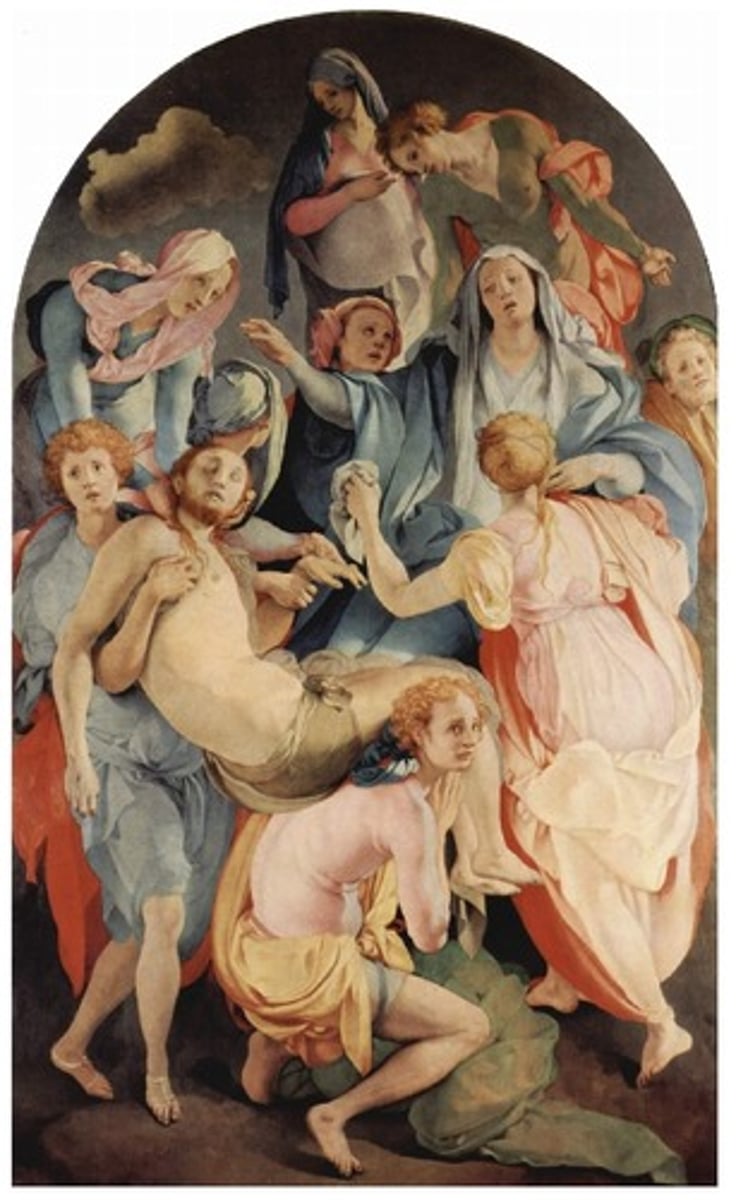
Be able to discuss how Mannerism relates to AND diverges from High Renaissance style. How did Mannerist artists react to High Renaissance artists and their works? Think specifically of Pontormo's Entombment.
The figures are almost floating and seem to lack weight. It is difficult to understand how they exist in space. Colors are less deep, very sherbert (high key). The center of the composition is a whole. The composition creates an upside down pyramid. The art of the Italian Renaissance is much more grounded and stable than this.
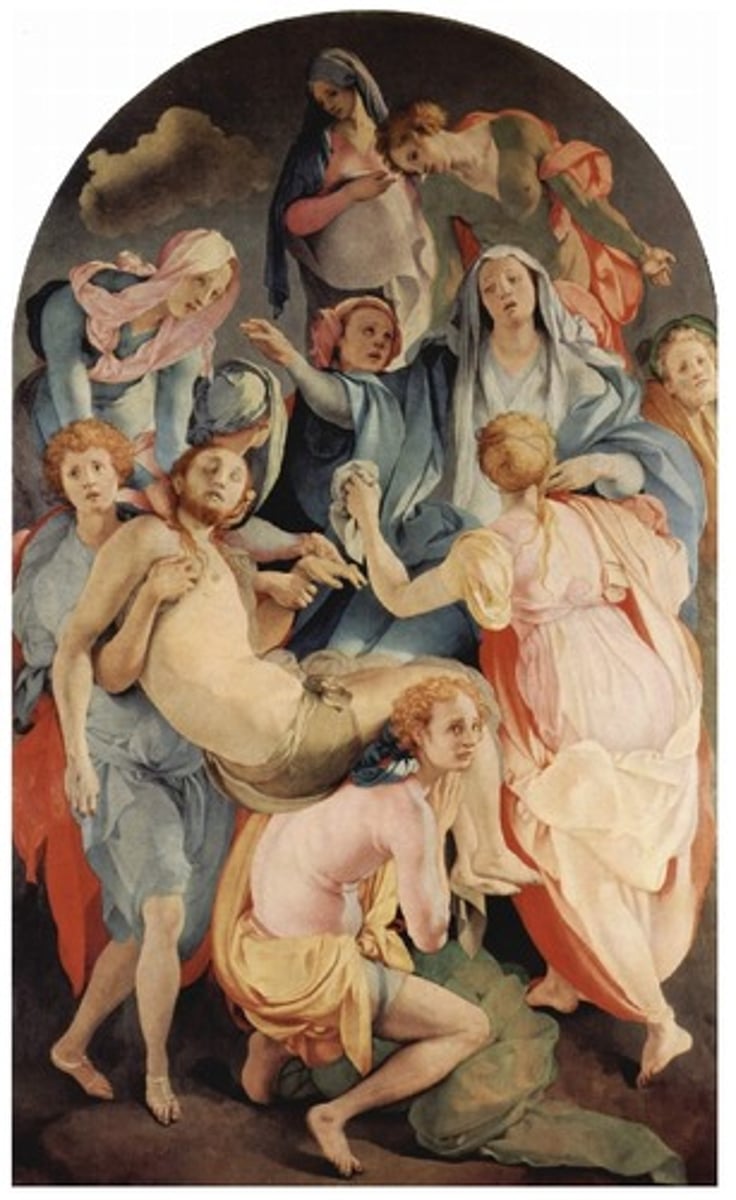
How does Titian's Venus of Urbino reflect classical antiquity and how does it diverge? What is unique about his Venus? Where is she placed? What do some scholars believe may have been the function of this painting?
Referencing antiquity in the mythical "Venus" subject matter, one-point perspective, and some architecture
Sensuous and soft. This is probably a celebration of marriage picture and a commentary on fertility. Cassone chest - given to women when they got married.
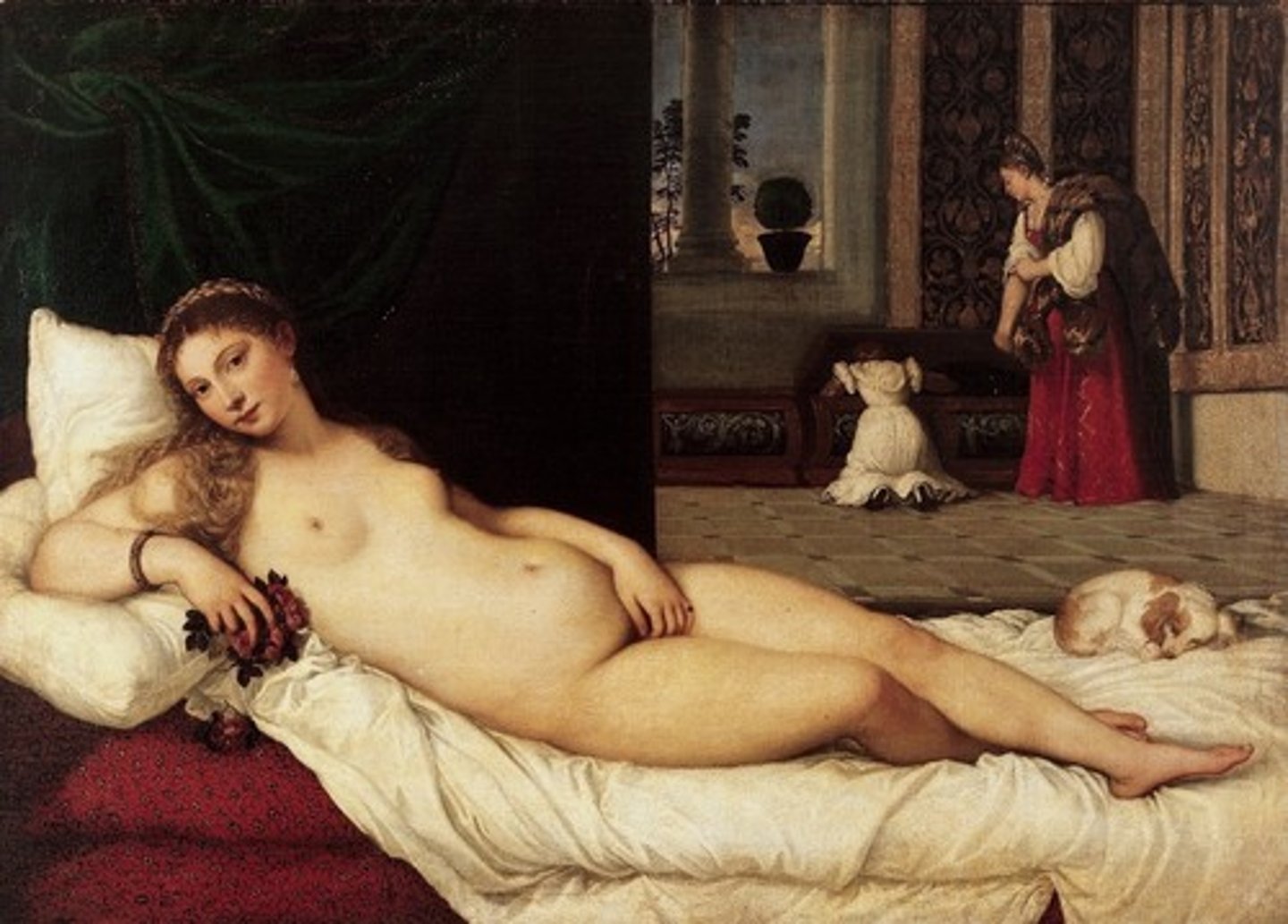
Identify some key stylistic attributes of Venetian Renaissance painting that scholars use to set it apart from painting in other Italian cities during this period. Use Titian's Rape of Europa in your answer. Compare it to Michelangelo's Creation of Adam (and be sure to discuss/understand the concepts of disegno and colorito).
Mythological subject matter
Soft, painterly quality
Disegno (drawing, linear style; associated with Florence, Rome)
Colorito (brushiness, painterly style; associated with Venice)
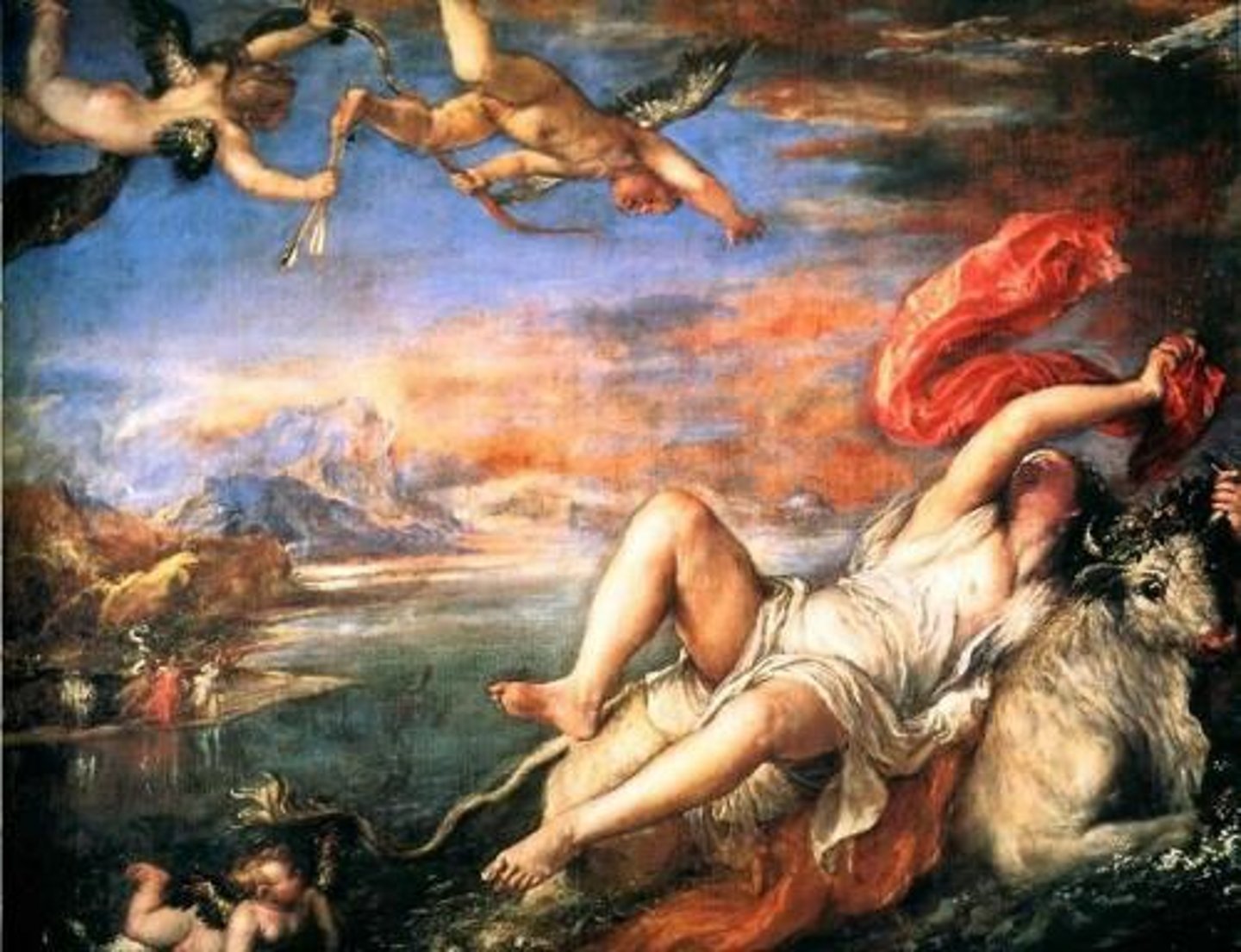
The Council of Trent was established by the Catholic Church in 1545 to meet the challenges posed by the Protestants and other Reformers. What did the Council have to say about the appearance, style, and subject matter of religious artwork?
series of meeting 1545-63 trying to address the challenges faced by the Catholic church. They develop certain policies that become the counter-reformation. Put in motion by Paul III.
Stressed the importance of saints, relics, and worship before images of Christ, Mary, and the Saints
Thought they needed to make more images that were easier to understand and help people directly connect with God
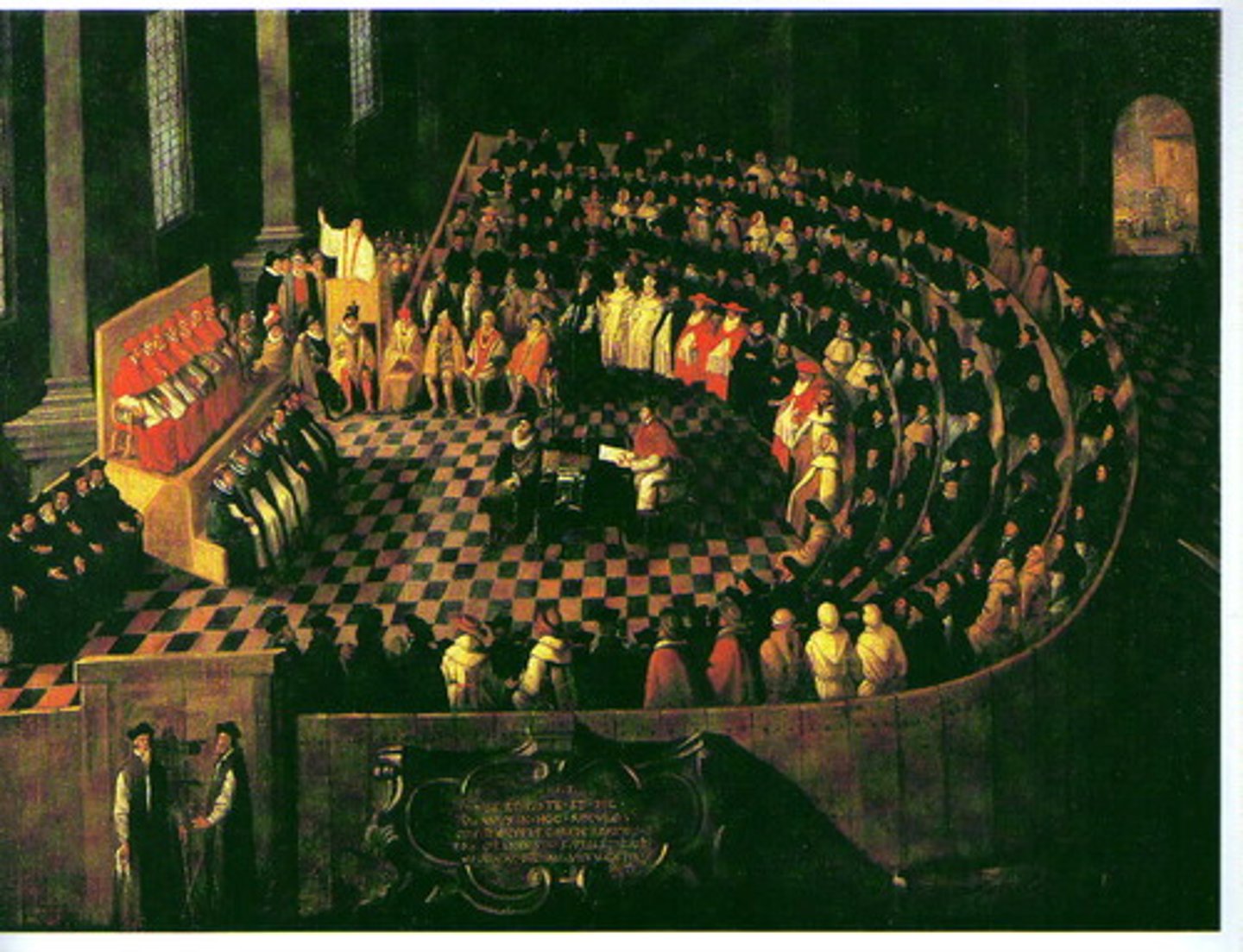
Michelangelo's Last Judgment is considered to be a very controversial work of art. What makes it controversial? What ultimately happens to the work?
There was originally a lot of nudity because Michelangelo valued the sanctity of the body as made by God. But, later, someone painted clothes on a lot of them
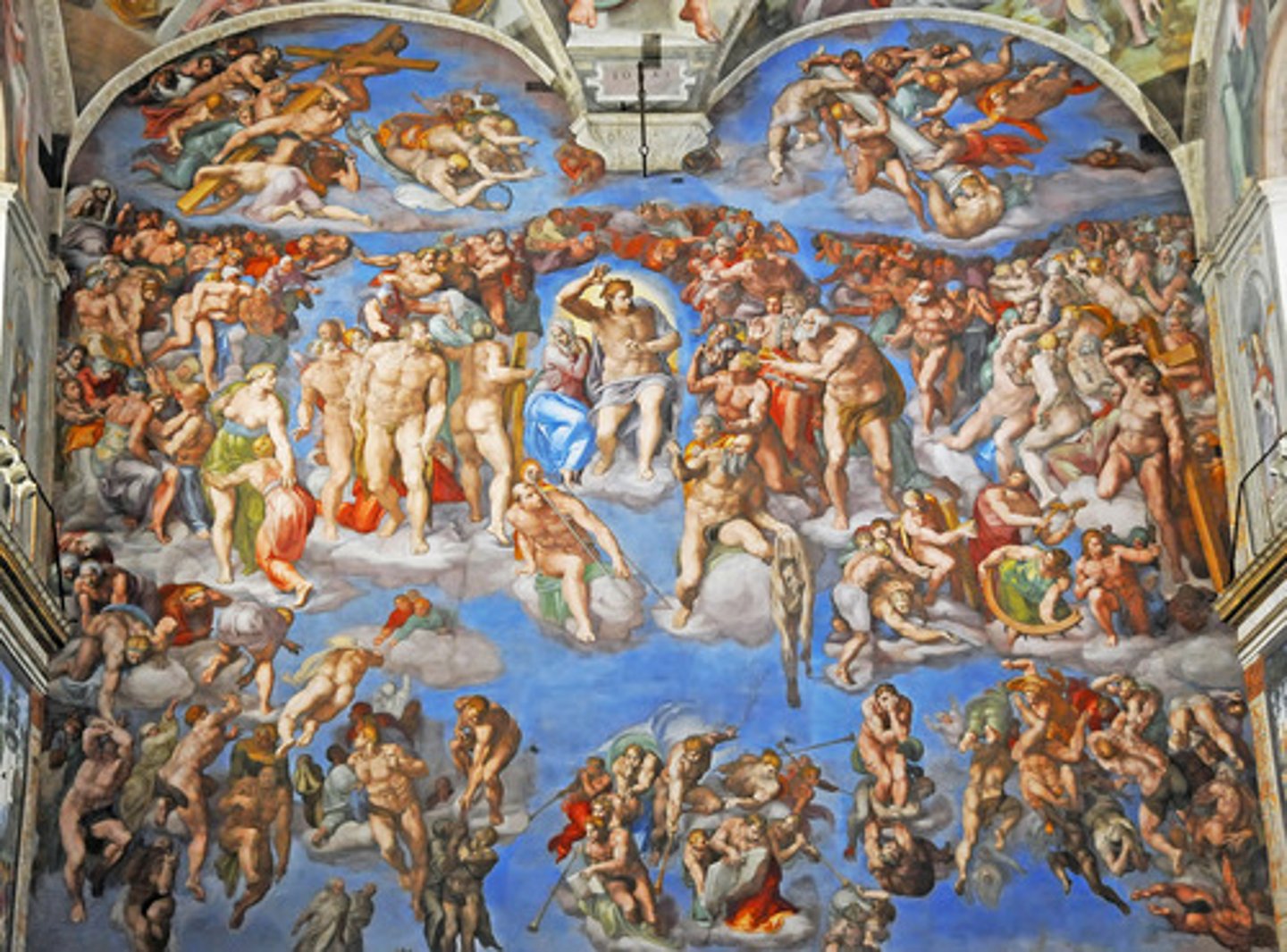
Italian artists like Tintoretto were very much affected by the upheaval in the Church in the sixteenth century. How does his Last Supper differ from Leonardo's Last Supper and how does that relate to this upheaval?
Leonardo's is more calm and stable while Tintoretto's is dramatic and diagonal. Tintoretto's is more focused on the implementation of the Eucharist and is found in an altar. Leonardo's is found in a cafeteria and is focused on the moment when Christ says one of the 12 is going to betray him. Tintoretto includes more people who would have cooked and served the food.
